
Best cameras for safari: photography equipment for African trips

Are you looking for the best cameras for safari adventures in Africa?
Finding the right safari photography equipment allows you to capture those remarkable moments with ease.
While nothing beats seeing the stunning scenery and animals roaming around in person, a good-quality camera is a valuable item on a safari packing list .
Whether you want to take photos to reminisce or elevate your wildlife photography website , there are several things to consider when deciding on a camera.
This guide details essential criteria for choosing the best safari camera for your budget and personal preferences.
How to Choose the Best Camera For African Safaris
Here are the top things to consider when looking at safari cameras.
1. What are the objectives of your stay?
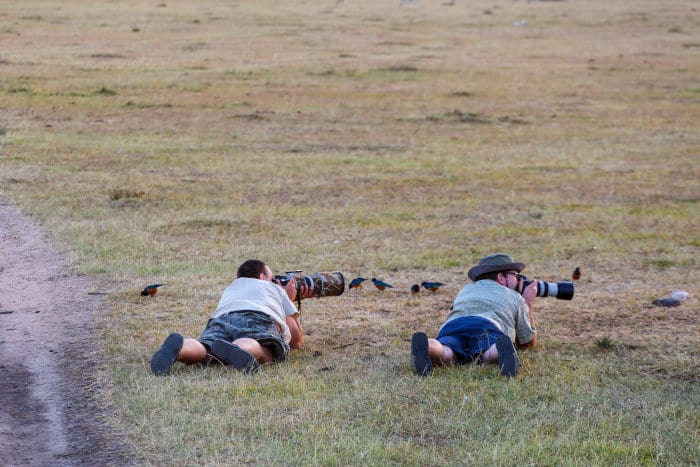
In other words, what is the purpose of your safari?
Are you out and about just to have a good time, relax and enjoy nature, or do you consider yourself a “serious” photographer looking for the “best” possible shots?
By defining clear goals and knowing what you’re after, you’ll be able to choose the adequate camera equipment easily.
It’s important to decide on a budget that you want to allocate to your safari photography equipment. This will depend on the objectives of your stay, as the price you put in will affect the overall quality of your shots.
There are pros and cons to different types of camera equipment, and it would depend on the photographer’s skills too.
Generally speaking, buying a compact digital camera is by far the cheaper option and perhaps also the better one for the majority of amateur photographers. In this case, prices range from $50-$500+ .
However, if you’re a connoisseur, you may want to choose more expensive and, overall, higher-quality camera equipment.
DSLR cameras range from $300-$2000+ , and camera lenses are often bought separately.
Expect to pay anything between $200 and $7000+ extra depending on lens type , performance , and precision (aperture quality is key).
3. Type of camera

Are you more of a scenery fan, or do you enjoy capturing animal photography, portraits, and close-ups? Your interests and budget will affect the type of camera that you might be interested in.
The best camera options for safari photography include:
- Compact digital cameras
- DSLR cameras
- Mirrorless cameras
- Superzoom cameras
- Smartphones
Smaller camera models ( compact digital cameras ) are usually the best buy for the general public. They are very easy to use , lightweight , and feature a variety of different zoom lengths , from wide-angle to super zoom.
The major downside of compact digital cameras is that they don’t accept interchangeable lenses (although some models can use add-on converter lenses).
The best alternative to compact cameras is DSLR ( Digital Single Lens Reflex ) photography. DSLR cameras are excellent for both landscapes and close-up photography. All you need to do is change your lens accordingly.
Use wide angles ( 18-35 mm ) for picturesque photographs and super zoom lenses for animal portraits and close-ups. 18-200 mm usually does the trick, or try 28-300 mm for best results.
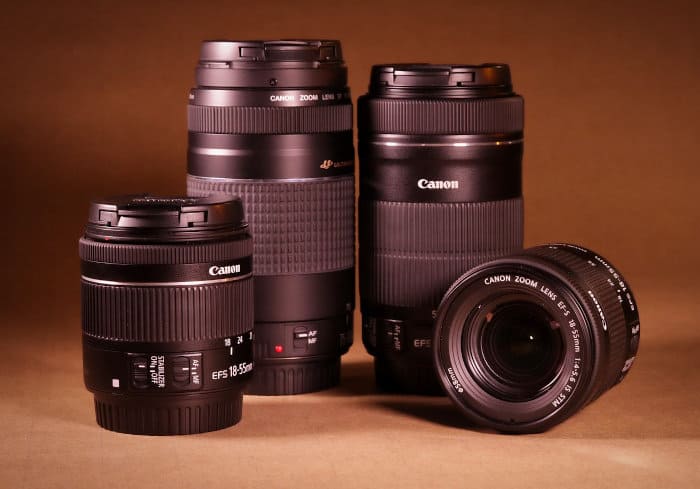
Both DSLR and mirrorless cameras have larger sensors . The improved low-light performance allows you to take breathtaking safari photos.
When comparing these two options, DSLR offers enhanced low-light shooting , a longer battery life , and a broader selection of interchangeable lenses .
Mirrorless cameras are great if you want a lighter and more portable option. It also offers fantastic video quality, and you can shoot at faster speeds – so keep an eye out for a cheetah running in the savannah.
A superzoom camera is another popular option for safari photography. It’s larger than compact cameras, and can’t fit in your pocket, so be sure to bring a camera bag or holder along.
Superzoom cameras are a great value-for-money option. It usually has big zoom lenses to take photos of far-away subjects. However, there can be motion blur when capturing shots of wildlife running in the distance.
For those searching for the best superzoom camera for safari, the Panasonic Lumix FZ80 and Sony RX10 IV are excellent picks.
Taking photos on your smartphone is a good alternative if you’re not in the mood to carry extra equipment. Its small size and lightweight build allow you to keep it in your pocket and easily snap a shot.
However, you’re likely to have poorer image quality and limited functionality than the above-mentioned options.
When selecting the best camera for safari and wildlife experiences, it’s essential to think about how much weight you can allow for camera equipment in your safari luggage .
Bear in mind that while compact digital cameras are usually lightweight (100-500 g), some DSLR equipment can be extremely heavy .
For instance, certain types of super zoom lenses can weigh between 2 and 5 kg alone (plus add another 600 to 1200 g for the body).
While a lightweight camera provides convenience, it may come at the cost of some functionality. That said, it’s best to find a balance between your preferred image quality and weight.
Note that digital camera accessories are not only heavy but are also much larger in size and thus take up a lot more space . So carrying them around can be a challenge.
5. Ease of use

When it comes to ease of use, not all cameras are equal. As most of us are familiar with smartphones, these will likely be the easiest to operate .
On the other hand, DSLR and mirrorless cameras require time to learn their settings and how it works .
Images shot on a smartphone can sometimes appear better than ones taken on a DSLR or mirrorless camera. However, this can be a result of an inexperienced user.
For a point-and-shoot experience, opt for a smartphone or compact camera. If you’re willing to put in the hours, a DSLR or mirrorless is worth the practice time.
6. Camera lens for safari
For awe-inspiring shots of the animals in Africa , it’s good to have a lens that allows for close-ups . As Africa is home to outstanding landscapes and sunsets , you should also consider a wide-angle lens . However, the increase in width comes with less zoom.
Long-length lenses of around 135mm and up are excellent for close-ups , while short-length ones that are less than 50mm are better for capturing landscapes .
If you want the best of both, opt for multiple lenses , you’ll get a wide angle and a sufficient zoom length.
Wondering, “what is the best canon lens for safari?” There are several options for every budget.
Canon EF 70-200mm f/2.8L IS III USM is a superb pick, and if you want a more affordable lens, check out the Canon EF 70-200mm f/4 IS USM .
7. Sensor size
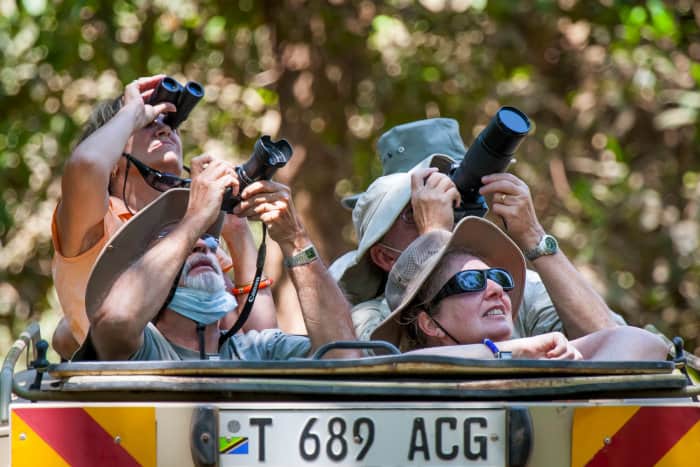
The sensor is an important factor to consider, as it significantly influences the photo quality. It records the light and creates a digital image .
Sensor sizes range from around 5.76mm x 4.29mm to 36mm x 24mm . Typically, the size of the sensor will impact the camera and lens size.
Smartphones and compact cameras generally feature smaller sensors , while DSLR and mirrorless cameras have bigger ones.
With larger sensors, you can capture more light . Thus, it performs better in low-light conditions.
So, what’s the catch? Larger sensors are often pricey, and you’ll likely find them in high-end cameras.
8. Camera brands
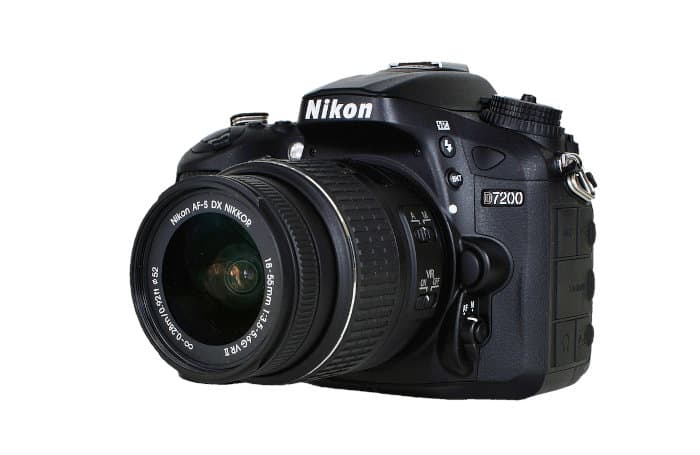
For compact digital cameras , the market is extremely competitive, and most models give you similar options and quality products.
To keep it safe, though, any of the following camera brands should give you great satisfaction: Pentax , Canon , Olympus , Sony , Nikon , Panasonic , Leica , and FujiFilm .
When it comes to DSLR cameras , stick to the big guns; Nikon (the D3400 is top-notch equipment already, available from $499 ), Canon ( EOS family), and alternatively, Sony .
Safari Photography Equipment List: Must-Have Camera Accessories
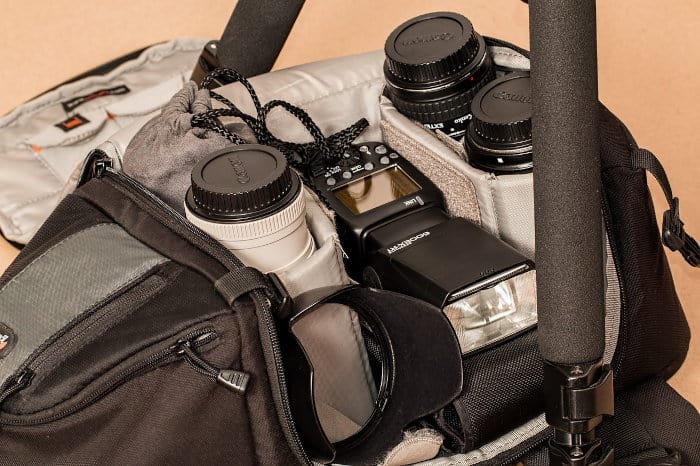
After choosing the best camera to take on safaris, you may want to pack accessories too. Here are a few handy items to bring along on your African safari :
- Spare batteries
- USB battery charger
- Memory cards
- A monopod or tripod
- Photography bean bag
- Digital image storage devices
- A camera bag
- A comfortable camera strap
- Waterproof bags
- Camera cleaning kit
Tip: If you don’t want to spend money on a tripod, a bean bag is a cost-effective alternative, especially for vehicle-based photography.
The Best Camera for African Safaris: Tips
Now that you know what to consider and which camera accessories to take with you as you venture out into the wild, here are a few more tips to get the best shots.
When it comes to stunning photographic opportunities, the early bird catches the worm. So don’t sleep on those gorgeous sunrise views .
Traveling just before sunset is also an excellent time to see animals during their active periods.
The golden hour occurs at the first hour after sunrise and the last hour before sunset. During this time, you can take advantage of the natural, even light that allows for mesmerizing photos with dreamy backdrops.
You can speak to fellow safari-goers to find out about the best photography spots in the area. If you’re a bit shy, have a look at some wildlife photography accounts on Instagram – you may even get some inspiration for your feed.
If you’re taking photos from your vehicle, be sure to turn it off to prevent unnecessary shaking.
When you’re exploring, keep an eye out for smaller African animals. You might spot an intriguing insect on the ground or a beautiful bird flying above you.
And finally, having lots of patience will help you capture the perfect shot and have a wonderful photography experience in Africa.
Capture Shots With the Best Camera for a Safari in Africa
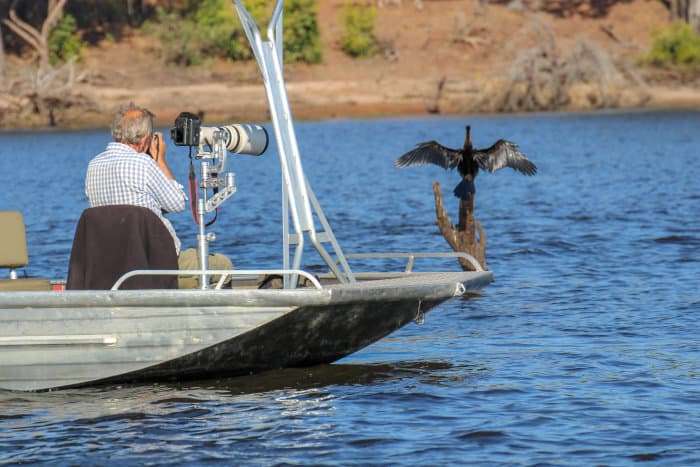
Choosing the best camera for a safari depends on several personal preferences . Hopefully, this guide has helped you decide what type of camera and accessories to take with you on your adventure in Africa.
From close-up photos of snoozing lions to capturing breathtaking sunrise views, Africa has endless photographic opportunities . So when will you book your next African safari ?
Grab your travel buddies and cameras; Africa’s animals are waiting to have their picture taken.
About The Author
Editorial Team
Related posts.
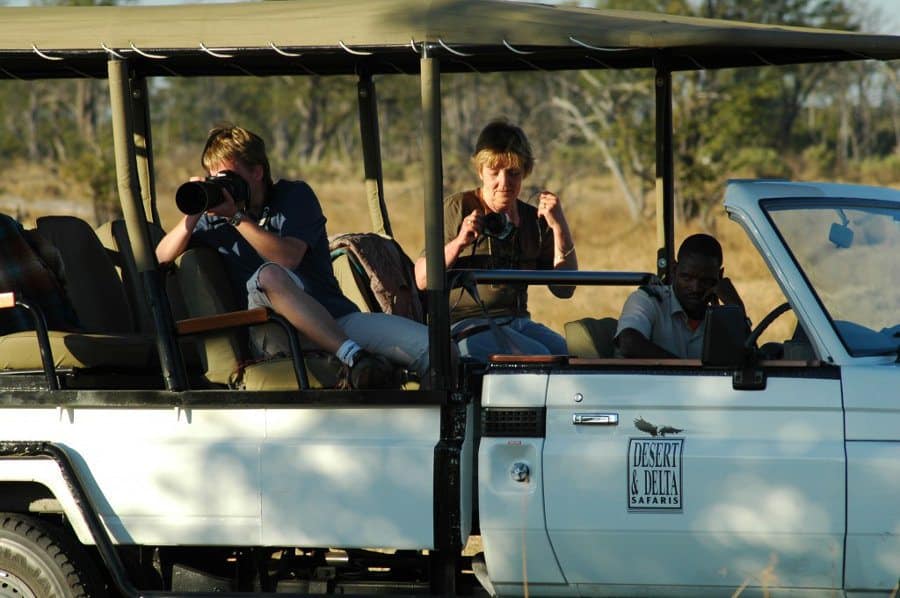
8 essential tips for an unforgettable African safari

How to choose the best safari binoculars for African safaris

Luxury safari style lodges: East Africa Top 10
Leave a comment cancel reply.
Your email address will not be published. Required fields are marked *
Safari Photography Guide
Embarking on an African safari promises an exhilarating and memorable adventure, and ensuring you have the appropriate camera gear is crucial for immortalizing those rare and exceptional moments. Canon stands out as a top choice among camera brands for safari photography, renowned for its superior image quality and robust build. This article delves into the optimal Canon cameras and lenses to seize breathtaking photos during an African safari. This safari photography guide focuses on Canon as it is the brand that I use for all my photography and I have found the bodies and lenses robust and able to withstand whatever nature chooses to throw at you while on safari.
Behind the Lens: A Peek into My Camera Bag Essentials
In the dynamic world of photography, having the right gear can make all the difference in capturing those picture-perfect moments. Here’s an in-depth look into what’s in my camera bag, a carefully curated selection of equipment that empowers me to unleash my creativity.
- Lowepro ProTactic BP 350 AW II (Camera Backpack)
The backbone of my photography setup is the Lowepro ProTactic BP 350 AW II. Crafted with precision, this camera backpack is a perfect blend of durability and functionality. Its customizable interior ensures a snug fit for my gear, while the all-weather cover provides protection against the elements. With its versatile design, this backpack is a reliable companion for photographers on the move.
- Canon R7 Camera
At the heart of my kit is the Canon R7 Camera. Boasting advanced features and a mirrorless design, it delivers outstanding performance and portability and with its crop sensor is perfect for safari photography. With a high-resolution sensor and rapid autofocus, the Canon R7 empowers me to capture crisp and vibrant images, making it an indispensable tool for both amateurs and professionals.
- Canon Mount Adapter EF-EOS R
Enhancing the versatility of my setup, the Canon Mount Adapter EF-EOS R allows seamless integration of my EF lenses with the Canon R7. This adapter ensures compatibility across the Canon lens ecosystem, giving me the flexibility to explore various shooting styles and perspectives.
- CANON EF 100-400MM F/4.5-5.6L IS II USM (Telephoto Lens)
When it comes to capturing distant subjects with precision, the CANON EF 100-400MM F/4.5-5.6L IS II USM is my go-to telephoto lens. Its impressive focal range and image stabilization technology enable me to achieve sharp, detailed shots, making it an essential tool for wildlife photography.
- SanDisk Extreme Portable SSD 2TB (Storage Solution)
Storage is never a concern with the SanDisk Extreme Portable SSD 2TB. This high-speed, compact storage solution ensures that I have ample space for my extensive collection of photos and videos. Its rugged design adds an extra layer of security, making it the perfect companion for on-the-go photographers.
- Lexar SILVER Series Professional 1667x 128GB UHS-II SDXC Memory Card
The Lexar SILVER Series Professional 1667x 128GB UHS-II SDXC Memory Card complements my camera’s capabilities with its high-speed performance. With rapid read and write speeds, this memory card ensures smooth data transfer, a crucial factor in capturing high-resolution images and recording 4K videos.
- CANON EF 24-105MM F/4L IS II USM (Versatile Zoom Lens)
The CANON EF 24-105MM F/4L IS II USM is a versatile workhorse in my kit. Its wide focal range and constant aperture make it suitable for a variety of shooting scenarios, from landscapes to portraits. The built-in image stabilization ensures sharp results even in challenging lighting conditions.
- MacBook Air 13-inch Apple M2 (Editing Powerhouse)
For on-the-go editing and organization, the MacBook Air 13-inch with the Apple M2 chip is my trusty companion. Its lightweight design and powerful processing capabilities allow me to review and edit photos with efficiency, ensuring a seamless workflow during and after photo sessions.
- Bose QuietComfort Ultra Headphones (Immersive Audio Experience)
These headphones provide an unparalleled audio experience with exceptional noise cancellation, perfect for long flights and allowing me to focus entirely on my work, whether I’m editing photos or reviewing footage, or listening to music.
- Manfrotto Element Travel Tripod (Stability on the Go)
Stability is paramount in photography, and the Manfrotto Element Travel Tripod delivers just that. With its lightweight design and quick setup, this tripod provides a steady platform for capturing long-exposure shots, group portraits, or any scenario where stability is key.
- Spare Canon LP-E6NH Lithium-Ion Battery
To ensure uninterrupted shooting, I always carry a spare Canon LP-E6NH Lithium-Ion Battery. With extended battery life, I have the peace of mind that I won’t miss a crucial moment, especially during extended photo sessions or while exploring remote locations.
- iPhone 15 Pro Max (Smartphone Camera)
Lastly, the iPhone 15 Pro Max serves as a versatile tool for quick captures and behind-the-scenes moments. With its advanced camera capabilities, it complements my professional gear and allows me to document scenes spontaneously, ensuring no moment goes uncaptured.
Photography Tips
Engaging in safari photography offers a rare chance to capture breathtaking wildlife images in their native surroundings. Yet, achieving these moments can be daunting without a grasp of the optimal camera settings. Armed with the right configuration, you can produce sharp, well-exposed photographs with vibrant colors. This section will explore the most effective camera settings and offer tips for successful safari photography.
Shutter Spee d
Capturing the essence of movement is crucial in safari photography, making shutter speed a vital setting. Opting for a faster shutter speed proves effective in freezing the motion of swift-moving animals. Typically, a recommended shutter speed of 1/1000th of a second or faster is advised for wildlife photography. Adjustments to the shutter speed may be necessary depending on the animal’s movement and the prevailing lighting conditions.
Slow shutter speed can also play a crucial role in enhancing the artistic and dynamic elements of safari photography. While a faster shutter speed freezes fast-paced movement, a slower shutter speed introduces intentional blur, imparting a sense of motion to the image. This effect can be particularly useful when capturing the graceful movements of animals, such as a herd of wildebeests or a bird in flight.
By deliberately slowing down the shutter speed, you allow more light to enter the camera, contributing to a longer exposure time. This can result in visually striking photographs, showcasing the ambient light and creating a sense of drama in the scene. It’s important to note that using a slow shutter speed requires a steady hand or, preferably, a tripod to avoid unwanted camera shake.
Experimenting with slow shutter speeds in safari photography opens up creative possibilities, offering a unique perspective that goes beyond simply freezing action. Consider incorporating this technique when the opportunity arises, and adapt your settings based on the specific conditions and subjects encountered during your safari adventure.
In safari photography, mastering the relationship between aperture and depth of field is key to creating compelling and visually striking images. The aperture, the opening in the camera lens that controls the amount of light entering, plays a dual role by significantly influencing the depth of field in your photographs.
A wide aperture, represented by a smaller f-number (e.g., f/2.8 or f/4), is advantageous for safari shots. This setting allows more light to reach the camera sensor and creates a shallow depth of field. This shallow depth of field results in the main subject, such as a magnificent lion or an elegant giraffe, being sharply focused, while the background is beautifully blurred. This technique not only isolates the subject but also adds a pleasing aesthetic element to the image.
On the other hand, a narrow aperture, represented by a larger f-number (e.g., f/11 or f/16), increases the depth of field. This is useful when you want to keep both the foreground and background in focus, capturing the broader context of the scene. It’s essential to strike a balance between aperture and depth of field based on your creative vision and the specific composition you aim to achieve.
Understanding how to manipulate the aperture for optimal depth of field empowers you to adapt to different safari scenarios and improve your safari photography. Whether you’re highlighting a single animal against a dreamy backdrop or capturing the expansive landscape with various subjects in sharp focus, mastering aperture settings enhances the storytelling potential of your safari photography.
ISO is a measure of your camera’s sensitivity to light. A higher ISO can help you achieve a faster shutter speed in low-light conditions. However, a high ISO can also introduce noise or grain in your images. You should try to use the lowest ISO possible to achieve the desired shutter speed and aperture. A good starting point for ISO is 400, but you may need to adjust it based on the lighting conditions.
When capturing animal photographs on a safari, selecting the right focus mode is crucial to ensure that you achieve sharp and well-focused shots, especially considering the unpredictability of wildlife behavior. Here are some focus modes and considerations for taking animal photographs on safari:
- Continuous Autofocus (AI Servo or equivalent): This focus mode is essential for photographing moving subjects, such as animals in action. Continuous autofocus allows the camera to track the subject and adjust focus continuously, ensuring that your shots remain sharp even as the animal moves within the frame. It’s particularly useful for dynamic scenes like animals in motion or engaged in activities. This is the mode in which I normally have my camera set.
- Single Autofocus (One-Shot AF): When photographing stationary animals or capturing portraits, using the Single Autofocus mode can be effective. This mode locks focus on a specific point, and it’s suitable when your subject is relatively still. It allows you to achieve precise focus on the animal, especially when capturing detailed shots or portraits.
- Face and Eye Detection: Many modern cameras, including those used for safari photography, come equipped with advanced face and eye detection technology. When photographing animals, especially those with distinct facial features, enabling face and eye detection can help the camera automatically focus on the eyes or faces of the animals, resulting in compelling and engaging images. This needs to be set in your camera menu.
- Zone or Expanded Area Autofocus: For situations where your subject may move unpredictably within a certain area of the frame, using a zone or expanded area autofocus mode can be beneficial. This allows the camera to focus on a broader region, making it more forgiving if the animal moves slightly within the selected zone.
- Manual Focus: In certain scenarios, such as when dealing with challenging lighting conditions or when the camera’s autofocus might struggle, switching to manual focus gives you full control over focusing. This can be particularly useful for capturing shots where the autofocus system might have difficulty, such as in dense vegetation or low-light environments.
When on a safari, it’s essential to be ready for various shooting conditions and animal behaviors. Experimenting with different focus modes and being familiar with your camera’s autofocus capabilities will help you adapt to different situations, ensuring that you can capture stunning and well-focused animal photographs on your safari adventure.
Exposure mode
When on safari, selecting the appropriate exposure mode on your Canon camera is crucial for capturing well-exposed and visually appealing photographs in a variety of lighting conditions. Canon cameras typically offer several exposure modes, and the choice depends on the specific shooting scenario. Here are some exposure modes to consider:
- Aperture Priority (Av): This mode allows you to set the desired aperture while the camera automatically adjusts the shutter speed to achieve a proper exposure. Aperture Priority is useful when you want to control the depth of field, especially in wildlife photography where isolating the subject with a blurred background might be desirable.
- Shutter Priority (TV): Shutter Priority lets you choose the shutter speed while the camera adjusts the aperture accordingly. This mode is beneficial for capturing fast-moving animals or freezing motion in dynamic scenes. For example, when photographing wildlife in action, a faster shutter speed can help avoid motion blur.
- Program (P) Mode: In Program mode, the camera automatically sets both the aperture and shutter speed based on the scene’s lighting conditions. This mode is convenient when you want a balance between control and automation, suitable for situations where lighting is relatively consistent.
- Manual (M) Mode: Manual mode provides full control over both aperture and shutter speed. This mode is beneficial when dealing with challenging lighting situations or when you want precise control over exposure settings. It’s particularly useful for capturing diverse safari scenes where lighting conditions may vary.
- Auto (Green Square or Scene Modes): The Auto mode is suitable for beginners or situations where you want the camera to handle most of the exposure settings. Many Canon cameras also offer scene modes, allowing you to select a specific scenario (e.g., landscape, portrait, sports) for optimized settings.
- Exposure Compensation: Regardless of the exposure mode you choose, exposure compensation is a valuable tool. It allows you to adjust the exposure up or down in increments to compensate for challenging lighting conditions. This can be crucial when dealing with backlit subjects or scenes with high contrast.
When on safari, be prepared to encounter a variety of lighting situations, from bright sunlight to low-light conditions during sunrise or sunset. Familiarizing yourself with the different exposure modes on your Canon camera and understanding how they affect aperture, shutter speed, and ISO will help you adapt to the diverse and dynamic environments of a safari, ensuring you capture stunning images with optimal exposure.
RAW VS JPEG
When embarking on a safari adventure with your Canon camera, the choice between shooting in RAW or JPEG format becomes a crucial decision, each with its own set of advantages and considerations. My safari photography is done solely in RAW.
RAW Format:
- Maximum Image Quality: RAW files contain uncompressed and unprocessed data captured by the camera’s sensor. This results in the highest image quality and provides more flexibility in post-processing.
- Greater Dynamic Range: RAW files retain more information in highlights and shadows, allowing for better recovery of details in post-production. This is particularly useful in challenging lighting conditions often encountered on safaris.
- Extensive Editing Options: RAW files offer a broader range of editing possibilities, enabling adjustments to exposure, color balance, and sharpness without significant loss of quality.
- White Balance Flexibility: RAW allows you to fine-tune white balance settings during post-processing, providing greater control over the final appearance of your images.
- Optimal for Print and Large Prints: RAW files are well-suited for large prints due to their higher resolution and superior image quality.
JPEG Format:
- Smaller File Sizes: JPEG files are compressed, resulting in smaller file sizes. This can be advantageous for conserving storage space on memory cards and hard drives.
- In-Camera Processing: JPEG files undergo in-camera processing, applying settings like white balance, sharpness, and color saturation at the time of capture. This can be convenient if you prefer minimal post-processing.
- Quick Sharing: JPEGs are easily shareable as they are ready to be uploaded or sent without the need for extensive post-production. This can be beneficial when sharing images promptly, such as on social media.
- Faster Burst Rates: Shooting in JPEG allows for faster burst rates and longer continuous shooting, beneficial when capturing rapid sequences of wildlife action.
Considerations:
Storage Capacity: RAW files consume more storage space than JPEGs. Ensure you have sufficient memory cards and storage devices, especially if you plan to shoot extensively.
Post-Processing Skill: If you are comfortable with post-processing and desire maximum control over your images, shooting in RAW is recommended. However, if you prefer minimal editing and quicker workflows, JPEG may be suitable.
Backup: Given the larger file sizes of RAW, having a robust backup strategy is essential to avoid the loss of valuable images.
Ultimately, the choice between RAW and JPEG depends on your preferences, post-processing workflow, and the level of control you seek over your safari photographs. Many photographers opt for shooting in RAW for the superior image quality and flexibility it provides during post-production, especially when capturing the diverse and challenging conditions of a safari environment.
Familiarize Yourself with Your Camera Settings
Before embarking on your safari, take the time to acquaint yourself with the settings of your Canon camera. Knowing how to manipulate factors like aperture, shutter speed, and ISO is crucial for capturing captivating photos of wildlife and landscapes. Opting for manual mode grants you complete control over your camera settings, enabling adjustments tailored to the specific shooting conditions. For beginners, Aperture Priority mode serves as a viable option, providing control over depth of field while the camera automatically adjusts other settings.
Use a Telephoto Lens
When embarking on a safari adventure in Africa, having the right telephoto lens can significantly enhance your wildlife photography. Canon, a renowned camera and lens manufacturer, offers a variety of telephoto lenses designed to capture the beauty and essence of African wildlife.
To explore these lenses further and make an informed decision, you can check out real reviews from experienced photographers by clicking on the respective links. These firsthand experiences will give you valuable insights into the capabilities of each lens and help you choose the perfect companion for your safari photography journey.
Canon RF 100-400mm f/5.6-8 IS USM Lens
- Compact, lightweight, and high-image quality RF Tele zoom lens
- Optical Image Stabilizer with up to 5.5 Stops of shake correction
- High speed, smooth, and quiet autofocus with Canon’s Nano USM
- 9-blade circular aperture for beautiful bokeh
- Control Ring for direct setting changes
Canon EF 100-400mm f/4.5-5.6L IS II USM :
- Versatile zoom range for flexibility in framing distant subjects.
- Advanced Image Stabilization (IS) for sharp handheld shots.
- Excellent image quality with fluorite and super UD glass elements.
- Fast and accurate autofocus for capturing fast-moving wildlife.
Canon EF 70-200mm f/2.8L IS III USM :
- A professional-grade telephoto zoom lens with a wide aperture.
- Ideal for capturing wildlife portraits and details.
- Superior image stabilization for handheld shooting.
- Durable build suitable for rugged safari conditions.
Canon EF 400mm f/2.8L IS III USM :
- Exceptional image quality with a wide aperture for low-light conditions.
- Super telephoto reach for capturing distant subjects.
- Advanced IS technology for stable handheld shooting.
- Lightweight design for easier portability during safari excursions.
Canon RF 100-500mm f/4.5-7.1L IS USM :
- Designed for Canon’s RF mount, offering compatibility with mirrorless cameras.
- Impressive zoom range for versatile composition.
- Image Stabilization for sharp images at longer focal lengths.
- Compact and lightweight design for travel and safari use.
Canon EF 600mm f/4L IS III USM :
- Super telephoto lens with an ultra-wide aperture for exceptional light gathering.
- Ideal for capturing distant or elusive wildlife with incredible detail.
- Advanced IS system for handheld stability.
- Robust build with magnesium alloy construction.
Canon EF 200-400mm f/4L IS USM Extender 1.4x :
- Unique built-in extender for increased focal length flexibility.
- Versatile zoom range suitable for a variety of safari scenarios.
- Advanced optical design for high-quality images.
- Durable construction for challenging environmental conditions.
When selecting a telephoto lens for safari photography, consider factors such as focal length, aperture, and image stabilization. The choice depends on your specific preferences, the type of wildlife you plan to capture, and the shooting conditions you expect to encounter during your African safari.
Consider using a Wide-Angle Lens
When embarking on a safari adventure in Africa, a wide-angle lens can be a valuable addition to your camera gear. While telephoto lenses are often associated with wildlife photography, wide-angle lenses offer unique opportunities to capture the vast landscapes, stunning scenery, and the broader context of the safari experience. Here are some Canon wide-angle lenses to consider and why you might use them on a safari:
Canon EF 16-35mm f/2.8L III USM :
- Versatile Wide-Angle Zoom: This lens covers a broad range of focal lengths, making it versatile for capturing both expansive landscapes and closer subjects.
- Large Aperture: The wide f/2.8 aperture allows for excellent low-light performance and creative control over depth of field.
- Durable Construction: With weather-sealing and robust build quality, it’s suitable for varied safari conditions.
Canon RF 15-35mm f/2.8L IS USM :
- Designed for Mirrorless Cameras: This lens is part of Canon’s RF series, providing compatibility with their mirrorless cameras.
- Image Stabilization: The inclusion of image stabilization is beneficial for handheld shooting, especially in low-light situations.
- High Optical Performance: Offers sharpness and clarity across the frame, capturing the vibrant details of African landscapes.
Canon EF 24mm f/1.4L II USM :
- Wide Aperture: With a wide f/1.4 aperture, this lens excels in low-light conditions, allowing you to capture the magical moments of sunrise or sunset on the safari.
- Prime Lens Quality: As a prime lens, it delivers exceptional optical performance and is well-suited for capturing wide-angle scenes with stunning clarity.
Canon RF 14-35mm f/4L IS USM :
- Ultra-Wide Angle: This lens offers an ultra-wide focal length, ideal for capturing dramatic landscapes and immersive safari scenes.
- Image Stabilization: Equipped with image stabilization for handheld stability, even at wider angles.
- Compact and Lightweight: Designed for portability, making it a practical choice for travel and safari expeditions.
Why Use a Wide-Angle Lens on Safari:
Landscape Photography: Wide-angle lenses are perfect for capturing the vastness of African landscapes, showcasing the sweeping plains, majestic mountains, and expansive skies.
Environmental Context: Wide-angle lenses help tell a more comprehensive story by including the surroundings, and providing context to the wildlife and their habitat.
Creative Perspectives: Wide-angle lenses allow for creative compositions, emphasizing foreground elements and creating a sense of depth in your images.
Group Shots: When photographing groups of animals or scenes with multiple subjects, a wide-angle lens ensures you can fit more into the frame.
In summary, incorporating a wide-angle lens into your camera kit for an African safari enables you to capture breathtaking landscapes and diverse environments, providing a well-rounded photographic narrative of your safari experience.
Best Canon Cameras For Safari
Choosing the right Canon camera for an African safari involves considering factors such as budget, features, and the level of photographic expertise. Here are recommendations for affordable, mid-range, and professional-level Canon cameras that are well-suited for capturing the diverse and dynamic scenes encountered during an African safari:
Affordable Cameras:
Canon EOS Rebel T7i (EOS 800D):
- Budget-Friendly: The Rebel T7i offers an affordable entry point for those on a budget.
- 24.2MP APS-C Sensor: Provides decent image quality for capturing wildlife and landscapes.
- Dual Pixel CMOS AF: Ensures quick and accurate autofocus, handy for spontaneous wildlife moments.
Affordable RF Canon Cameras
Canon EOS R100
- Entry-Level Mirrorless: A budget-friendly mirrorless option24.1 Megapixel (APS-C) CMOS Sensor with ISO 10025600 (H: 51200
- Built-in Wi-Fi and NFC Technology.
- 9-point AF System and AI Servo AF
- Optical Viewfinder with Approx. 95% Viewing Coverage
- 3.0-inch LCD with 920,000 Dots
- Scene Intelligent Auto Mode – Full HD 30p
- Canon EOS Rebel SL3 DSLR Camera
- Lightest, Smallest EOS DSLR camera.
- High Image Quality with 24.1 Megapixel CMOS (APS-C) Sensor
- Fast and Accurate Dual Pixel CMOS AF with Eye Detection AF
- 4K Video, 4K Time-lapse Movie
- Vari-angle Touchscreen, 3.0-inch LCD.
- Built-in Wi-Fi and Bluetooth Technology with Auto Image Transfer.
Mid-Range Canon Cameras :
- Canon EOS 90D
- Fast continuous shooting, Capture the action at up to 10fps
- 32.5 megapixel APS-C CMOS sensor, For exquisite detail
- Intelligent optical viewfinder, Comfortable to use even over long periods
- 45 cross type AF points with multi-controller, Focus quickly and accurately even in low light
- iTR focus tracking, Keep even fast-moving subjects in focus
- 4K filmmaking and Dual Pixel CMOS AF, Superb quality video and audio
- Canon EOS 6D Mark II
- Full-Frame Power: A mid-range full-frame option.26.2 Megapixel Full-frame CMOS Sensor
- Optical Viewfinder with a 45-point All Cross-type AF System
- Dual Pixel CMOS AF with Phase-detection & Full HD 60p
- DIGIC 7 Image Processor, ISO 100-40000
- Vari-angle Touch Screen, 3.0-inch LCD
- Built-in Wi-Fi, NFC, Bluetooth and GPS
- Canon EOS R7
- High Image Quality with a 32.5 Megapixel (APS-C) CMOS Sensor
- High-Speed Shooting
- Blazing Fast Autofocus
- 5-axis In-body Image Stabilization with auto-level technology
- Record each clip over 30 minutes
- Get professional quality video with Smart Shoe integration for audio and HQ 4K
.
Pro Canon Cameras
- Canon EOS R3 Mirrorless Camera
- High Image Quality with a Back-illuminated Stacked 24.1 Megapixel Full-frame CMOS Sensor
- DIGIC X Image Processor with an ISO range of 100-102400; Expandable to 204800
- The First EOS Digital camera to feature Eye Control AF
- 5.76-million-dot & 120fps blackout-free EVF with quick response, as well as a Vari-Angle Touchscreen
- Capable of recording 6K 60P RAW or 4K 120p 10-bit (uncropped) with Canon Log 3
- Dual Card Slots for CFexpress and UHS-II SD Memory Cards
- Canon EOS 1DX Mark III
- A new era in autofocus speed and accuracy
- Outstanding stills and video
- High speed camera communications
- Always ready to perform, whatever the situation
- Enhanced DIGIC Processor
- New CMOS Sensor
Considerations When Buying a Canon Camera for Your African Safari:
Focal Length and Lens Compatibility: Ensure the camera is compatible with the lenses you need for wildlife and landscape photography, considering both EF and RF lenses.
Autofocus Performance: Wildlife photography demands reliable autofocus, so look for advanced autofocus systems like Dual Pixel CMOS AF for quick and accurate focusing.
Weather Sealing: Given the varied conditions on safari, having a camera with weather-sealed construction is crucial for durability and protection against the elements.
Portability and Weight: Consider the size and weight of the camera, especially if you plan to carry it for extended periods during safari excursions.
Battery Life: Longer battery life is beneficial for extended periods in the field. Consider having spare batteries for backup.
Video Capabilities: If you plan to document your safari in video format, consider cameras with advanced video features, such as 4K recording and high frame rates.
Low-Light Performance: Given the early morning and late evening safari excursions, good low-light performance is essential for capturing wildlife in natural lighting conditions.
Budget: Determine your budget range and choose a camera that offers the best features within that range. Consider investing in good lenses as well.
- It Is Important To Pay Attention To The Lighting.
Lighting is a crucial aspect of photography, and when on safari, capturing the vibrant colors, textures, and details of wildlife and landscapes depends significantly on understanding and utilizing available light conditions. Here are considerations and tips for handling lighting while on a safari photography expedition:
- Golden Hours:
- Early Morning and Late Afternoon: The golden hours around sunrise and sunset provide soft, warm, and directional light. This lighting not only enhances the natural colors of the environment but also creates long shadows, adding depth and dimension to your photographs.
- Harsh Daylight:
- Use Shadows Creatively: Embrace the challenges of harsh midday sunlight by incorporating shadows creatively. These shadows can add contrast and drama to your images, especially when capturing textured landscapes or wildlife features.
- Cloudy Days:
- Even and Soft Lighting: Overcast or cloudy days can provide even and soft lighting. This diffuse light reduces harsh shadows and can be advantageous for capturing details and colors without the distraction of strong contrasts.
- Backlighting:
- Silhouettes and Rim Lighting: Experiment with backlighting, especially during sunrise or sunset. This technique can create silhouettes and add a beautiful rim light to your subjects, highlighting their contours against the backdrop.
- Adapt to Changing Conditions:
- Be Flexible: Safari conditions can change rapidly, from bright sunlight to overcast skies. Be prepared to adapt your settings and compositions accordingly. Stay alert to the changing atmosphere and adjust your approach as needed.
- Use Natural Frames:
- Utilize Trees and Vegetation: Take advantage of natural elements like trees or bushes to create frames within your composition. These frames can add interest to your photos and also help control the intensity of sunlight.
- Consider the Animal’s Perspective:
- Capture Catchlights: When photographing animals, pay attention to the catchlights in their eyes. Position yourself so that the light enhances the catchlights, bringing life and sparkle to the subject’s eyes.
- White Balance:
- Adjust for Conditions: Set your camera’s white balance according to the prevailing conditions. Different lighting situations may require adjustments to maintain accurate and natural color tones.
- Avoid Direct Flash:
- Opt for Natural Light: While flash can be useful in certain situations, especially for fill-in light, try to rely on natural light as much as possible. It provides a more authentic and visually appealing look to your safari photographs.
- Patience and Observation:
- Wait for the Right Moments: Patience is key in wildlife photography. Observe the behavior of animals and be ready to capture those magical moments when the lighting is just perfect.
- Silent and Respectful Approach:
- Minimize Disturbance: Approach animals silently and respectfully to avoid disturbing their natural behavior. This not only ensures ethical photography but also allows you to capture them in their most relaxed and authentic state.
- Lens Hoods and Filters:
- Minimize Lens Flare: Use lens hoods to minimize lens flare caused by direct sunlight. Consider using polarizing filters to manage reflections and enhance colors.
Conclusion:
Lighting is a dynamic element in safari photography, and understanding how to adapt to different conditions will significantly impact the quality of your images. Whether you’re capturing the warmth of a sunrise, the drama of a storm, or the soft glow of an overcast day, being attuned to the nuances of lighting will help you create stunning and evocative safari photographs.
Best Software To Edit Safari Photos
Editing safari photographs requires software that can handle various aspects such as color correction, exposure adjustments, and fine-tuning details to bring out the beauty of wildlife and landscapes. Here, I’ll discuss three popular software options for editing safari photographs: Adobe Lightroom, Adobe Photoshop, and Luminar Neo.
- Adobe Lightroom:
- User-friendly interface: Lightroom’s intuitive interface makes it accessible for both beginners and experienced photographers.
- Non-destructive editing: Lightroom preserves the original image, allowing you to experiment with edits without altering the original file.
- Efficient organization: The software offers robust cataloging and organizational tools, helping users manage large collections of safari photographs.
- Synchronization: Edits made in Lightroom can be synchronized across multiple devices, facilitating a seamless editing workflow.
- Key Features: Global and local adjustments: Lightroom enables users to make overall adjustments to the entire image or target specific areas using the Graduated Filter, Radial Filter, and Adjustment Brush tools.
- Presets and profiles: The software includes a variety of presets and profiles, allowing users to apply predefined settings or create their own for consistent editing.
Advanced editing capabilities: Photoshop is a powerful software for intricate and detailed edits, making it suitable for tasks like retouching and compositing.
Layers and masks: The ability to work with layers and masks provides a high level of control over specific elements in the image, enhancing flexibility in editing.
- Key Features:
- Retouching tools: Photoshop offers advanced retouching tools, such as the Healing Brush and Clone Stamp, which are useful for removing distractions or imperfections in safari photographs.Advanced color correction: Photoshop provides extensive color correction tools, allowing photographers to fine-tune the color balance and enhance the vibrancy of safari images.
Luminar Neo:
- AI-powered editing: Luminar Neo leverages artificial intelligence to streamline the editing process, making it easier for photographers to achieve impressive results quickly.
One-click enhancements: The software includes AI-driven features like Accent AI, which automatically enhances images with a single click, saving time in the editing workflow.
- Sky replacement and AI filters: Luminar Neo offers creative tools like AI Sky Replacement, allowing photographers to change the sky in their safari photographs easily. Additionally, AI filters enhance specific aspects of the image, such as details and colors.
In conclusion, Adobe Lightroom, Adobe Photoshop, and Luminar Neo are all excellent choices for editing safari photographs, each offering unique features and strengths. Lightroom is ideal for efficient organization and global adjustments, Photoshop excels in detailed editing and retouching, while Luminar Neo stands out with its AI-powered enhancements and creative tools. Choosing the best software depends on the specific needs and preferences of the photographer.
Patient, Observant Wildlife Photography
Wildlife photography is a fascinating and challenging genre of photography. It requires a lot of patience and observation, as well as technical skill and knowledge of animal behavior. In this article, we will discuss some tips for being patient and observant in wildlife photography.
Research and Plan
Before heading out to photograph wildlife, it’s important to research and plan your trip. Research the animal behavior and habitat, as well as the best time of day and season to photograph them. Knowing where and when to find your subject will save you time and increase your chances of getting the shot you want. Planning also involves choosing the right gear, clothing, and accessories for your trip.
Be Quiet and Still
Wild animals are sensitive to noise and movement, so it’s important to be quiet and still while photographing them. Avoid making sudden movements, rustling leaves, or loud noises that could startle or scare the animal away. Move slowly and deliberately, and keep a low profile. Wildlife is more likely to approach you if you look and act non-threatening.
Observe the Animal Behavior
Observing animal behavior is essential to capturing great wildlife photos. Pay attention to their movements, body language, and interactions with other animals. This will give you insight into their behavior and help you anticipate their next move. Knowing when and where to point your camera will increase your chances of getting the shot you want.
Wait for the Right Moment
Wildlife photography requires patience, and waiting for the right moment is key to getting a great shot. Observe the animal and wait for it to do something interesting or unique. Be prepared to wait for hours or even days to get the shot you want. The key is to be patient and ready for when the animal does something interesting.
Be Respectful of the Animals
Respect for the animals and their habitat is crucial in wildlife photography. Avoid disturbing the animal or its environment by keeping a safe distance and avoiding feeding or touching them. Respect their space and be mindful of their safety and well-being. Remember, the animal’s welfare comes first, and photography comes second.
Patience and observation are essential to capturing great wildlife photos. Research and planning, being quiet and still, using a telephoto lens, observing animal behavior, waiting for the right moment, being respectful of the animals, using natural light, and shooting in continuous mode are all important techniques to master. With practice, skill, and a lot of patience, you can capture stunning wildlife photos that will inspire and delight others. Remember, the key to great wildlife photography is to be patient, observant, and have fun with creativity.
Related Posts

CemAir: My Last Flight – Here’s Why
- Feb 26, 2024

Slow Lounge Cape Town: A Haven of Comfort and Luxury
- Feb 15, 2024

Safari Snapshots: Mastering iPhone Photography in the Wild
- Jan 30, 2024
WhatsApp John Finch Travel
This World Traveled
Traveling the world one place at a time.
- Faroe Islands
- Netherlands
- Philippines
- New Zealand
- South Africa
- Travel Gear
The Absolute Best Camera Gear for an African Safari
December 11, 2016 · In: Africa , Botswana , Destinations , Photography , Tanzania
If you’re planning an African Safari you’re probably already looking into bringing the perfect camera for your adventure. Perhaps you have a decent camera but you’re wondering if your equipment will produce the kind of photos you’ve seen other travelers capture? Luckily, you’ve come to the right place! This post shows you the best camera gear for an Africa Safari and examples of the kinds of photos you can take!
Traveling to Tanzania, Botswana, South Africa or somewhere else in Africa? Don’t leave home without getting travel insurance! You never know when something could go wrong and you’ll definitely want to be covered by insurance! Click HERE to get a quote!
LIKE THIS POST? SAVE TO PINTEREST TO READ LATER!

As a full time travel blogger, I have some experience shooting animals, northern lights, landscapes and city streets.

Disclaimer: I am a participant in the Amazon Services LLC Associates Program. This is an affiliate advertising program designed to provide a means for me to earn fees by linking to Amazon.com and affiliated sites, at no extra cost to you!
As of the publishing of this post, I currently own a Leica XU, a Canon 6D (full-frame weather resistant DSLR) and a Sony A7III (full-frame, mirrorless interchangeable lens camera).
On Safari to both Tanzania and Botswana I brought the Canon 6D with both a Canon EF 100-400mm f/4.5-5.6L IS II USM Lens and the Canon EF 17-40mm f/4L USM.

Both lenses are weather resistant and perform extremely well on the Canon 6D. Luckily, they would also work on any other Canon full frame sensor cameras.
The 17-40mm is a fast lens that takes great photos. It performed well during my Safari for wide angle shots and is also great street photography and city life lens. You’ll definitely want at least one wider angle lens with you for animals that are daring enough to venture close.

Shooting with the 100-400mm was easily the best camera gear for an African Safari that I used. When paired with the Canon 6D, autofocus was fast and accurate. With a f/4.5-5.6 aperture, it produces a nice bokeh and is plenty fast for everyday lighting conditions while on safari.

Keep in mind that the 100-400 mm lens can get pretty heavy. I struggled a bit with keeping it steady for some of the shots. However, you can use supportive aids such as a bean bag or a monopod to stabilize your camera and heavy lens. I personally used the bean bag as it worked well by resting it on the edge of the Safari jeep.
Just prior to my safari to Tanzania and Botswana I bought the Sony A7II (now upgraded to the A7III). It is a very capable camera with good low-light performance and a very manageable size. Its sensor produces photos with great resolution and low noise which will come in handy if you crop your photos during post-processing. I’ve since been using the A7III and have to say that Sony has upgraded a lot of the features and if the A7III is in your price point I would recommend purchasing that over the the A7II.

In Botswana I used the Sony 28-70mm F3.5-5.6 FE OSS lens . This kit lens is honestly just okay. It performs well enough, is solidly built and covers a very useful range. However, I was left wanting more.
In Tanzania I used the Sony 24-240mm f/3.5-6.3 FE OSS lens . This lens covers a fantastically useful range, has decently fast autofocus and produces good photos when paired with the A7II and A7III. The 240mm maximum focal length, however, just wasn’t long enough for Safari and I ended up using the Canon 6D with the 100-400mm more than any other lens on the trip.

Ultimately, you will want the extra focal length reach of a 400mm (or more) zoom lens. Most of the animals will always be slightly further away than you’d prefer, but it’s important to respect the animals and their space. The safari guides are very good about keeping their distance and protecting the animals.

Most of all, enjoy your safari and appreciate how close you are able to be to these magnificent creatures in the wild.
SAVE THIS POST TO PINTEREST TO READ LATER

WHAT CAMERA GEAR DO I USE?
» Click HERE for the Full Travel Photography Gear Guide to see what’s in my camera bag!
- Main Camera: Sony A7III
- Wide angle lens: Sony G Master 16-35mm f/2.8
- Zoom lens: Sony 24-240mm f/3.5-6.3
- Secondary Camera: Canon 6D Mark II
- Canon wide angle lens: Canon EF 17-40mm f/4L
- Underwater camera: Leica X-U
- Camera with gimbal: DJI Osmo Pocket & Underwater Housing
- Drone: DJI Mavic Pro
- Camera Bag: Polar Pro Drone Trekker
- External Hard Drive: LaCie 1 TB rugged mini external hard drive
Join the Community!
Signup to receive all the latest travel tips, guides and posts from ThisWorld Traveled!
You have successfully joined our subscriber list.
You’ll Also Love

January 10, 2017 at 8:45 pm
Thank you for this article. I would have liked to see the exif data of the photos so that I could see what was taken with what and at what ISO, focal length.
March 10, 2017 at 9:04 am
Hi Lucie! That information can definitely be added in. Thanks for the feedback!
Leave a Reply Cancel reply
Your email address will not be published. Required fields are marked *

The Roaring Thunder of Victoria Falls: The Largest Waterfall in the World
Explore the blog.
- Destinations
- Photography
Find a Post
- Privacy Policy
- Disclosure Policy
Copyright © 2024 This World Traveled · Theme by 17th Avenue

Best Camera & Lens for Safari in Africa (All Budgets)
By Author Jurga
Posted on Last updated: May 11, 2023

Are you planning a trip to Africa and wondering what’s the best camera for safari or what lens to get for safari photography? In this post, you can read some suggestions for camera equipment to take on safari in Africa .
We cover some of the best cameras and lenses for safari photography. In addition, you can find some general tips for safari photography. Find out!
There are so many cameras and lenses that you can use for safari photography; it’s impossible to cover them all. In this post, I am sharing some general tips that you should know when choosing a camera and lenses for your safari trip.
At the bottom of the post, you can also find my personal recommendations for the best cameras, lenses, and also tripods for wildlife photography. Find out!
TIP: If you are looking for more general practical information about taking pictures, please check our guide with the best travel photography tips .
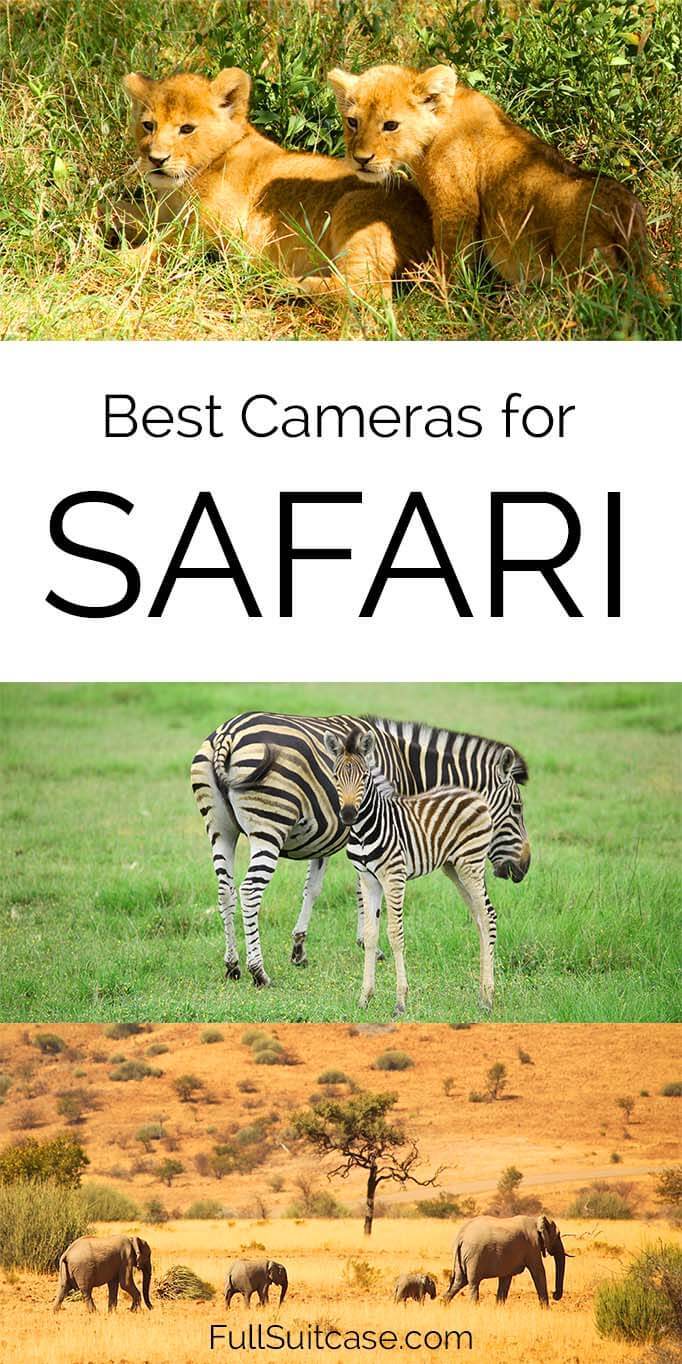
Best camera and lens for safari
We visited Africa several times and have been on numerous safaris. Watching other tourists taking pictures of the animals is often more entertaining than the safari ride itself.
People use every imaginable type of camera on safari. You see smartphones, tablets, but also 10kg half a meter long lenses which are impossible to hold still and are therefore pretty much useless on safari rides…
If you are a professional photographer going to Africa in order to photograph animals, then this post is not for you. If you don’t care about the pictures and only go on safari for the experience – then this article is not for you either.
This post is for hobby photographers who are going on safari and hoping to take at least a couple of decent quality pictures to bring home as a memory of this amazing experience.
Before I continue with what kind of camera equipment you best take on safari in Africa, there are a couple of things you should know. Read on!
What to know about taking pictures of animals on safari
- You cannot take good safari pictures with a smartphone, a tablet or a pocket camera. You can take ok pictures with the newest smartphones, but it’s incomparable with the quality you get with a DSLR camera.
- The chances of you getting a National Geographic – like close-up high-quality image of a hunting leopard in action are close to zero.
- You can take good quality pictures of safari animals even if you are not a pro. But you’ll need good equipment and it helps if you can learn a few basic photography techniques. As a minimum, you need one of the two, so if you don’t know much about photography, you definitely need a good camera and a decent lens.
If you don’t own a good camera yet, a trip to Africa is the perfect excuse to get one. Come on, you are going to spend thousands of dollars to go on a once-in-a-lifetime safari trip to Africa and take a pocket camera with you? Really? You’ll regret it the first day, take my word for it.
And no, your latest iPhone won’t do the job either. You may use it to photograph landscapes or a herd of zebras in a distance, but it will be completely useless for photographing moving animals (and they do move, they always do).
TIP: If you don’t feel like getting a DSLR camera for safari and having to change lenses, take a look at some of the best point-and-shoot cameras available at the moment. Technology doesn’t stand still and there are some really good cameras with amazing zoom possibilities that might be perfect for your needs. We ourselves just bought Nikon Coolpix P1000 and I’m quite impressed with this camera, the zoom, and image stabilization. For the price and the ease of use, I’m not sure I’ll ever want to take my DSLR & lenses on many trips anymore. For more budget-friendly alternatives with decent zoom, take a look at Panasonic Lumix FZ300 or the previous model of the camera we bought – Nikon Coolpix P900 .
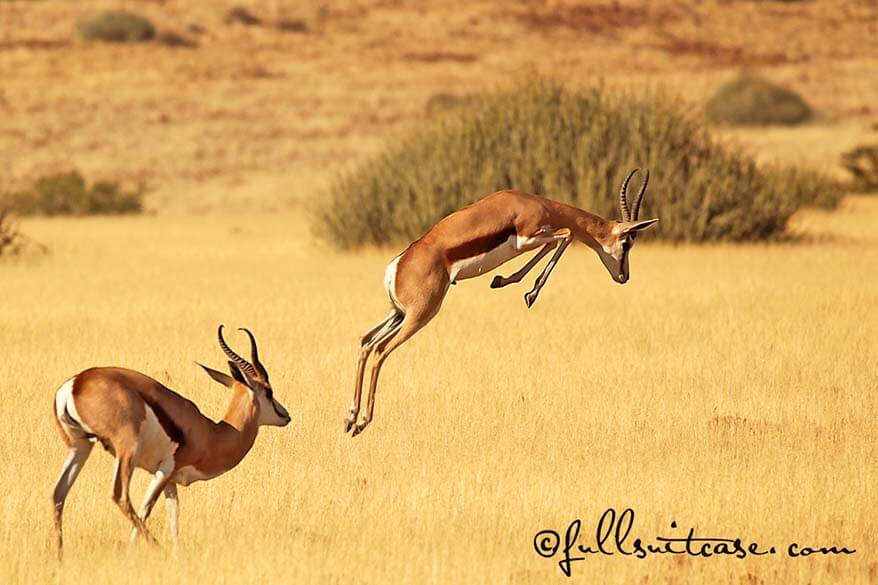
Tips for choosing the best camera and lens for safari
I’m not going to go into too much detail about all kinds of different camera brands and models as there are so many of them available with new ones coming out all the time. You can find a few suggestions based on your budget below, but this is what you definitely should know about the best camera for a safari in Africa.
- You need a digital SRL camera or a very good, newest point-and-shoot to take on safari in Africa. What you need, basically, is a camera that focuses fast and takes a picture the moment you press the shutter and not a second later.
- You need a good telephoto zoom lens with a reach of at least 200mm to photograph safari animals. There will be moments you wish you had a 500mm with you, but in my view, it’s just not worth the price and the weight to carry a lens like that if you are not a professional photographer. Unless you get one of the point-and-shoot cameras that sometimes have a zoom that goes to 2000-3000mm – more about it below.
- You need a wider lens for photographing landscapes , which are often just as interesting as the animals. I use 24-70mm f2.8 as my main lens when we travel, also in Africa. If you like really wide landscape pictures, you may want an even wider lens, like 16-35mm (my new favorite). If you have a regular DSRL camera without the full-frame sensor, you’ll probably need a lens of at least 18-55mm for regular landscape shots and one of 10-18mm for wide-angle photography.
- You may want to take a second (cheaper) camera for photographing landscapes so that you don’t have to change lenses all the time when you are on safari. Or simply use your smartphone for that.
- Consider taking a tripod to photograph animals in low-light conditions (morning or evening) at the waterholes. More about it further below.
- Take enough batteries and memory cards when traveling to Africa – at least twice as much as for a regular trip. Charging batteries might not always be possible (certainly if you are camping) and you won’t find many places selling batteries or memory cards in the middle of the Kruger National Park or the Kalahari desert.
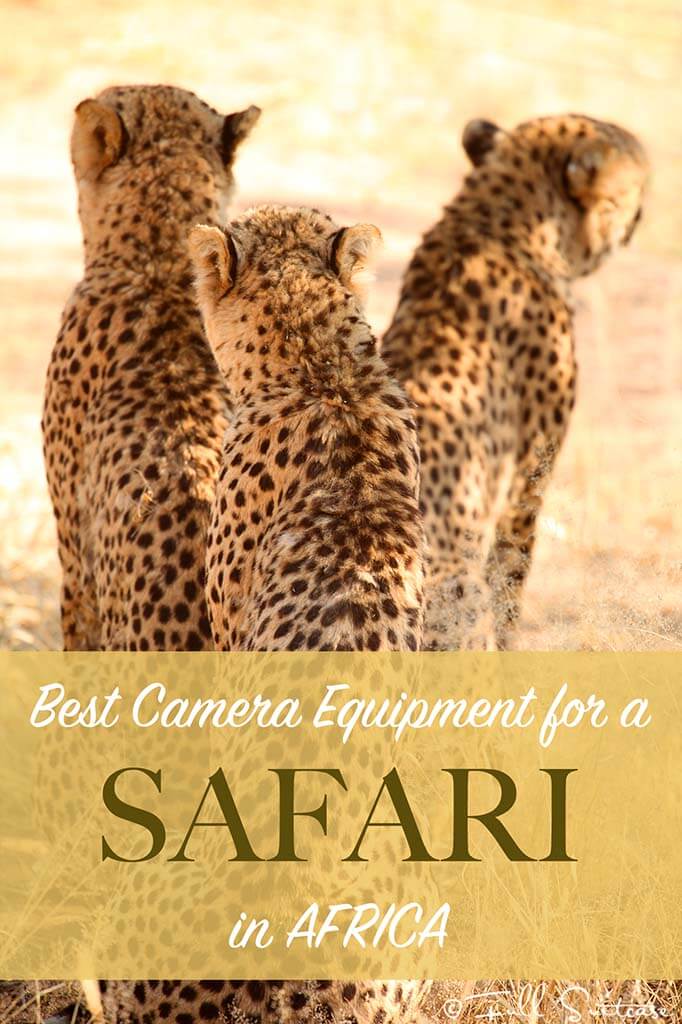
What camera to pack for safari
As I said before, this post is not for professional photographers, but rather for regular tourists. Also for photography enthusiasts traveling to Africa and hoping to get a few decent shots of safari animals.
Below you’ll find a few suggestions on what camera and lenses to take on safari .
I’m going to focus on Canon cameras and lenses as this is what I use and know best.
Best-buy cameras for safari in Africa
If you are looking for a decent camera for your trips, but don’t want to spend a fortune on it, you should consider the cheapest DSLR cameras available.
At Canon, it would be the Canon EOS Rebel series . Often you can get a kit (camera + lenses + accessories) for around 500-600 USD. If you don’t know much about photography and just want good pictures without too much effort this camera is just right for you.
Why not just buy a point-and-shoot camera? As already said, you do need fast autofocus and a good lens in order to get decent pictures of safari animals. This DSLR camera will take care of that. But as I’m updating this article, I have to say that there are now also very good point-and-shoot cameras that could do the job just as well. In this price range, we recommend something like Nikon Coolpix P900 .
Mid-price range safari camera
If you are looking for more possibilities and even better pictures and don’t mind spending a bit more money, Canon EOS REBEL SL3 and similar series might be a good option for you. This kind of camera is great for photography enthusiasts looking for a good price-quality camera to improve their photography skills.
Higher-price/ semi-pro quality camera
Probably the best price/quality DSLR cameras for those who are serious about travel photography are Canon EOS 6DII and similar series. If you want great quality pictures and use your camera on a very regular basis, then these cameras won’t disappoint you. However, we now have an even better recommendation at a lower price – see below.
The perfect camera for safari and general travel photography
TIP – our newest recommendation: In the mid-price range, but with an amazing lens included, so actually cheaper than most other cameras, you can also get a point-and-shoot camera Nikon Coolpix P1000 . This is the camera we recently bought and I really don’t think anything else compares to it in terms of possibilities/ flexibility/ price/ quality.
This all-in-one camera has an insane optical zoom of up to 3000mm, but you can also shoot wide landscapes with it. If you don’t want to change lenses but still want good picture quality and the best zoom range on the market, you really can’t go wrong with it.
In all honesty, I think it can compete with one of the latest models of the semi-pro Canon EOS 5D that I own (and that costs about 3-4 times more, not even to mention the lenses). It may not have all the possibilities of a professional camera, but for 99% of people looking for the best camera for safari (and travel in general), it will give you all you could ever wish for. At the moment of the latest update to this article, this is my personal favorite camera and I can highly recommend it to anyone!
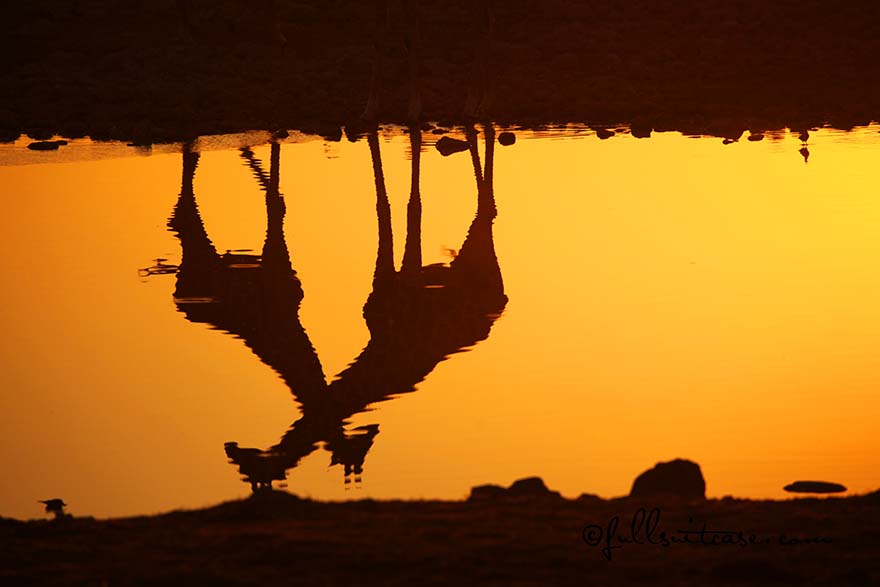
Best lenses for safari
Consider investing in one or two really good lenses if you are somewhat serious about photography.
Standard EFS lenses from Canon are ok with the cheapest DSLR cameras and will do the job for occasional travel photography, but if you can afford it, get the best lens you can and rather save on the camera.
I started out with the cheapest DSLR some 10 years ago, but immediately bought two very good lenses ( Canon L 24-70 f2.8 and Canon L 70-200 f4 IS USM ). I’ve switched 4 cameras by now, but these two lenses still do the perfect job and are my most used lenses. I couldn’t have used the cheaper EFS lenses on the cameras I owned later…
It’s a big investment in the beginning, but the quality is worth it. On top of that, the good lenses keep their value and you can usually resell them at a good price later if you decide that photography is not for you.
As already mentioned, you need a good telephoto lens with a reach of at least 200mm in order to photograph safari animals. Preferably 300mm or even more if you can justify the cost and the weight. I use the Canon L series lenses, but there are plenty of cheaper alternatives from Canon, but also from Sigma or Tamron .
Just make sure they fit the camera you have as these brands have the same range of lenses for many different brands, including Canon and Nikon.
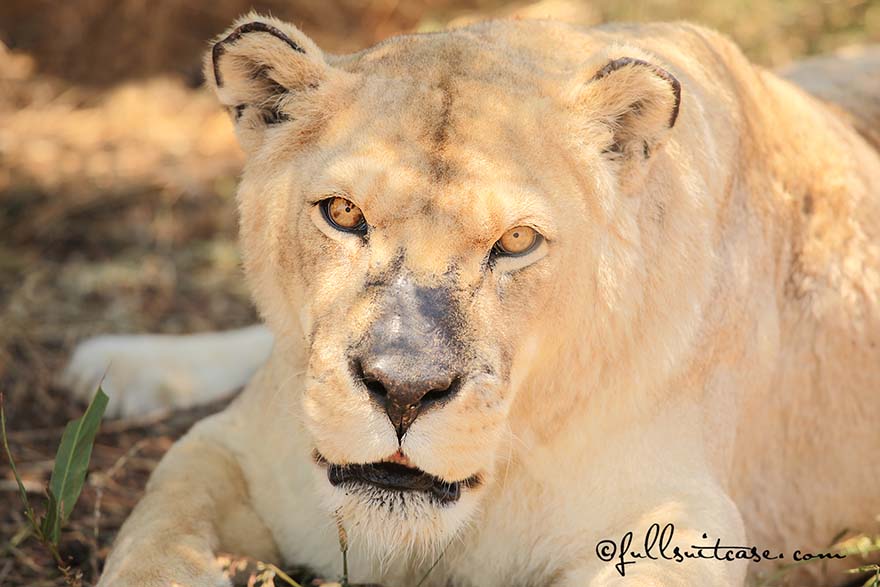
Best budget lens for safari
You can buy a good beginner’s lens for wildlife photography for $100-200. Canon has a 75-300mm f/4-5.6 or you can get a similar lens from Tamron – AF 75-300mm f/4-5.6 .
Mid-range safari lens
There is a lot of choice of good telephoto lenses for safari in the mid-range budget. Some good examples are Canon EF 70-300mm f/4-5.6 IS II USM or Canon EF 70-200mm f/4L USM .
You can even choose a 2-in-1 solution – a lens that is wide enough for landscapes, but also has a telephoto zoom for animals. Here are a couple of good examples: Canon EF-S 18-200mm f/3.5-5.6 IS or Tamron 28-300mm F/3.5-6.3 .
Best quality lenses for safari photography
The best lenses for wildlife photography will quickly cost you over $1000. As I said, it’s an investment and these lenses will do a great job for many years. However, if you only need a camera and tele lenses for this one safari trip to Africa, then it’s a really expensive choice.
Probably one of the best safari lenses from Canon is the Canon EF 70-200mm f/2.8L IS II USM . I personally find it a bit too heavy and too expensive to justify this purchase, but I still have to meet a photographer who doesn’t love this lens. I use a bit cheaper and lighter version – Canon EF 70-200mm f/4 L IS USM .
A good alternative with a bit more reach is Canon EF 70-300mm f/4-5.6L IS USM . I have to admit that I had one of these, but didn’t love it. Maybe it was just one bad lens, because the reviews are really great.
Best tripods for safari trip
If you only have the smallest DSLR and don’t want to spend too much money, remember that any tripod is better than none . As long as it can hold the camera without falling over, of course. Otherwise, you better don’t use any. You can get a tripod for under $50 and it will probably do the job.
If you have a heavier camera and/or lens, the cheapest tripod is not going to be good enough. I use and recommend Manfrotto tripods , depending on the camera/ lens weight and your needs.
For travelers, I recommend Manfrotto carbon tripods since they weigh much less and are therefore more suitable when traveling. They are not cheap, but worth every cent. I had two different tripods before I got this one 6 years ago, and none of the previous ones lasted even two years. Manfrotto is in constant use and it’s still as good as new.
For traveling, I bought Manfrotto 494RC2 ball head since it’s so small and takes less space in my luggage. I now actually use this ball head at home too.
So, this is our guide to the best safari cameras and lenses. I hope that it helps you decide what camera and lens to pack for your trip to Africa and get some really good pictures on safari.
For the best safari experience, make sure to also check our top tips for your first safari experience in Africa. Click the link below to read more!
READ ALSO: Africa Safari Tips
If you found this post helpful, don’t forget to bookmark it and share it with your friends. Are you on Pinterest? Pin this image!
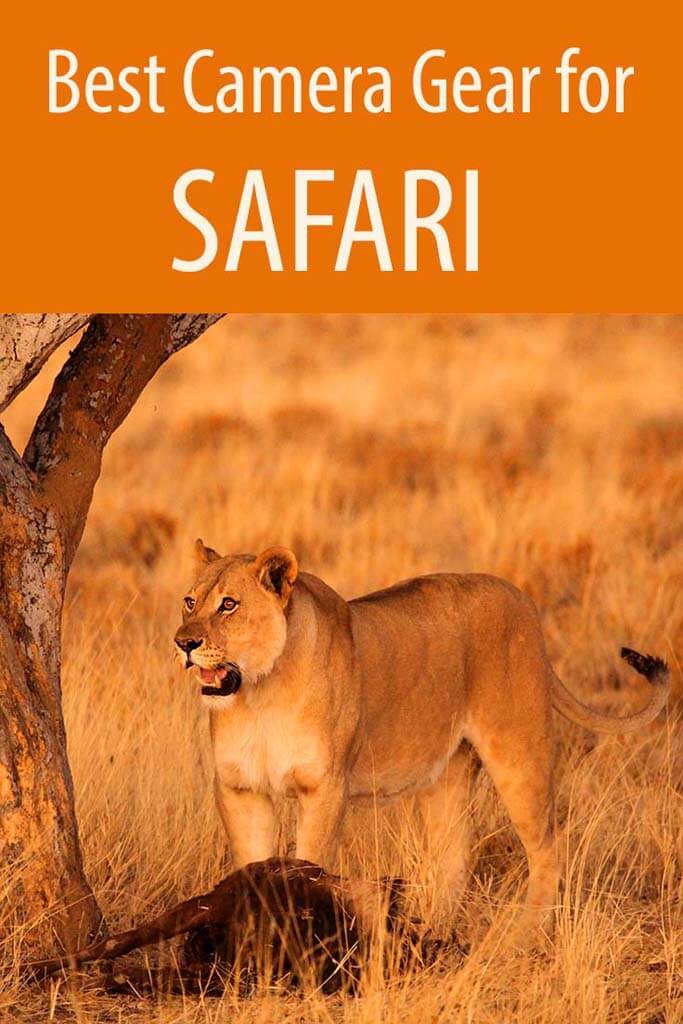
This site uses Akismet to reduce spam. Learn how your comment data is processed .
Sunday 17th of March 2024
Hello Jurga, great article. I have several adventurous trips planned including going on a safari in South Africa in June. I want to upgrade my camera equipment, including with lenses that would be good for shooting wildlife and amazing vistas across the globe the next several years. I am willing to spend time learning more about photography to produce wonderful photographs. I have a Canon EOS 60 D, which I am willing to replace if there is a better option given my plans and interests. My aim is to be a serious amateur photographer rather than at the professional level. What cameras and lenses would you recommend in the mid low and high price categories?
Kind regards
Monday 18th of March 2024
Hi Lauren, if you want to stay with Canon and don't mind upgrading your entire set, then you may want to look into their new mirrorless cameras. So much depends on your budget. EOS R8 is quite affordable and would be a great improvement from 60D. If you have any old EF lenses that you want to use with this camera, then you'll need to get a lens adapter. If you are planning on getting completely new lenses, then you'll need Canon RF lenses. I recently upgraded to a similar camera from Canon, got the adapter, and it works fine with my old lenses. However, one of my most used lenses was so old and glitchy that I also bought a new one that I consider a rather good choice for most situations. I went with this 24-105/f4 lens and I'm quite happy with it. I had 24-70 f2.8 in the past, but I just couldn't justify the price and the extra weight anymore. I also have a wide angle lens (17-35) that I use in some situations and also a 70-200 lens which I consider a must for any wildlife photography. I also have a Nikon Coolpix with an even bigger zoom - the quality may not be the same, but it's easy since there is just one lens that covers a very wide range. But there is no way I'm taking all of these at the same time on any trip, so it's always a struggle which lenses/cameras to take with me depending on the trip. Anyway, it really depends on what type of camera you are looking for (all-in-one or with interchangeable lenses) and your budget. But if you want to stay with Canon and are looking for very good quality at a decent price, then you really can't go wrong with the EOS R8 and one or two mid-price not too heavy lenses (e.g. 24-105 f4 and 70-200 f4). If you don't mind the extra weight, you can find some very good lenses that go up to 400mm or even 500mm. But I would only consider these if you are very serious about wildlife photography. Hope this helps.
Wednesday 28th of February 2024
Hi! I currently have the Nikon Coolpix L840 which has 38x zoom. I'm SO tempted to upgrade to the coolpix p950 or p1000. However, it does seem like they're much bigger than my L840. Do you think 38x zoom is enough for safari? I'll be doing a 2 month overland trip and getting great photos is a priority for me - but also will be carrying everything around for 2 months so weight is a consideration. I have photographed wildlife in Yellowstone before, they were super far away and I remember being impressed by the zoom capability (this was almost 10 years ago when I first got it), but it doesnt feel as impressive compared to what I can do with just my phone (currently have Galaxy s24 Ultra). FYI, I'm definitely a hobby photographer, and very much rely on a good camera to get good photos!
Hi Dakota, if you are happy with your camera, I'm sure it will be fine. It sounds like it should be plenty for most situations - 38x optical zoom is a lot. The problem is always to keep the camera steady if you zoom in further, so more zoom doesn't automatically mean better pictures. That being said, obviously, there will be some difference in image quality between an old camera and newer models. Whether that's a reason enough to upgrade your camera, only you can decide. Also, having a good smartphone, you will probably be taking many pictures with it as well. It will be ok for general landscape shots and maybe even animals if they are not too far away. Just keep in mind that most of the time, pictures look very different on a big screen vs on your phone, even more so for zoomed-in images taken in less than optimal light conditions. Good luck with the decision and have a great trip!
Mary Morris
Friday 16th of February 2024
Hi Jurga, Thank you for all your great information and recommendations. I'm going on my first Safari July 2024. I have absolutely no knowledge of cameras, nor use one in my current life but with a trip like this coming up, I would like to have a dedicated camera instead of using my cell phone. I'm thinking of the Nikon CoolPix P1000 as a basic point and shoot camera. I don't want to deal with changing lenses or anything like that. Does this sound like a good choice?
Sunday 18th of February 2024
Hi Mary, yes, this Nikon camera is quite good offering you a wide range of reach for all kinds of situations. However, it's also quite big and not very cheap - maybe not really something you need if you won't use it much in the future. There are many other cheaper and smaller cameras with somewhat less zoom reach, which can be just as good for someone who only uses a camera for an occasional trip. For example, this Panasonic Lumix camera has a range of 25-600mm, very good fixed aperture (f2.8), and is quite affordable and lighter to pack. So if you only need a camera for this one trip, I think I wouldn't necessarily spend more than $400-500. Whatever camera you get, be sure to get at least 2 extra battery packs as well! Hope this helps. Have a great trip!
John Winter
Monday 15th of January 2024
After 10 years I retired my 10 Canon 650D (18MP APS-C) with Tamron 18-270mm zoom. Served me very well in my travels worldwide.
Now have Canon RP (FF 24MP) + RF 24-240 zoom. Love it. A cropped image from this @240mm this is better than the above @ 270mm (equiv 400).
Simplistically 11MP of the FF wins over 18MP APS-C. I'll ignore lens quality, changes in technology, etc. IQ great at 24MP FF but at 11MP FF it's fair to average.
So now . . what to do for the bucket list safari?
I've considered another EF(-S) lens for the old 650D. Second hand possible too. But then I'll have TWO sets of camera gear. Add 3-5 kg?
The RF 100-400 seems ideal for me. Can't justify superior L series. Forget heavy EF and adapters. Also, I only have the Tamron above. But I'd have to swap back to the 24-240 for under 100mm and for superior quality in 100-200 range.
I can't justify another FF body or a high end APS-C body (dearer than some FF!) either. A RF cropped image (when editing) could be OK for a little extra reach beyond 400mm.
How about a cheapish APS-C R100 or R50? Extra reach. No swapping lenses. At max reach, effectively 11MP FF versus 24MP APS-C. They use the same battery, etc as the RP, so no need for two sets of accessories. Will be close in feel / familiarity to the RP. Guessing R100 or R50 limitations won't matter for outdoor safaris, though R50 is better / faster AF.
Overall add1(one) Kg for extra camera + extra lens instead of 3-5kg using my old camera!
(Besides how to I 'sell' this to my wife?)
Tuesday 16th of January 2024
@Jurga, Thanks. The Canon RP 100-400 comes in at 635g. Decent IQ. A little 'different' to the 1370g EF lens you tried!
So I'd be at about 1 kg total for either camera with either lens.
FYI Canon have made the RF mount exclusive to them. No third party allowed. Best is an EF mount (any brand) with adapter. That add expense, inconvenience, weight and less than 100% compatibility. I don't have any EF lenses to 'rescue'. Only the one EF-S Tamron which is no longer competitive. But at least it looks like the Canon R series of cameras and lenses are developing into a decent range of quality, price and value for money.
Hi John, from what I read, you have done so much research already that I really don't think I can add much to it. To me, it sounds like the set you have and love (24-240) is actually more than sufficient for most situations (not the answer you hoped for? :)). But we all travel with different expectations and if safari photography is the main purpose of your trip, you'll likely choose different gear than someone who just wants a few photos to remember the experience or post a few pictures on social media... In the end, it's all about your personal preferences. Usually, you already know what you want and are just looking for ways to justify that ;). Nowadays, I personally, would go for the most versatile lightweight solution, so one lens if possible. Or a maximum of two not-too-heavy/long lenses knowing that the telezoom lens will probably end up on the camera 95% of the time. I once bought a 100-400 Canon L lens and ended up sending it back - it was just way too heavy and too long for me. So if you decide to go that way, read some reviews and considerations by people who actually used it. Tamron or others might, of course, be different/lighter, depending on the glass quality. Anyway, whatever you decide, good luck with convincing your wife ;). And if you decide to save some money not buying new gear, treat yourselves to a nice excursion/experience during the trip! Enjoy it!
Friday 24th of November 2023
Hi Jurga… we are going on our first safari in June. I am a newbie in photography (have a Canon t6i) and wondering what will be the best for bringing home amazing memories. I don’t want to worry about changing lenses while on drives. I am looking at either Tamron 18-400 mm, Lumix FZ1000 ll or Coolpix P1000. I’ve read the P1000 isn’t very good in low light situations. Any advise would be appreciated. Thanks in advance Nikki
Sunday 26th of November 2023
Hi Nikki, it's hard to say but indeed in low light, most 'allround' lenses will have difficulty, especially if you zoom in to the maximum (3000mm without digital zoom) and have to hold the camera in your hands vs using a tripod. I think that Tamron will be comparable at 400mm with Nikon at that same length. But you can't compare 400mm vs 2000-3000mm in any way. If you already have a Canon camera and can get a Tamron lens for quite a lot less than Nikon P1000, then I'd just get the lens and use the camera that you have. I would only get the Nikon if you absolutely want more reach (but indeed, keep in mind that it's very difficult to take sharp pictures when you hold the camera in your hands and zoom in to the maximum). Hope this helps. Enjoy your trip!
The Complete List of Photography Gear You Need for Your Next African Safari
on March 7, 2023
It’s the bucket list adventure of a lifetime. However, the African Safari comes with its fair share of photography challenges. You will likely encounter weight restrictions, limited access to power and dusty conditions that can be brutal on your cameras. Not to worry, you just have to be smart about it. We’re going to share our strategy for packing light and efficiently, and how we were able to pack a lot of professional photography gear into a small carry-on for our recent African Safari in Zambia .
You Will Likely Be Very Weight Restricted if You’re Flying to Your African Safari Destination
For most African Safaris, you’ll initially land in the primary international airport of the country where your safari is, where you’ll clear customs and immigration. From there, you’ll transfer onto a domestic flight out to where your safari starts. Domestic flights in many African countries are a vastly different beast than domestic flights in places like Canada and the United States.

Because the planes are so small, you will likely be very weight restricted. Both our checked and carry-on gear had to be packed in small, soft bags with a maximum combined weight of 23 kg (50 lbs). My photography gear alone took up roughly 20-25% of that weight allowance. The rest was just clothes and toiletries.
Packing and Photography Gear Strategy for Your African Safari
When packing for your African Safari, follow the golden rule of “less is more”. You don’t want to bring anything more than you absolutely have to. Not only is traveling light just so much easier than lugging tons of gear around, you won’t have to worry about being up against weight restrictions on the flights.
Packing photography gear for an African Safari may seem daunting at first. However, when done right you can bring a lot of camera equipment in a very lightweight package. Indeed, all the photography gear I brought on the African Safari in Zambia fit into a small backpack that easily fit under the seat in front of you on those tiny planes.
I don’t have one of those huge telephoto lenses that’s the size of a howitzer. Instead, my telephoto lens weighs less than 1.5 pounds and still zooms to 400 mm. Heck, I didn’t even bring a full-size tripod to Zambia, and the photos still turned out amazing!

Furthermore, the run and gun style of photography and videography I adopted during my storm chasing days was perfect for an African Safari. Much like a storm chase, things can happen fast when you’re on safari. You don’t want to miss your shot lugging around bulky camera gear. You also don’t want to be constantly swapping out lenses in such a dusty environment.
A Word on Camera Batteries: USB Charging is King
Many of the accommodations on your African Safari will be completely solar powered. As a result, they have limited power/charging capabilities. There are no outlets in the rooms, and instead have a power strip in the common area for you to charge your gear. If you’re staying somewhere that doesn’t have power 24 hours a day, it can be even more of a challenge to keep your gear charged!
Don’t worry, though. There is an easy way to get around that restriction: bring your own solar charging bricks. They usually come with 2-4 USB ports for charging. I brought two of them with me to Zambia and had zero issues keeping my gear charged, both at South Luangwa and Kasanka National Parks.
Plug the power bricks into the charging station in the common area when you leave for the morning game drives. They’ll be fully charged when you return. Use them to top up the charge on your gear overnight in your room, and you’ll start each day with full batteries. Repeat the process each day. It’s so much easier than having to rely on plugging chargers into wall outlets.
With the exception of my secondary mirrorless camera, I can charge every piece of gear I brought on the African Safari, including my phone and tablet, via USB from the solar charging bricks.

DSLR or Mirrorless Camera Bodies
If you’re at all serious about photography and/or videography on your African Safari, you’ll need a DSLR or mirrorless camera. Modern cameras take phenomenal pictures and come in varieties to suit every skill level and budget. At the time of publication, you can find mirrorless camera bodies for less then $500.
Two Camera Bodies are Better Than One
One of the challenges of African Safari photography is that you’ll want to be taking both close-up shots of the wildlife, as well as wide-angle shots of the landscapes, activities, sunsets, and more. Yet at the same time, you don’t want to be constantly swapping out lenses. African Safaris are often hot and dusty, so any lens swap is asking for dust to get in.
Having a second camera body will save you so much headache on your African Safari. Put the telephoto lens on your primary camera to get those incredible wildlife shots. Attach a standard or wide-angle lens to your secondary camera to capture those beautiful African landscapes. If you don’t want to carry around a second camera body, use your smartphone camera to get those wide angle shots. You’ll come home with a wonderful balance of close-up shots of the wildlife, as well as wide-angle shots of the beautiful landscapes and those breathtaking African sunsets.

While you can bring as many or as few lenses as you’d like on your African Safari, you’ll need a telephoto lens and a standard zoom lens at the very least. I also travel with two small prime lenses. While I don’t use them very often, they’re incredibly valuable tools to have when I do need them. They don’t take up much room in your bag, either. Here are the lenses I brought on the African Safari in Zambia.
- Telephoto Lens (100-400 mm)
- Standard Zoom Lens (24-105 mm)
- 50 mm Prime Lens. Its f/1.8 aperture made it a phenomenal lens for the night drives.
- 16 mm Prime Lens. Good for the wide open landscape/establishing shots and getting “people” shots of our group. Its f/2.8 aperture makes it a good tool for night and low-light photography as well.
I always travel with two types of filters: neutral density (ND) and circular polarizer (CPL). Even if you don’t use them much, they’re still really nice to have in you bag. You can easily write an entire post about filters, but here’s the quick and dirty version.
Neutral density filters are like sunglasses for your camera. They reduce the amount of light coming into your camera. With a variable ND filter, you can adjust how much light is getting in. For landscape, wildlife, and travel photography, they’re invaluable tools for reducing depth of field, creating motion blur (especially when there’s flowing water in your photo), and more. You can also use an ND filter shooting video to capture perfect cinematic shots using the 180-degree shutter rule.
Likewise, circular polarizers reduce and eliminate glare from your photos. They also enhance colors that often get washed out when you’re shooting in harsh, bright sunlight. You will encounter plenty of harsh lighting conditions in the bright sunlight on your African Safari. At the very least, a circular polarizer reduces the amount of touch-up you’ll need to do in post-production.

Action Camera: GoPro
I brought the GoPro Hero 10 to Zambia and it did not disappoint! On your African safari, you’ll be bouncing around on dusty and bumpy dirt roads in the Jeeps and Land Rovers. The new GoPro’s have amazing image stabilization and horizon leveling that can give you buttery smooth action shots even when you’re being tossed around in the back of the safari vehicle. Additionally, I film of all of the shots of me talking to the camera with the GoPro.
Pro Tip: Invest in some ND filters for your GoPro too. They cost less than $100 and the colors come out so much better!
Cell Phone Camera
Even way out in the African bush, miles from any cell service or WiFi, you’ll still probably have your phone on you most of, if not all the time. Most smartphone cameras these days can compete with low-end DSLR and mirrorless cameras, so they’re another great tool to keep in your arsenal. You never know when you may want to get a shot when you don’t have your other cameras around.

GorillaPod Tripod
I love the GorillaPod tripods because they’re small, lightweight, and can be mounted to anything . In fact, I love them so much I actually travel with two of them: one for the mirrorless cameras and one for the GoPro. On just our African Safari alone, I mounted them to vehicles, railings, trees, and more. I also carry an adapter for smartphones so I can put my phone on the GorillaPod if needs be.

Extra Memory Cards
No matter what you’re photographing, you can never have too many memory cards. This holds particularly true for African Safari photography. If a memory card fails when you’re out in the bush, you can’t just run out and get another one. You should also keep multiple copies of all your photos and videos, so at the very least the memory cards will function as a backup. Memory cards are a dime a dozen these days. Get yourself a memory card wallet and fill it up with blank cards before you depart.
Additional Photography Gear for Your African Safari
Because my computer is a power hog and we had limited access to charging, I left it at home and brought the iPad instead. Most of the extra gear I brought was just to be able to easily offload everything onto the iPad.
- Cables and adapters to transfer photos and videos to the iPad
- 5 TB external hard drive to keep a backup/second copy of all photos and videos
- Extra camera batteries. You’ll be amazed at how quickly you can go through them over the course of a day on safari. Bring a minimum of three batteries for your primary cameras.
Full List of Photography Gear for Our African Safari in Zambia
All of the photography gear we brought on the African Safari in Zambia all fit into a small carry-on backpack.
- 2 Mirrorless Camera Bodies
- 24-105 mm Standard Zoom Lens
- 100-400 mm Telephoto Lens
- 50 mm Prime Lens
- 16 mm Prime Lens
- GoPro (plus a few mounts and a microphone)
- 2 Rode Microphones (one for each mirrorless camera)
- Neutral Density and Circular Polarizer Filters
- 2 GorillaPod Tripods (plus smartphone mount)
- Spare Batteries
- Solar Chargers
- Cables and Adapters
Photography Gear We Left at Home for the African Safari
Now that we’ve gone over what we brought, the gear we left at home was primarily big and bulky.
- Gimbal (for the mirrorless cameras)
- Full-Sized Tripod
- Drone. An African Safari is not an appropriate place to be flying drones anyway.
- GoPro mounts we knew we wouldn’t use
Final Thoughts
The African Safari is a bucket list trip of a lifetime. Despite weight restrictions, limited access to power, and everything else, you don’t have to skimp on photography gear. You just have to be smart about it. The best gear to bring is lightweight, compact, and easy to use. Things can happen surprisingly fast on an African Safari. The last thing you want to do is miss that perfect shot.

Through breathtaking photography and video, Matt brings you on immersive worldwide journeys of discovery to expand your global horizons and find your next outdoor adventure. Since 2009, his adventures have taken him from chasing tornadoes in the US to tracking wildlife on an African safari and beyond. And once you get to know him, you’ll quickly discover there’s so much more to Matt’s adventures than just photography.
Comments are closed.
Previous Post
40 new england sayings you need to know for your next adventure there.
Maps & Merlot
14 Outstanding African Safari Photography Tips
If you’re heading to Africa soon and are looking for photography tips for your African safari, you’ve come to the right place! For most people, photography is a huge part of an African safari, and while we all want to capture those epic National Geographic photos, it is important to understand that those types of shots can be pretty difficult to achieve.
I’ve put together a list of African safari photography tips to help you plan ahead and set you up to take the best photos on your safari. The list includes equipment to bring, camera settings, framing considerations, and more. I hope these African safari photography tips will help you to capture the photos of your dreams!
This post may contain affiliate links.
1. Invest in Quality Camera Equipment
The first of my African safari photography tips is to invest in quality camera equipment.
There is always a huge discussion between mirrorless vs. DSLR cameras, and each has its pros and cons. I’m personally pro-mirrorless due to the lighter weight and how far the technology has come over the years, but you can’t go wrong with either.
The next decision is crop sensor vs. full-frame. As an owner of both, I would firmly recommend a full-frame camera. A full-frame camera provides a wider field of view and also tends to shoot better in low light, which is critical on a safari. Animals are often most active around dawn and dusk, so you’ll often be shooting in low light.
One other thing to consider is the camera’s frame rate, expressed in frames per second “fps.” I ended up shooting in burst mode pretty frequently for animals in motion, so it was amazing to be able to capture a lot of shots. For example, shooting in burst/ continuous mode meant capturing this epic shot of a lion yawning.
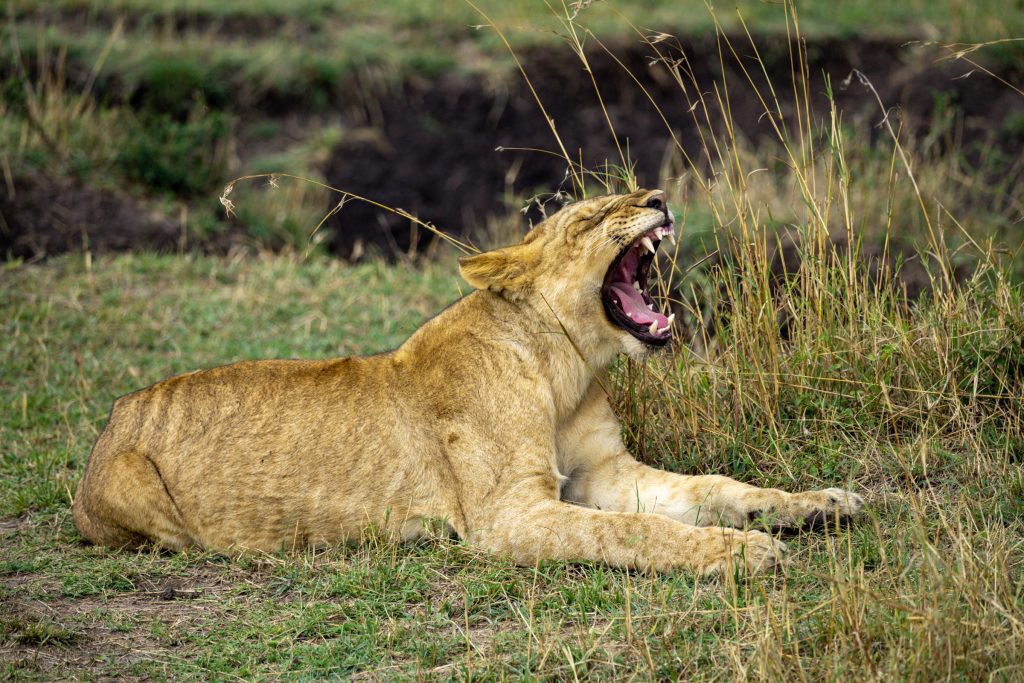
With that, I’d recommend a full-frame camera with good fps. I’m personally a Sony fan, so I opted for a Sony A7iii and would absolutely use the same camera again.
Recommended Camera : Sony A7iii or Sony A7iv
Now that you have a camera, your next step is selecting lenses. I’d recommend bringing along 3 main lenses:
Telephoto Lens: A telephoto lens is an absolute must-have for a safari. It should be at least 300mm, or you won’t be able to take those close up shots. For my Sony A7iii, I use the Sigma 100-400mm . It is significantly less expensive than its Sony counterpart, and I was very happy with the pictures.
Wide Angle Lens : While you’re on safari, make sure to bring along a wide angle lens to capture the epic landscapes. I use a Sony FE 12-24mm G Master . On most of my trips, I do a lot of landscape photography, so it made sense to splurge on a wide angle option.
Traditional Lens : For a traditional zoom lens, I’d recommend the Sony FE 24-70mm G Master II . This is a common walkaround lens and is great for most trips (city shots, etc.). On safari, I switched to this lens multiple times when the animals were so close to the vehicle that I couldn’t capture the shot with a telephoto lens.
2. Camera & Lens Rentals
Having the proper camera equipment will help to capture the best wildlife photos. However, purchasing a camera and lenses can definitely add up and if you don’t want to invest in a full setup, the good news is you can also rent cameras and lenses! You can rent a camera body and/or lenses in packages and separately.
If you choose to rent a camera or lens, make sure you schedule its arrival far enough in advance of your trip. It is so important to practice to get to know your camera before you go on safari.
3. Pack Camera Accessories
One of my African safari photography tips is to pack all of the necessary camera accessories. From extra storage to backup batteries to camera support, there are a few items that you definitely want to bring.
Extra Storage
I was actually shocked by the amount of storage I needed for photos on this trip. I completely filled up a 256GB card and was well into my second by the end of my week-long safari. I’d recommend bringing along multiple 256GB memory cards (or larger) to ensure you have plenty of photo storage.
I’d also recommend bringing along a memory card holder case so you can safely transport your SD cards. This is the exact case I use and travel with – it take up very little space and keeps all of my memory cards safe.
Backup Batteries
Going along with the extra storage, you’ll definitely need some backup camera batteries. For my Sony a7iii, I bring two or three of these rechargeable batteries and this battery charger . Our days on safari were pretty long; on some days, we were out for 12 straight hours, so I heavily relied on my backup batteries.
Some safari vehicles will have charging ports (which were great), but I wouldn’t rely on your vehicle having them. Our vehicle was open air, so we also couldn’t charge if it was raining.
Camera Support
For your safari, you’ll also want to bring along some kind of camera support to help stabilize your camera. A camera bean bag is pretty common because it doesn’t take up much space. When you take small bush planes on safari, you’ll usually be limited on weight (30 or 40 pounds), so the bean bag is nice because it won’t take up too much of your baggage allocation.
However, if you have less of a limit on your baggage, I love my tripod . I have used this tripod for so many different things – waterfall photos, long exposure with the Northern lights, and beautiful blue hour shots. It is also perfect to stabilize your camera for safari shots. A tripod is a little unwieldy in a safari vehicle, but it is nice to have around camp.
4. Protect Your Camera Gear
One of my key African safari photography tips is to take very good care of your camera gear. Between the dust and the rain, there are all sorts of things that can mess up your shot.
For the dust : Bring a lens cleaning kit . Even though I changed my lenses very quickly, dust still got into all of the camera’s crevices, so I ended up using the air blower a lot. I didn’t want to touch the inner workings of the camera, so this was so helpful in keeping the camera dust-free. If you get dust in your sensor or on your lens, you’ll get those annoying black spots on your photos. I’d also recommend keeping your lens cap on when not using your camera. I kept my camera covered, but made sure it was easily accessible to quickly capture photos.
For the rain : The lens cleaning kit and keeping the lens caps on also protects well against light rain storms. It was also helpful to use a lens hood during storms if you still want to capture a few photos. I’d also recommend ensuring that your camera bag is waterproof or has a waterproof cover. We had an open-air vehicle for part of our safari and a couple of the rain storms were very heavy. If our bag hadn’t been waterproof, it would have been a huge problem.
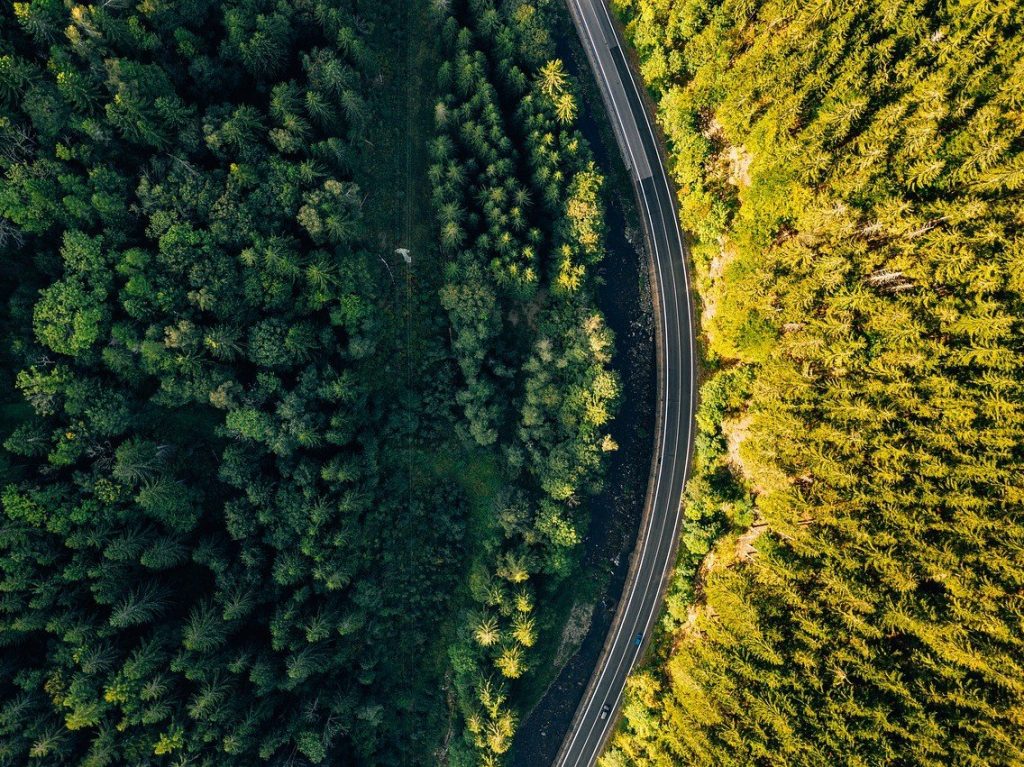
Like this post?! How about…
20 Astounding Road Trips to Take Before You Die
5. Camera Settings
I wrote a whole post on the best camera settings for safari photography , but I’ll give you some of the highlights below.
Continuous Shooting : Wildlife moves a lot, so I shot a lot in burst mode/ continuous shooting. On the positive side, I was able to capture so many cool shots. On the down side, I ended up with thousands of photos to sort through…despite the annoyance, I would highly recommend shooting in continuous mode to capture those epic shots.
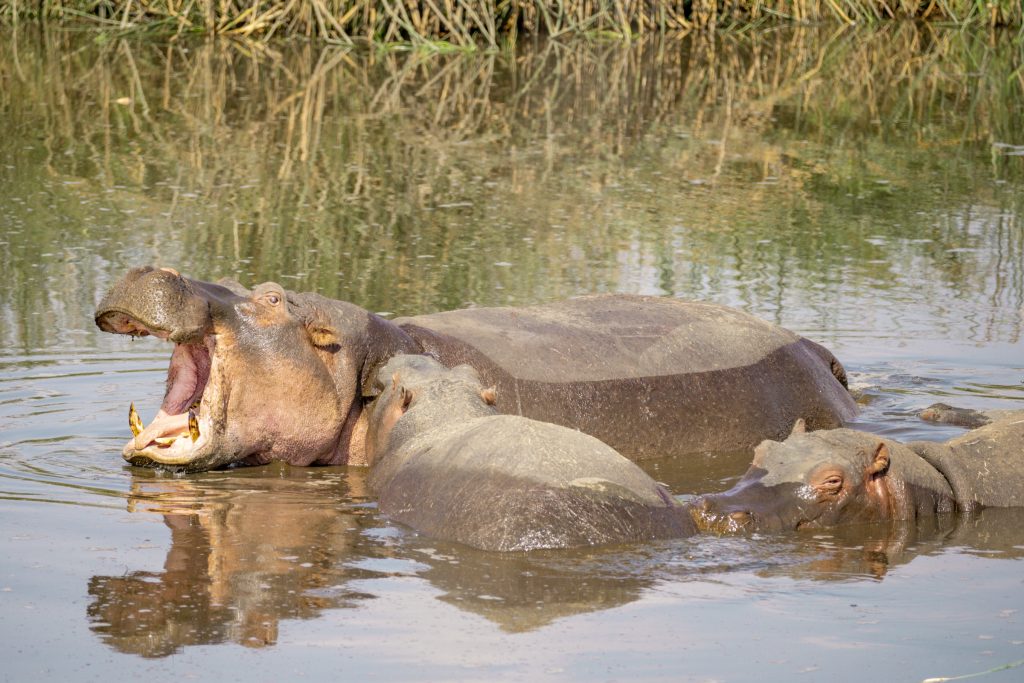
Pick the Correct Mode : I wouldn’t recommend shooting in Auto because your camera may not select the correct shutter speed, ISO, or aperture and you may miss “the shot.” If you’re a pro, Manual is your best bet. I’m not a pro, so I switched between Aperture Priority and Shutter Priority. I’d recommend giving my article on camera settings a thorough read for all of the details.
Read More : Camera Settings for Safari Photography
6. Shoot RAW+ JPEG
Set your camera to shoot in RAW. This option will give you so much more latitude in processing and is one of the most important of my African safari photography tips. Sometimes I would only have a few seconds to snag a shot before the animal moved on, so I didn’t always have enough time to get the camera settings perfect. Fortunately, RAW files allowed me to fix most things during processing! One important point is that RAW photos do take up significantly more space on your memory card, so make sure to factor that into your decision when choosing SD cards.
I usually choose to shoot in RAW + JPEG so that if I can transfer a few JPEG files to my phone. This isn’t a huge deal, but I often like to immediately enjoy the pics and send to my family. JPEG may also be the right option for you if you don’t want to spend much time on editing!
7. Framing Your Shot
Framing your shot is one of the key African safari photography tips, and while there are no hard and fast rules, there are a few points to consider.
Rule of Thirds: The Rule of Thirds is a common photography guideline that breaks down an image into thirds, both horizontally and vertically, so that your image is split into nine pieces. You then position the key elements at the intersection of the gridlines to make the image feel balanced. However, remember that this is just a guide and that sometimes rules are meant to be broken. Oftentimes animals don’t cooperate with your photographic vision, so take what you can get!
Shoot High and Low: In a safari vehicle, it can be easy to always gravitate toward the same seat…and if you do, a lot of your shots will be from the same perspective. Make sure to switch up where you’re sitting and stand up, sit down, anything to get a unique perspective.
Zoom In & Out: It can be tempting to zoom in and take tons of close-up shots, but make sure you also zoom out and incorporate the landscape, as well. When I shoot, I’ll usually capture some close-up shots with my telephoto lens and some further-out shots, which I take with my telephoto lens, traditional lens, or wide angle lens – depending upon how far the safari vehicle is from the animals. I’d also recommend doing a major zoom on an animal’s face occasionally. I love when you can capture the emotion behind their eyes.
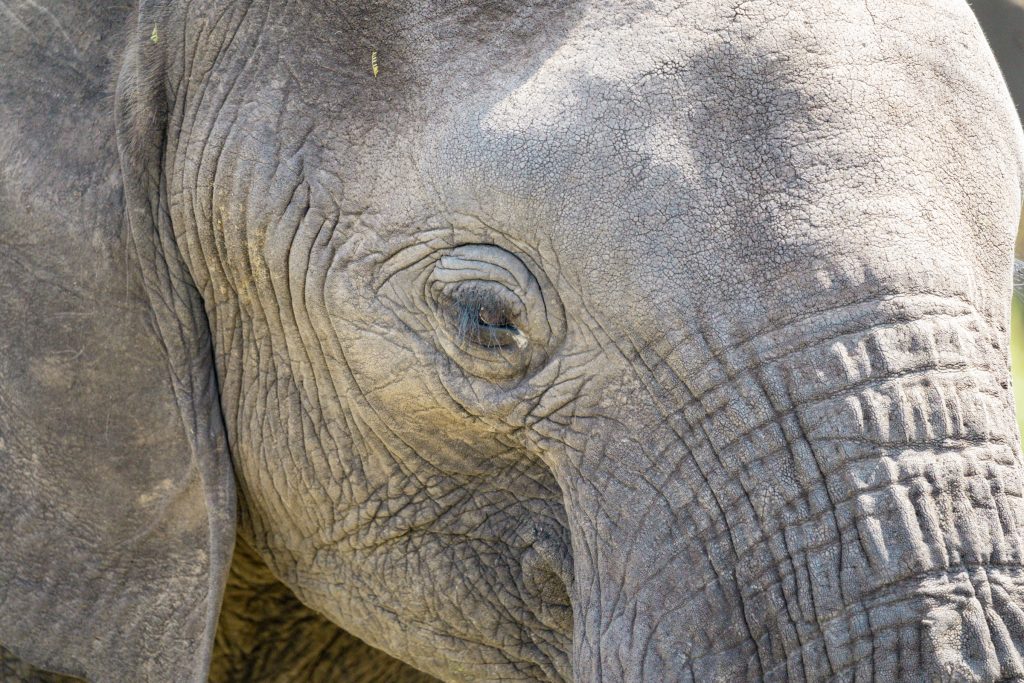
8. Capture the Small Stuff
Everyone going on a safari knows about the Big 5, and for a good reason. However, there are tons of smaller animals and birds that are so unique that are highly worth capturing on safari. I’ll give you a few of my favorites that I captured while on safari.
There are lots of colorful birds like the lilac-breasted roller and the kingfisher.
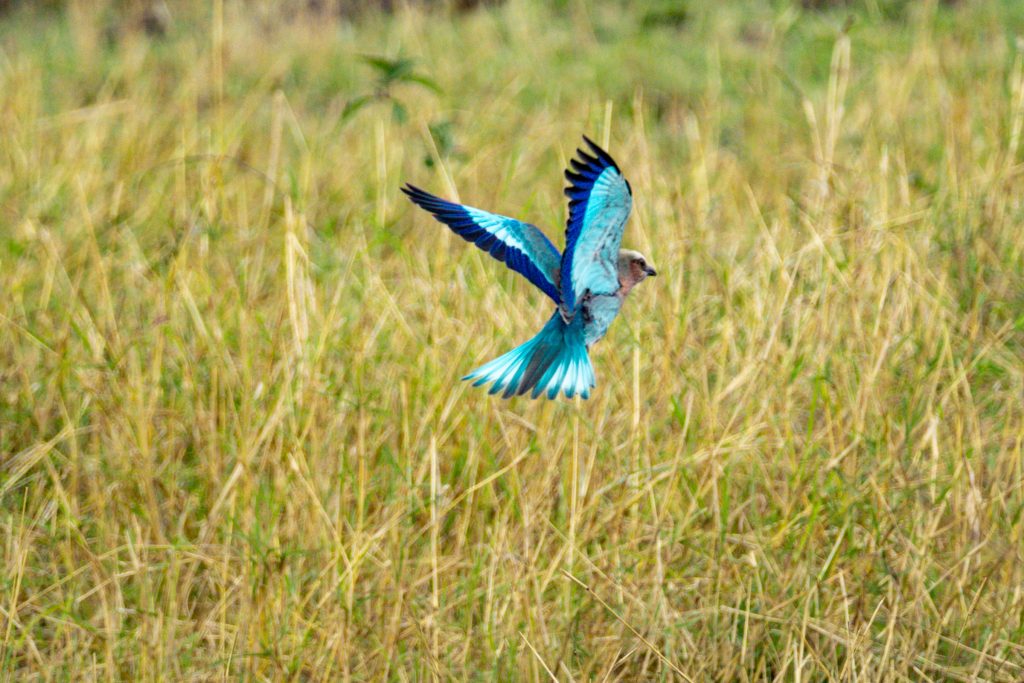
The serval and caracal are both cats, though clearly smaller than the lions. We watched both animals stalk their prey and we even saw the caracal spring through the grass to catch a bird!
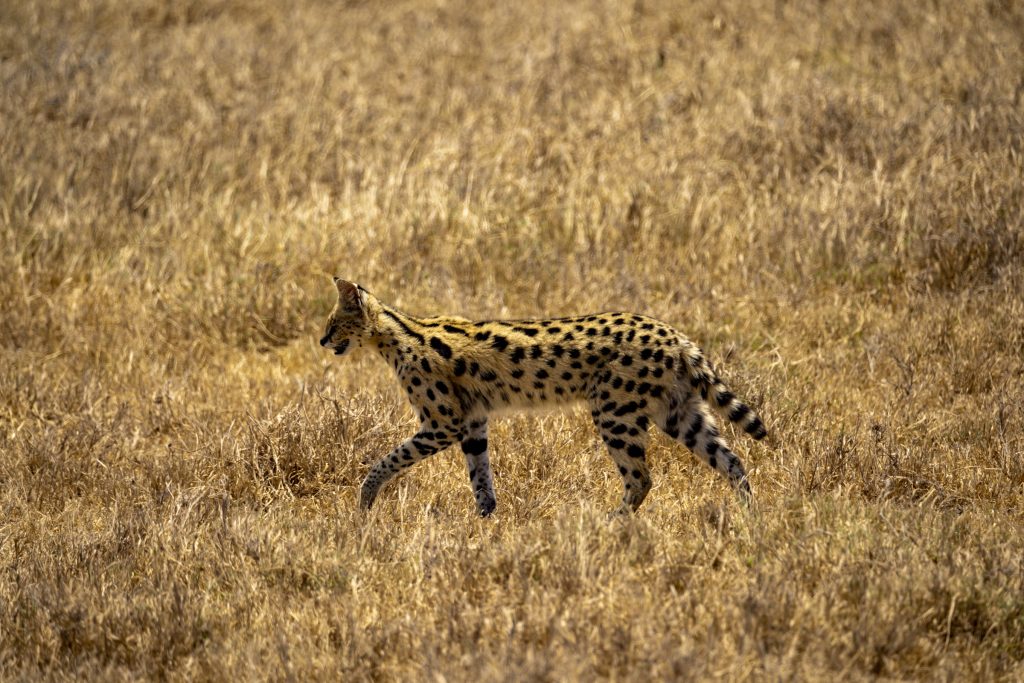
The pangolin is a scaly mammal, and an animal that our guide told us was considered very lucky. Seeing a pangolin on a safari is very rare; our guide had been working for years and told us that this was only the second pangolin he has ever seen.
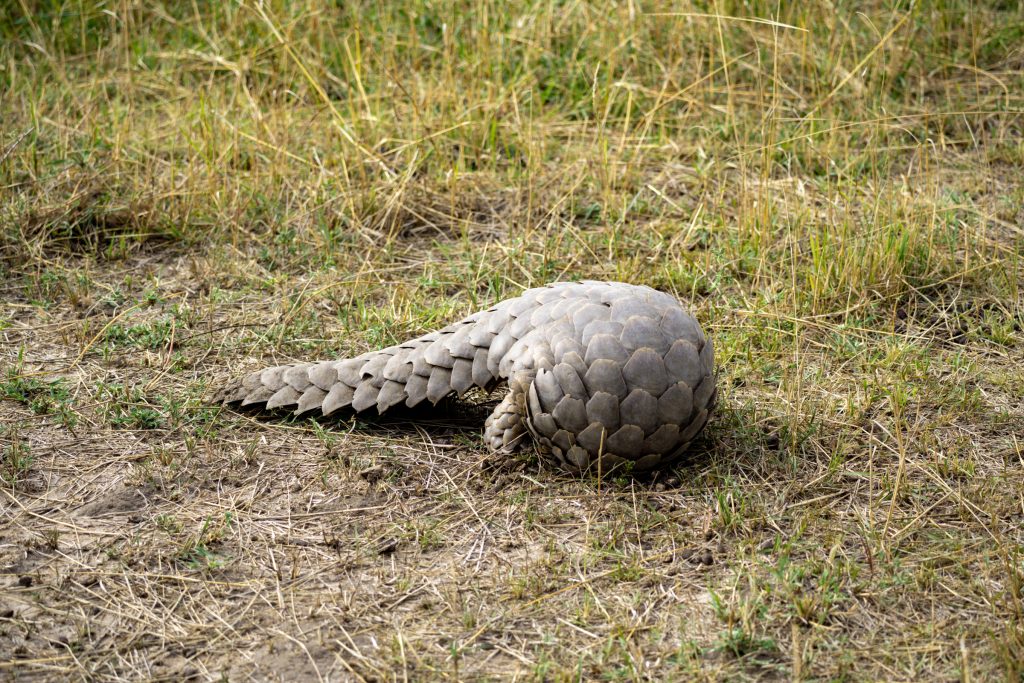
9. Photograph the Landscape
In addition to the smaller animals, make sure you take the time to photograph the landscape. It is so easy to only focus on animals, but chances are good that the surrounding landscape is very different than your hometown. I loved snapping shots of the Serengeti at sunrise and the unique trees.
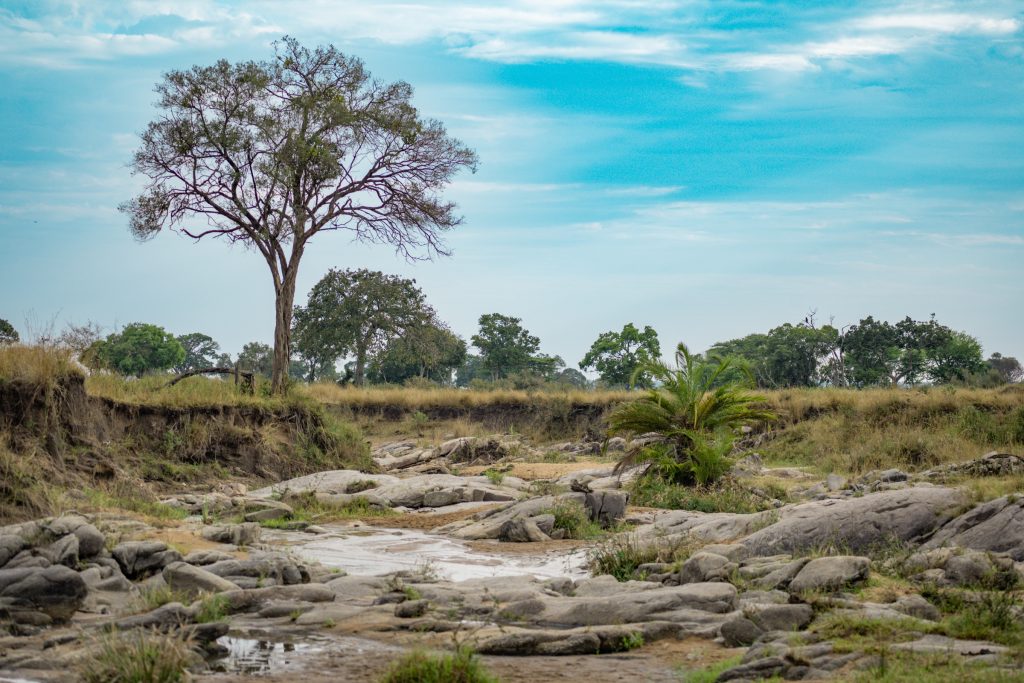
10. Pick the Right Time & Location
Next up on the list of African safari photography tips is to pick the right time and location. To capture the best safari photos, you’ll want to do plenty of advance research. For example, my ultimate goal on our Tanzania safari was to capture the wildebeest river crossing – which tends to occur in late August through early September in the Northern Serengeti. However, if your goal is to see calving season, which means lots of baby wildebeest and zebras, you’d want to travel in February – March to the Southern Serengeti.
No matter the goal for your African safari, do plenty of advance research to ensure you’re booking your trip at the correct time and to the correct location.
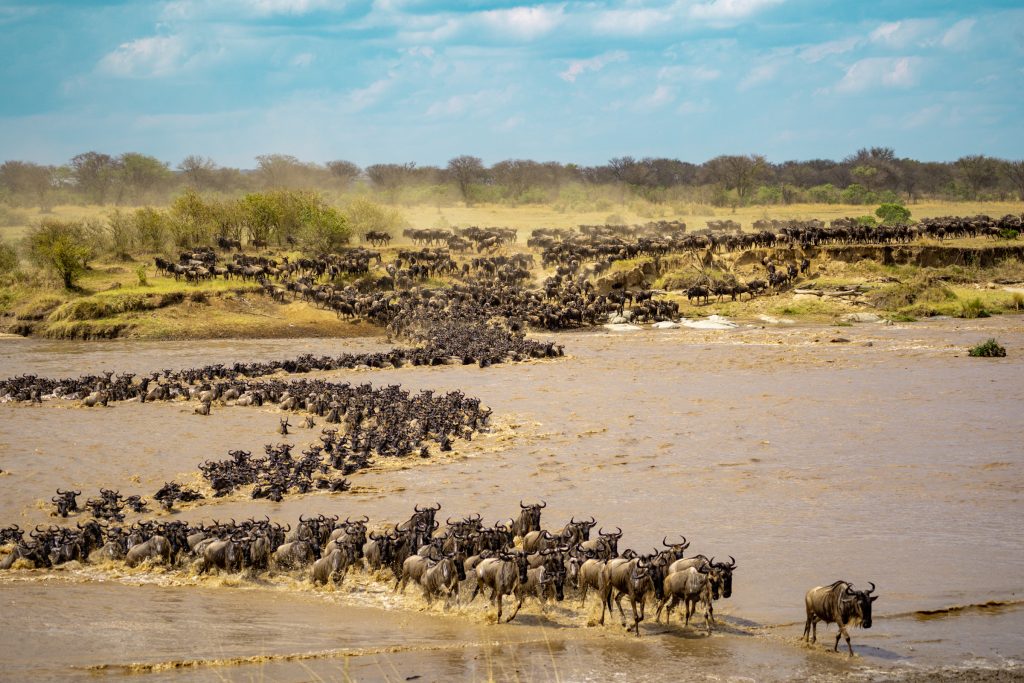
11. Trust Your Guide & Communicate Expectations
One of my top African safari photography tips is to get to know your driver-guide. They know so much about the animals, their behaviors, and where to find them. If you are transparent and communicate your expectations, they will be an excellent resource.
On the last day of our safari, we had already seen all of the animals on our list, so we jokingly asked our guide to find us a lion on a rock (very specific!). Our guide was so familiar with the area that he knew of an area with rocks where a lion pride frequently visited. After a bit of driving around, he found us our lion on a rock!
Jokes aside, do communicate your priorities. Do you want to see sunrises over the Serengeti or do you prefer to sleep in? Do you want to take lots of photos or just experience the animals? (This may impact where the driver-guide parks the vehicle). Are there particular animals you want to see?
The other piece is trusting your guide. If your guide makes a decision seemingly out of the blue, there is probably a very good reason. We were driving to the river at sunrise one morning to watch a river crossing and all of a sudden, our driver-guide turned around and sped off in the opposite direction. The guides all communicate on the radio, and it turns out that there was a rhino sighting, which was incredibly rare!
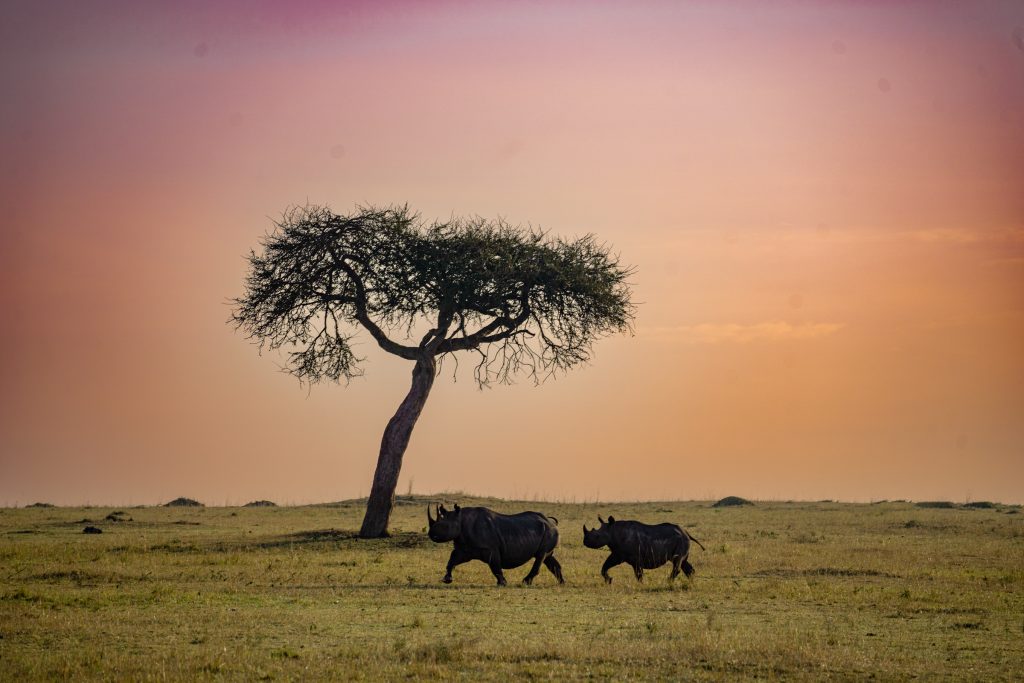
12. Patience is Key
When on safari, it can be so tempting to drive from one animal to the next, always in pursuit of the next best thing. However, patience is key – it often pays off to stay in one location. We ended up waiting by the river for nearly five hours for a wildebeest river crossing; while it was a long wait, it was so worth it. While we waited, we got to see so many other things. We saw baby elephants, two male giraffes fighting over a female giraffe, and baby warthogs playing – things we never would have witnessed if we continued to drive around. Just remember that if your guide suggests you wait, it will very likely pay off.
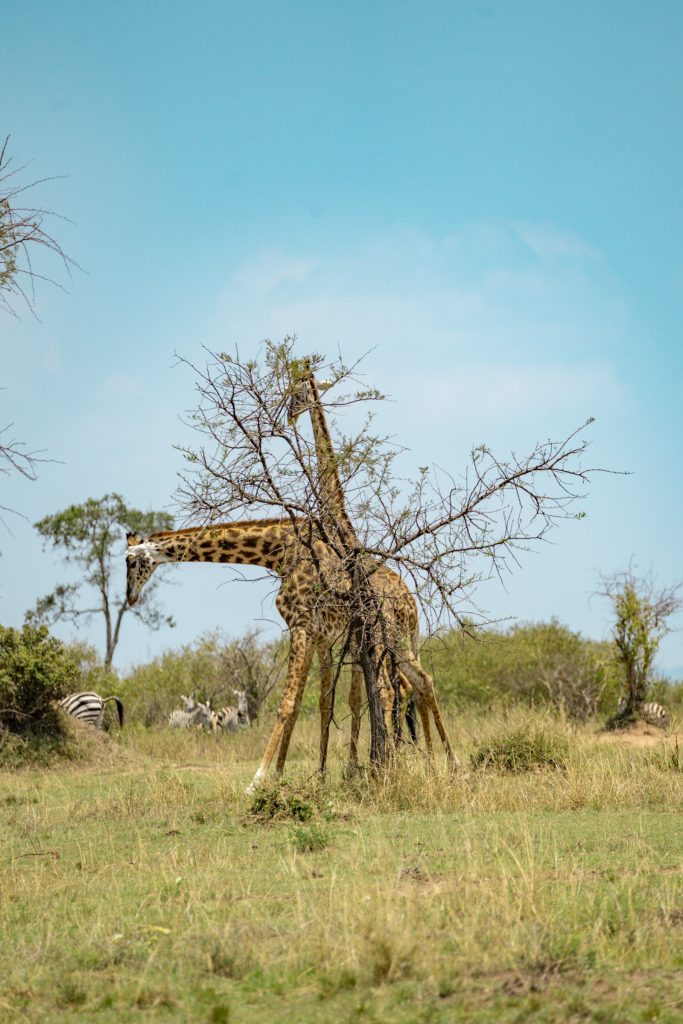
13. Respect the Wildlife
As part of my African safari photography tips, one of the most important things is to respect the wildlife. Always follow your driver-guide’s rules, because they will try to keep both you and the animals safe.
Remember that you are a guest in the animals’ environment and to never interfere with the animals just to capture a better picture. Do not try to impact what you are seeing; for example, do not interfere in hunts, try and wake up animals, or influence their behaviors in any way. It may be tempting to encourage a particular action in pursuit of that perfect photo, but remember that you are only there to capture photos!
14. Practice Before You Go
One of the most important steps is to practice before you go. For me, safari photography was very different than my traditional landscape photography, so I spent the weeks leading up to the trip experimenting with my gear. I practiced in my backyard with my dog; I’d highly recommend practicing at sunrise, sunset, and other low light settings since this is typically when animals are the most active.
Have you been on a safari? What African safari photography tips would you recommend to travelers trying to capture beautiful wildlife shots?
For some more travel inspiration, check out some of the posts below!
Safari Tips for First-Timers: 20 Top Things to Know Before Going on Your First Safari Safari Photo Settings : Best Camera Settings for Safari Photography Safari Outfits: What to Wear on Safari for Women: 10 Cute Outfit Ideas Tented Safari Camps : Top 13 Things You Always Wanted to Know About Tented Camps Tanzania : Kikuletwa Hot Springs: 14+ Things to Know Before You Go Tanzania Itinerary : Tanzania 7 Day Itinerary
You May Also Enjoy:
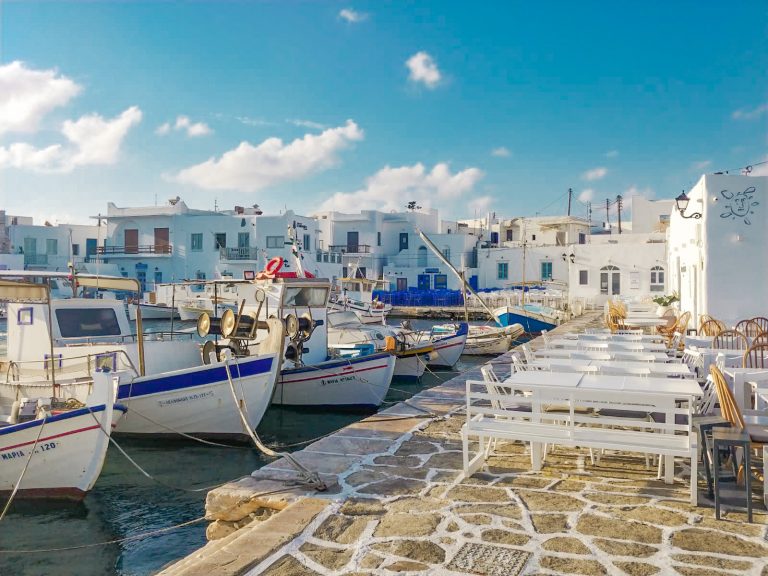
20 Best Things to Do in Naoussa, Paros
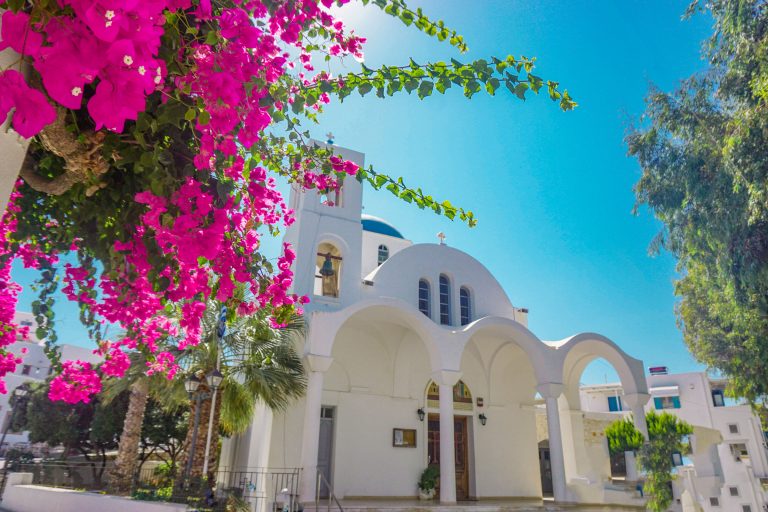
14 Best Instagram Spots on Paros (With Maps!)
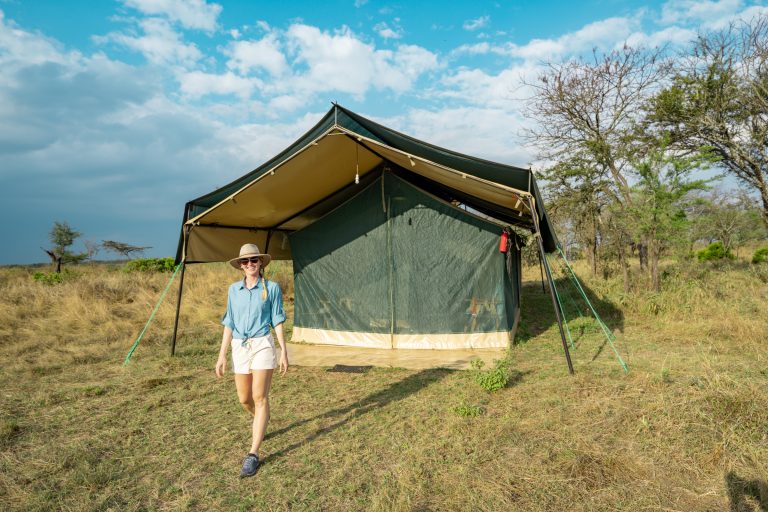
Tented Safari Camps: Top 13 Things You Always Wanted to Know
Pin for later:.
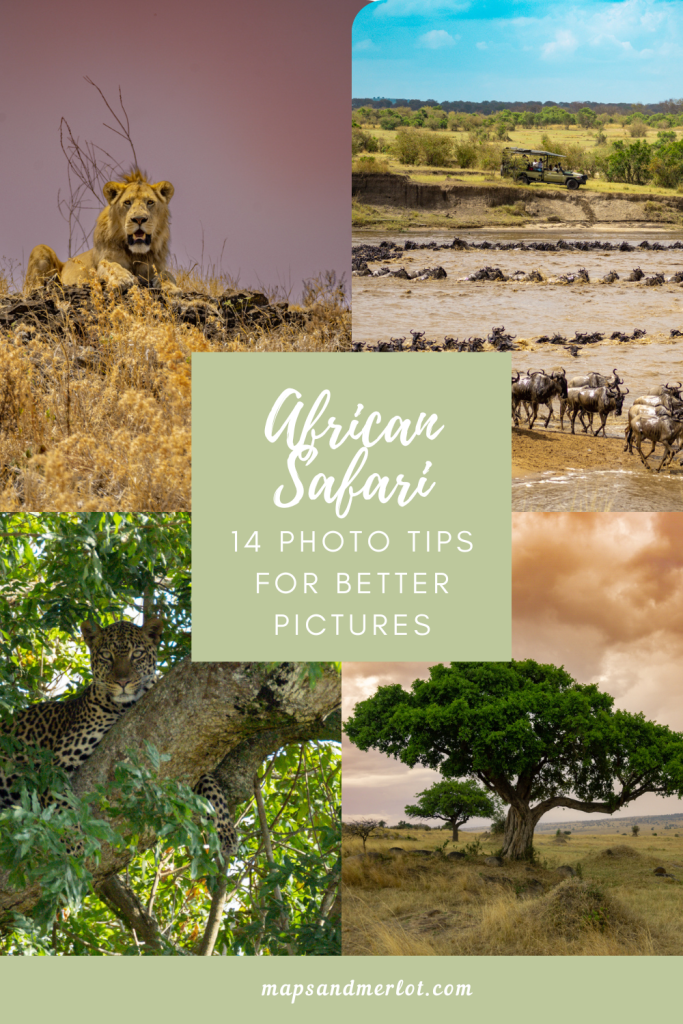
Leave a Reply Cancel reply
Your email address will not be published. Required fields are marked *
This site uses Akismet to reduce spam. Learn how your comment data is processed .

21 Safari Photography Tips for Capturing Stunning Safari Photos
As a passionate ethical wildlife photographer and qualified safari guide, I've gathered some valuable safari photography tips to help you elevate your safari experience. Even if you've never held a professional camera, you can still capture the raw beauty of the wild with just a few tips and tricks.
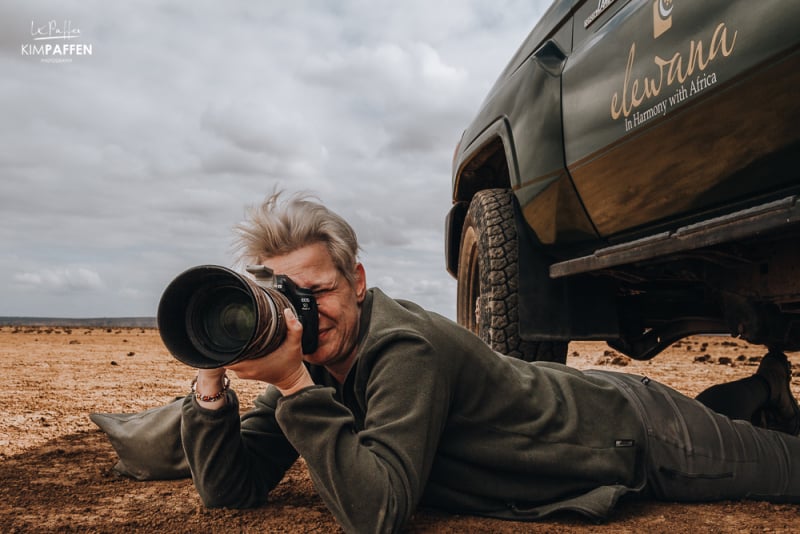
Embarking on a safari in Africa is a magical journey, and capturing these moments through photography allows you to relive the excitement and share the beauty of the African wilderness with others. Photography on safari also encourages you to pay attention to other things that might have gone unnoticed. By actively seeking unique angles and observing moments to capture, you become more attuned to the intricate details of the wildlife and the breathtaking landscapes surrounding you. It helps you notice small details and appreciate nature even more.
Read my 21 safari photography tips for capturing stunning safari photos :
1. Immerse Yourself in the Experience
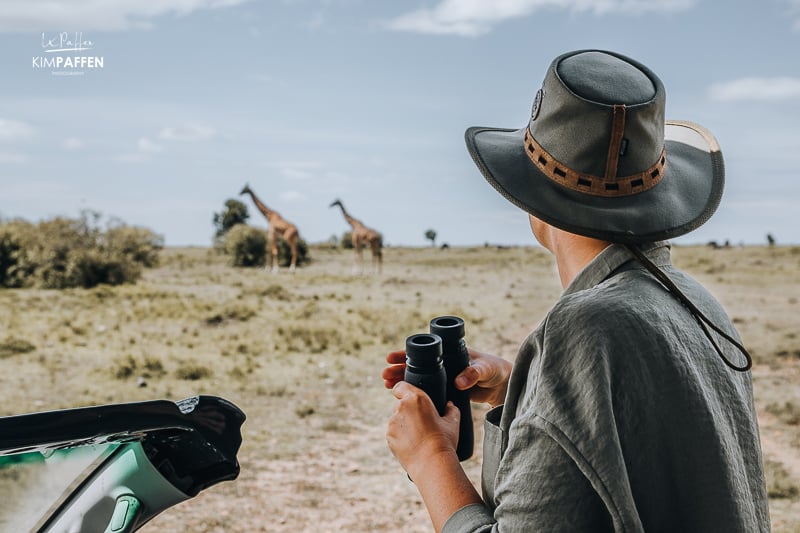
Each day on safari brings unique moments. Photography not only preserves memories but also encourages you to notice intricate details and appreciate nature. Seek unique angles and moments to capture, and let the beauty of the wild inspire you.
2. Be mindful of the Environment and Respect Wildlife
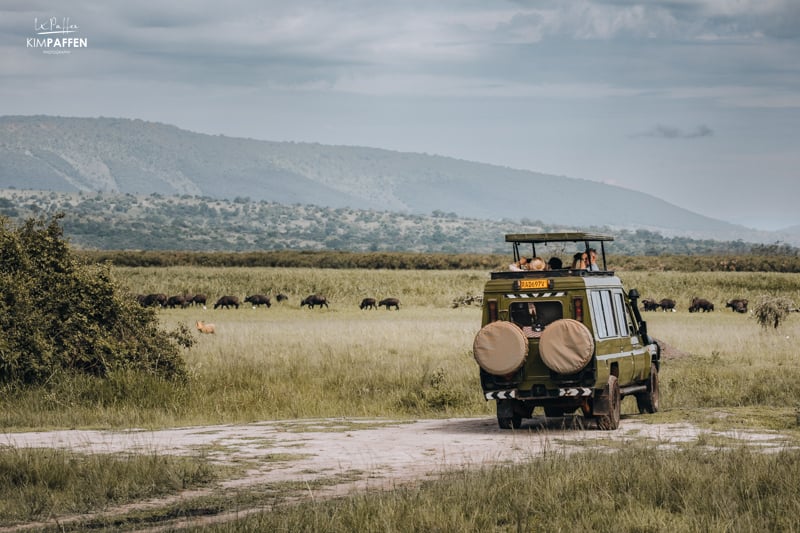
Patience is key to capturing natural behavior. Maintain a respectful distance, observe quietly, and avoid disrupting the animals' natural rhythm. Remember, you are a guest in their home and therefore this is one of the most important wildlife photography tips . Always respect local regulations, cultures, and environments. Your patience will be reflected in the authenticity of your safari photos.
If you approach an animal sighting, always be careful to not disturb the animal and minimize noise. How to show respect for the animals during wildlife photography?
- Maintain a respectful distance
- Approach animals indirectly
- Avoid positioning yourself upwind from the animal
- Keep your voice extremely low
- Switch your camera to silent mode to avoid startling wildlife
- Don’t use your flash
Whether you're a beginner or an experienced photographer, adhering to a code of conduct ensures the well-being of wildlife, contributes to conservation efforts, and ensures a more authentic safari experience.
3. Utilize Your Guide's Knowledge
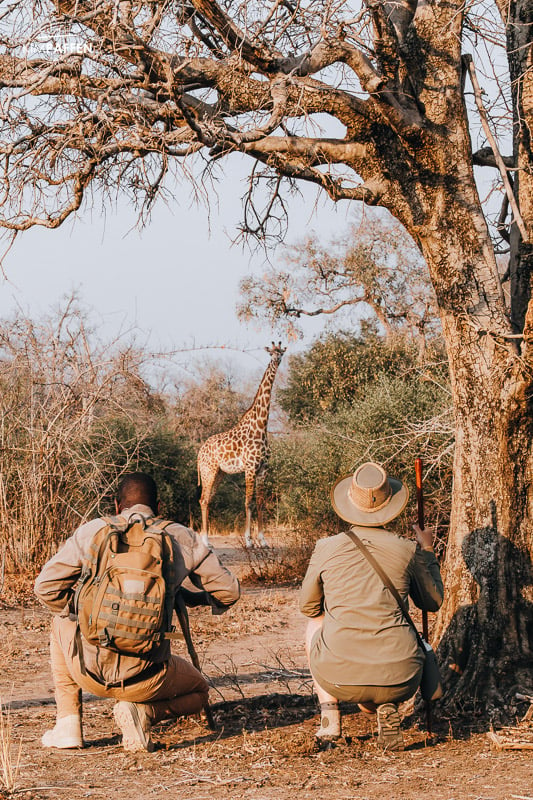
Collaborate with your local field guide who possesses invaluable knowledge of animal habits, territories, and behavior. Communicate your photography preferences, and leverage their expertise to position yourself for the perfect shot. Guides can anticipate lighting conditions and animal movements, enhancing your photography experience. For example, positioning the vehicle in a way that the sun is in your back instead of in your lens to have nice lighting on the animal or landscape you want to capture. However, on some occasions, it’s also great to photograph towards the sun to create a nice rim light around the animal.
As a nature and wildlife enthusiast, I encourage you to ask your safari guide lots of questions to learn more about the behavior and habitats of the wildlife you encounter. This knowledge helps you anticipate movements and position yourself for the perfect shot.
4. Pay Attention to Composition
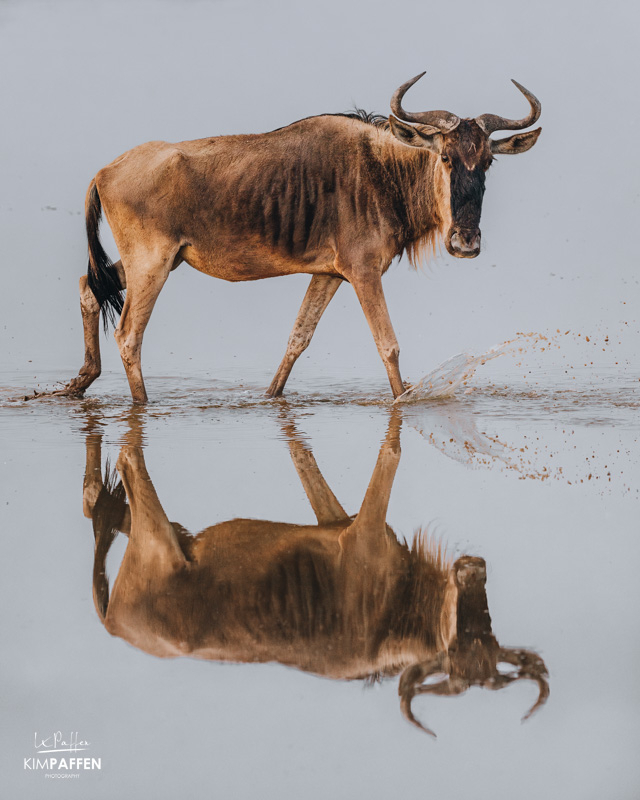
Crafting attractive compositions on safari is key to impactful photography. Be creative. Explore angles, perspectives, and framing techniques to create visually appealing images.
Rule of Thirds
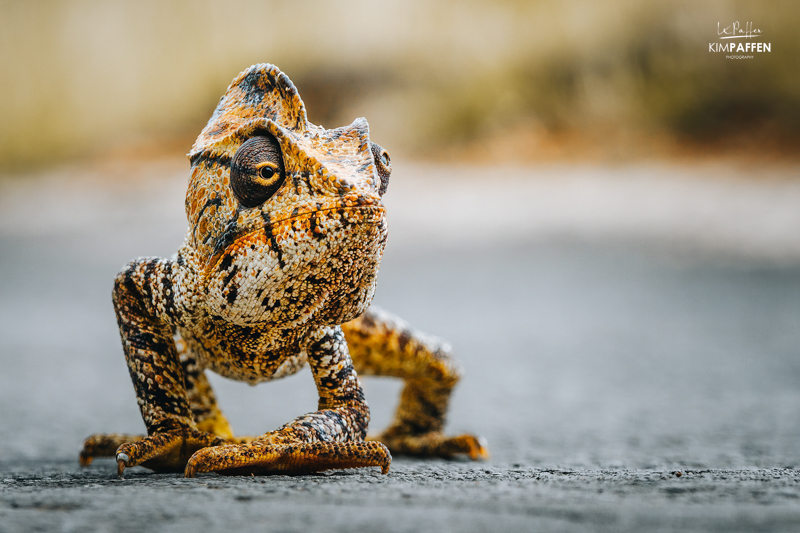
Apply the rule of thirds by placing your subject off-center for dynamic images. Utilize paths, tracks, or natural elements like bushes, rocks or trees for depth and scale. These composition tips elevate your photos without requiring advanced technical skills. Most cameras also have a grid that helps you to better frame your subject. Also, always think of leaving an empty space in the direction the wildlife is heading or the direction the animal is looking. In some occasions, it's also a good idea to put your subject in the middle.
Shoot from a low angle
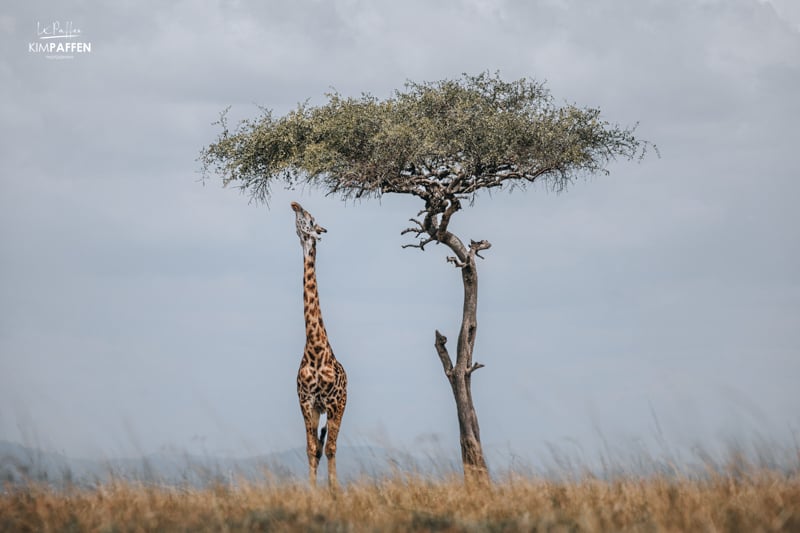
Shooting from a low angle (on the ground) can also make your composition more attractive. Safari in a game drive vehicle mostly doesn’t allow you to get out of the car to photograph wildlife, but on some occasions it might be possible. Another occasion could be if you’re on a walking safari . The advantage of getting low on the ground is that you are able to change the background in your scene. Being on eye-level with your animal also establishes a better connection.
Please consider the ethics of your framing – prioritize the well-being of the wildlife you encounter.
5. Show animals in their natural environment
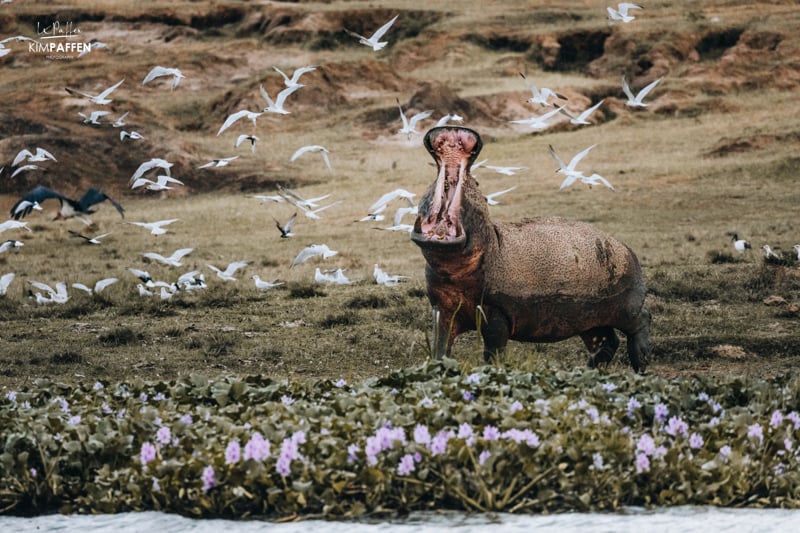
Capturing close-ups of the Big Five is often popular among safari tourists, and wildlife photographers, but don’t forget the beautiful environment these animals live in.
Their natural environment is equally important as they form that bigger picture together. And it’s those areas that we need to protect to save wildlife from extinction.
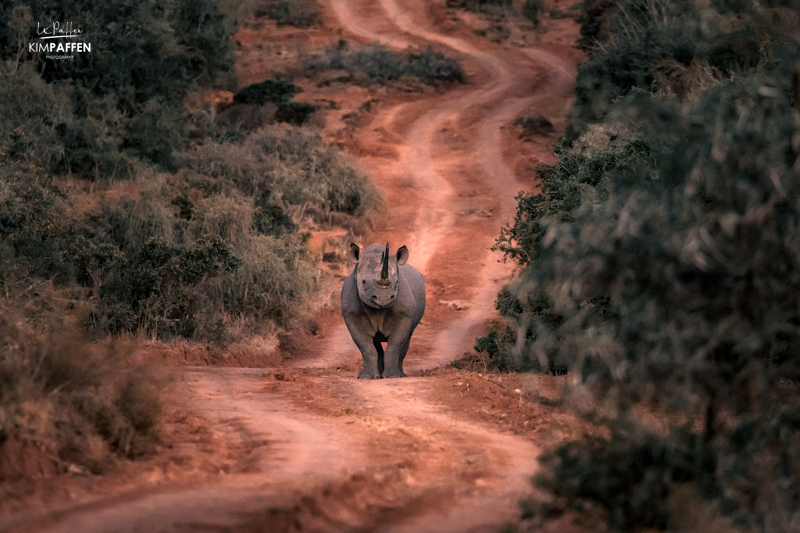
Every part of the ecosystem is dependent on each other. That’s the beauty of nature, and it allows the viewer to understand where the animal lives and flourishes. As a conservation photographer, I also love to showcase the wildlife’s home that we need to protect.
6. Master the Exposure Triangle
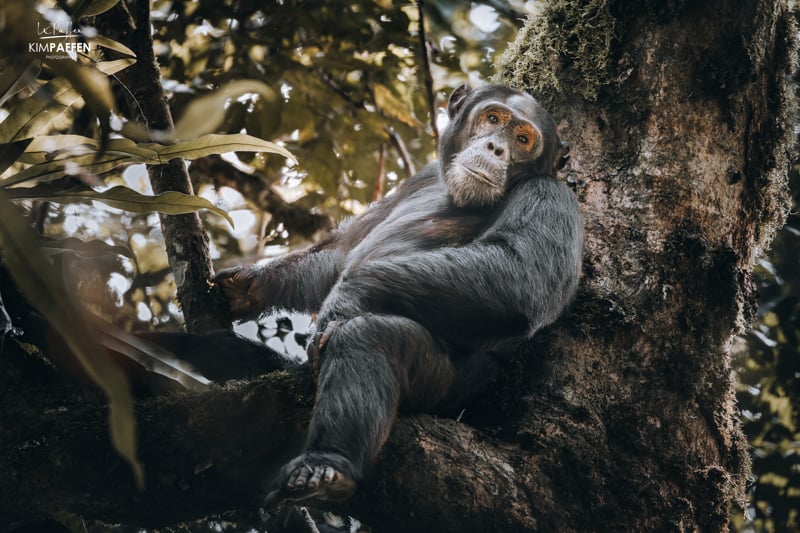
Light is a fundamental element in photography, and understanding the exposure triangle is a fundamental part to master the art of safari photography. Understanding aperture , shutter speed , and ISO allows you to adapt to various lighting conditions. These three factors work together to determine how bright or dark your photos will turn out, as well as the level of sharpness and graininess.
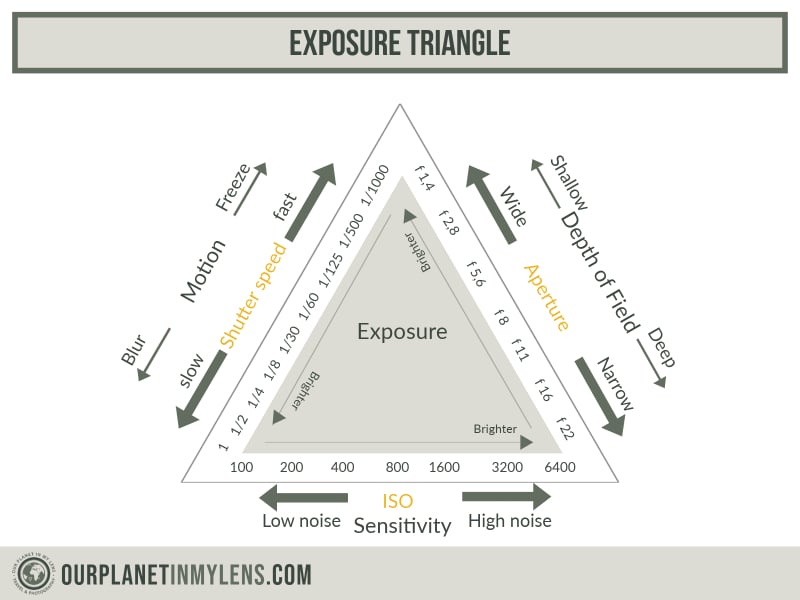
Adjust aperture for light control and depth of field , use shutter speed to freeze or create motion of animals, and set ISO for sensitivity (lower during the day, higher when it’s getting darker).
7. Use Shutter Priority Mode for moving wildlife
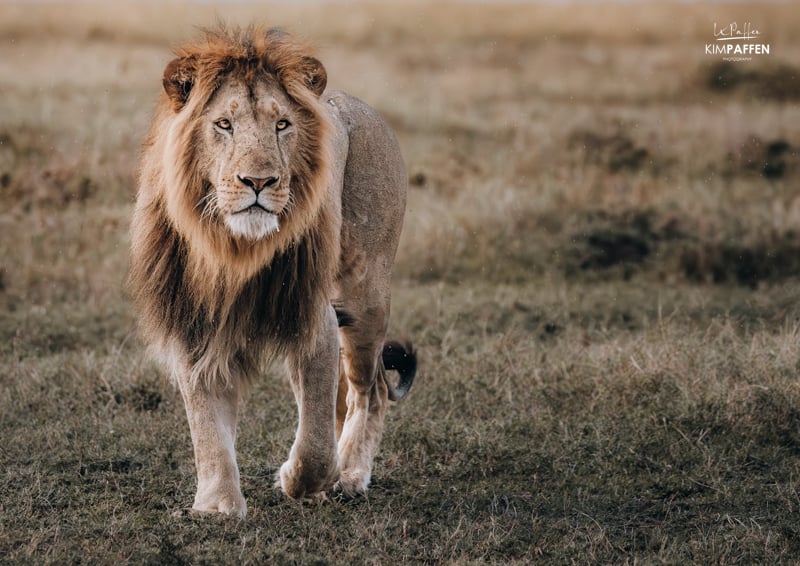
If you’re used to photographing in automatic mode, it can feel like a puzzle if you want to photograph wildlife manually. Therefore, my best photography tip is to set your camera on shutter priority mode (S). It means that you only have to think about the shutter speed and the camera does the rest like your ISO and Aperture (semi)automatically.
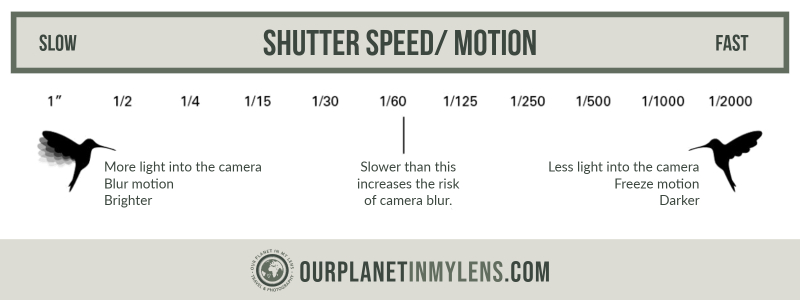
This technique ensures sharp and clear images, especially when photographing animals in motion on your safari. Use a fast shutter speed to freeze fast-moving wildlife action, and try to practice with various settings between 1/250th of a second up to 1/2500s. Additionally, fast shutter speeds can help prevent camera shake, particularly when shooting handheld.
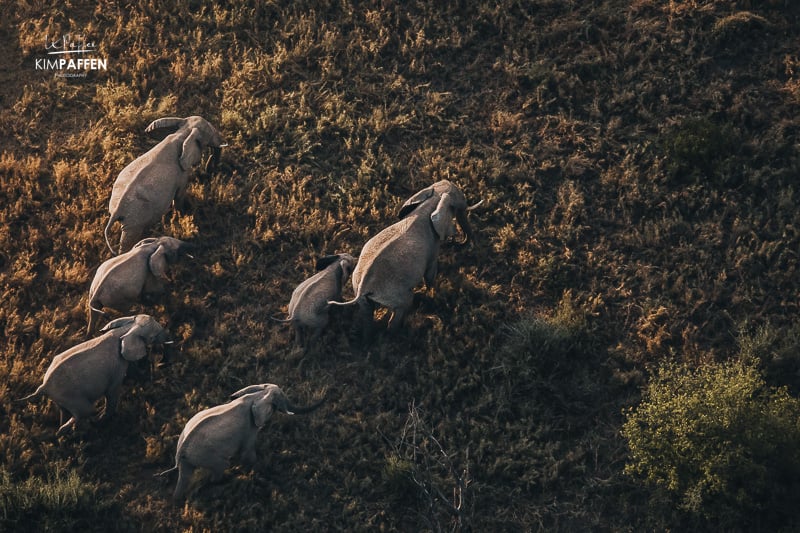
A rule of thumb: choose a minimum shutter speed based on the focal length you are shooting. An example: I often capture wildlife with a focal length of 400 mm, meaning my minimum shutter is 1/400s. If you are in a moving safari vehicle, boat or hot air balloon, and/or the animal you want to photograph is moving fast, then use a minimum of 2 times the focal length. So, shooting at 400 mm would mean a shutter speed of 1/800s. To capture moving birds in flight , you might want to practice choosing shutter speeds to up to 1/2000s.
8. Choose AI Servo (AF Continuous) Mode for moving wildlife
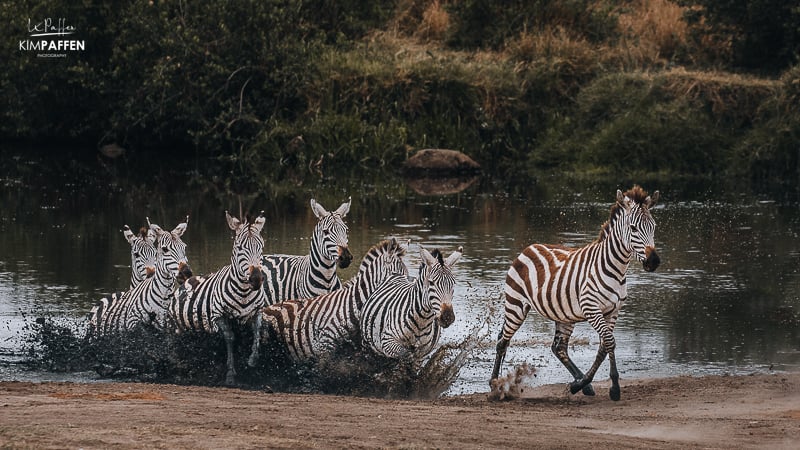
AI Servo is the best mode to capture wildlife that is moving, to automatically keep track of and stay focussed on the moving animal.
9. Practice with Aperture Priority Mode for a ‘blurry’ background
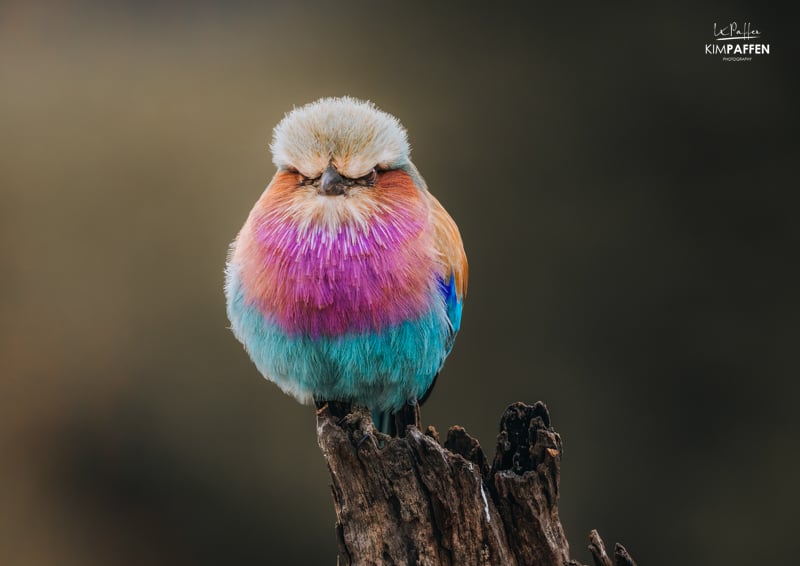
Aperture Priority in safari photography allows you to set the desired aperture, controlling the depth of field in your wildlife shots. In situations where you want a blurred background to emphasize the subject, or conversely, a broader depth of field to capture more details.
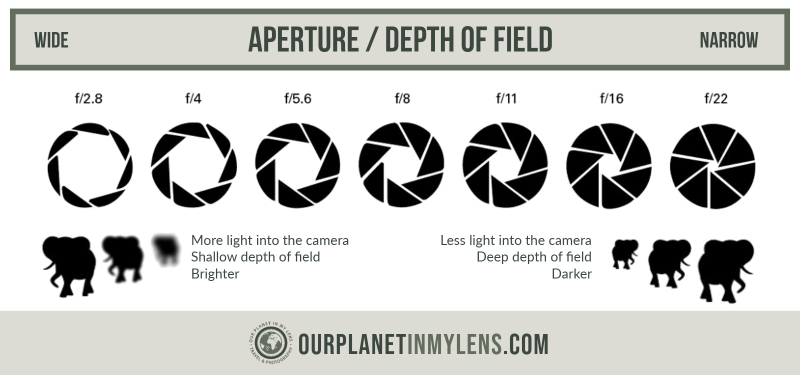
Aperture Priority mode gives you this creative control. For example, when you want a close-up of a lion or a colorful bird with a blurred background effect, like the Lilac-breasted Roller in the above image. The more zoom and the lower the aperture number, the more you are able to eliminate the background in your image and create that nice compression.
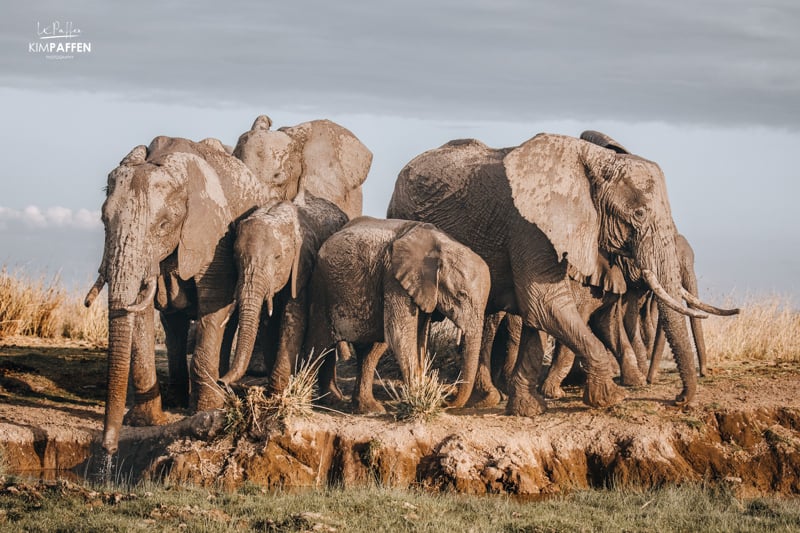
On the other hand, if you want to photograph a group of animals like a herd of elephants, I recommend choosing an aperture of f/8 to get the whole group of animals in focus (and not only one).
10. Try Burst Shooting Mode in Safari Photography
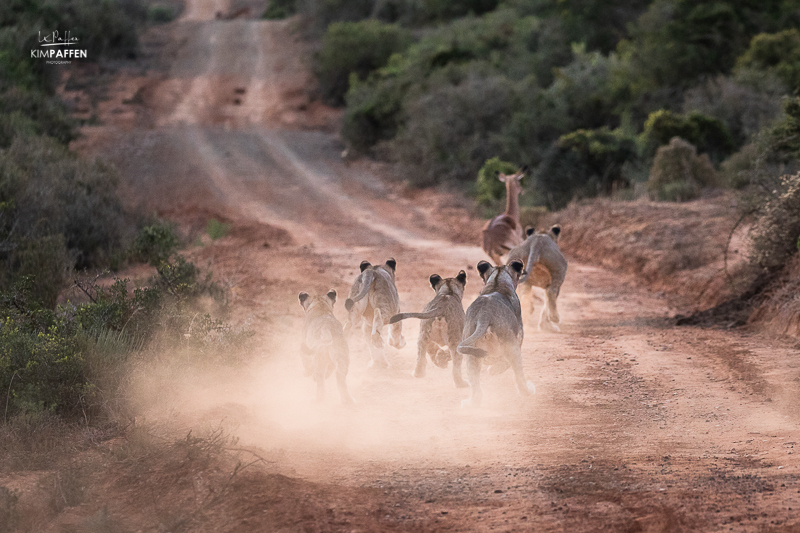
Shooting in burst mode is an important wildlife photography tip for safari enthusiasts, catering to both beginners and advanced photographers. Wildlife is unpredictable, and animals often move swiftly. Burst mode allows you to capture a series of rapid shots, increasing the chances of freezing dynamic moments, ensuring you don't miss critical actions or spontaneous behaviors.
Beginners benefit by having a safety net, capturing shots even if timing is a challenge. For advanced photographers, burst mode offers creative opportunities to select the perfect frame from a sequence.
11. Focus on the eyes of an animal
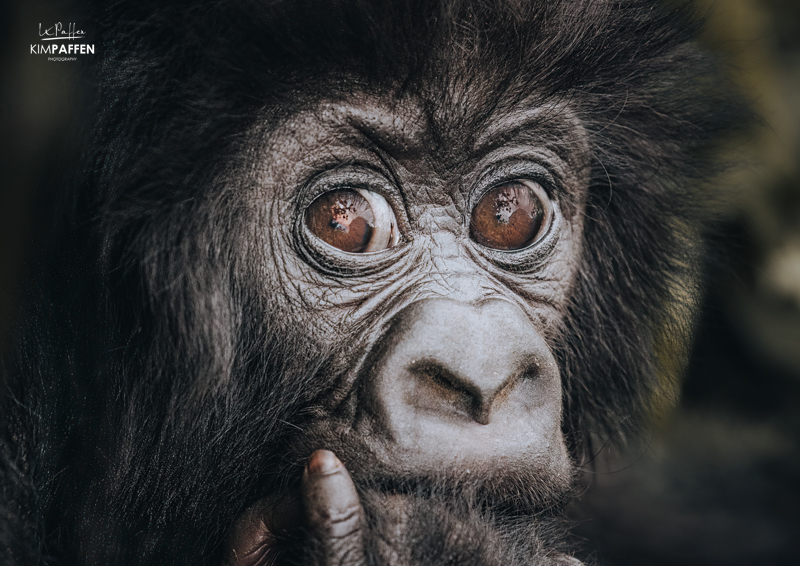
Always focus on the eyes of the animals ; that’s the cardinal rule of wildlife photography! This golden tip elevates your shots, creating a connection between the viewer and the wildlife subject. Instead of hastily snapping numerous wildlife images, wait for the moment when the animal turns its gaze towards you.
Focusing on the eyes provides viewers with a unique perspective. It creates a visual connection, as if the animals are looking directly through the photograph at the audience. This transformative approach adds depth and emotion, making your wildlife images more memorable and resonant, especially when capturing close-up shots of animals. This technique enhances the details in the eyes, showcasing the intricacies and expressions that might be missed in broader shots.
Aim for a shutter speed between 1/250s to 1/2500s, depending on the animal's movement, and an aperture between f/2 to f/6, depending on your lens. These settings ensure both eyes are in focus, capturing the essence of the wildlife subject.
Remember, the eyes are the windows to the soul , even in the animal kingdom. So when focusing on the animal’s eyes, you can create truly remarkable and memorable wildlife photographs.
12. Shoot in RAW if you can

Shooting in RAW format on a safari offers several advantages.
RAW images provide a higher dynamic range compared to JPEG, capturing more details in both shadows and highlights. This is crucial in the diverse and often challenging lighting conditions encountered during a safari.
RAW files contain more image data , allowing for extensive post-processing without compromising quality. This flexibility is valuable when adjusting exposure, contrast, color balance, and other elements during the editing process (I usually edit my wildlife images in Lightroom).
Shooting in RAW preserves the original quality and detail captured by the camera's sensor. This is especially important in wildlife photography, where preserving the authenticity of the scene is crucial.
13. Timing is Everything: The Golden Hour and Beyond
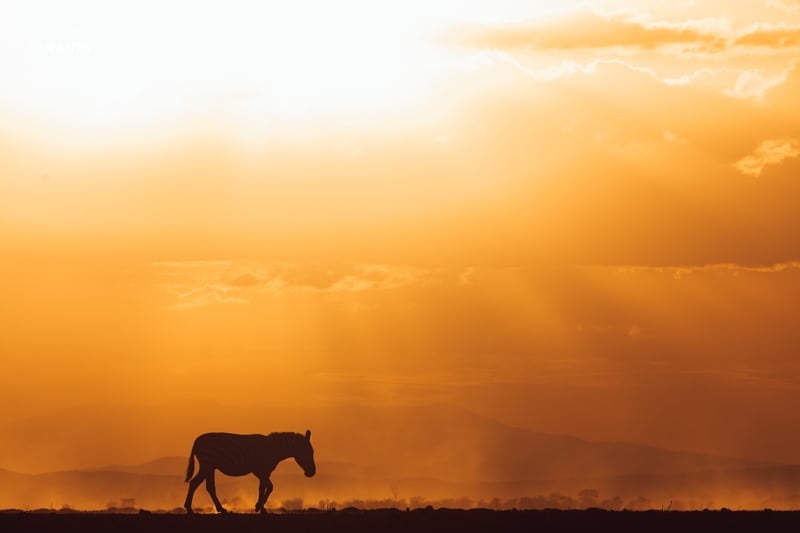
The golden hours of sunrise and sunset conveniently align with the typical timing of game drives during a safari when the animals are most active. The warm, soft light enhances the colors and textures of the African landscape, creating a captivating backdrop for your photos.
The advantage of photographing during the Golden Hour , sometimes called ‘Magical Hour’, is that the soft golden light reduces harsh shadows and creates a golden glow. Patience during these hours rewards you with captivating glimpses into the animals' daily lives.
14. Equip Yourself Wisely with the right camera gear
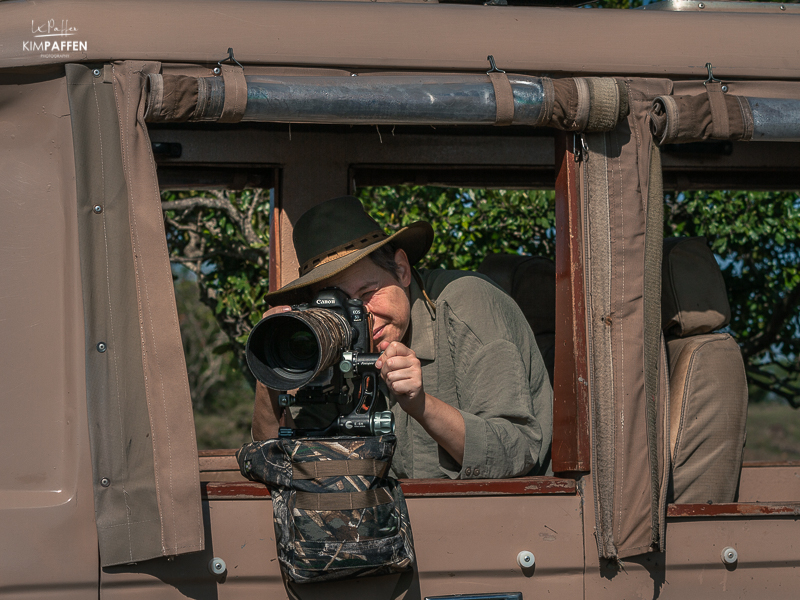
Ensure you have the right camera equipment for safari photography.
Bring a DSLR (Digital Single Lens Reflex) camera and zoom lenses with 200-600 mm range or a quality compact camera for versatile quality wildlife photos. Safari photography on a smartphone is not the best option to photograph wildlife, but it is, of course, a great option to create short videos, stories, and reels.
Zoom lenses for safari photography
I highly recommend a long lens with a minimum of 200 mm zoom to capture distant wildlife. A zoom lens allows you to effortlessly switch between photographing animals from a distance without disturbing them and capturing intricate details of flora and fauna up close.
More ideally, a zoom lens with a focal length of 300 mm+ is great for capturing wild animals or birds. If you’re using a full-frame camera, I would suggest a 400 mm zoom lens and if you are a keen birder a 600 mm long lens is perfect for bird photography on safari.
Wide-angle lens
Apart from zoom lenses, I always carry a wide-angle lens (for example 16-35 mm), great for capturing the beautiful African landscapes and its animals or magical sunsets.
Essential accessories
Don't forget essential accessories, such as memory cards, extra batteries, cleaning wipes, a charger, a camera bag, and a rain cover. Consider a beanbag for stability.
Hire photography gear for safari
Not having the right camera gear ? Nowadays, the quality of compact cameras is pretty good as well, and it’s also possible to hire photography gear .
15. Consider bringing a tripod and/or beanbag
Bringing a tripod and/or beanbag on safari is a crucial photography tip for the following reasons:
- Stability for Clear Shots: A tripod or beanbag provides stability, reducing camera shake and ensuring clear shots, especially when using longer lenses.
- Flexibility in Composition: Both tripods and beanbags allow photographers to compose shots with precision. A tripod is ideal for setting up shots in a fixed position, while a beanbag provides a more flexible option, allowing quick adjustments and movements.
- Support for Heavy Equipment: Professional camera gear, including telephoto lenses, can be heavy. A tripod and/or beanbag offers robust support for heavier equipment, preventing fatigue during extended periods of shooting.
- Long Exposure and Low Light Conditions: In low light or during sunrise/sunset safaris, a tripod is essential for capturing long-exposure shots without introducing motion blur. A tripod is also great to practice with star photography and photographing the milky way when you're back at the safari lodge .
- Silent Shooting with Beanbags: Beanbags are preferred for wildlife photography as they provide a stable base without the noise associated with adjusting tripod legs. This is especially important to avoid disturbing animals in their natural habitat.
- Versatility in Safari Vehicles: Safari vehicles often have limited space, and tripods may be cumbersome. Beanbags are more versatile, easily adapting to the contours of the vehicle and providing a stable platform for photography.
16. Make a back-up of your images on safari
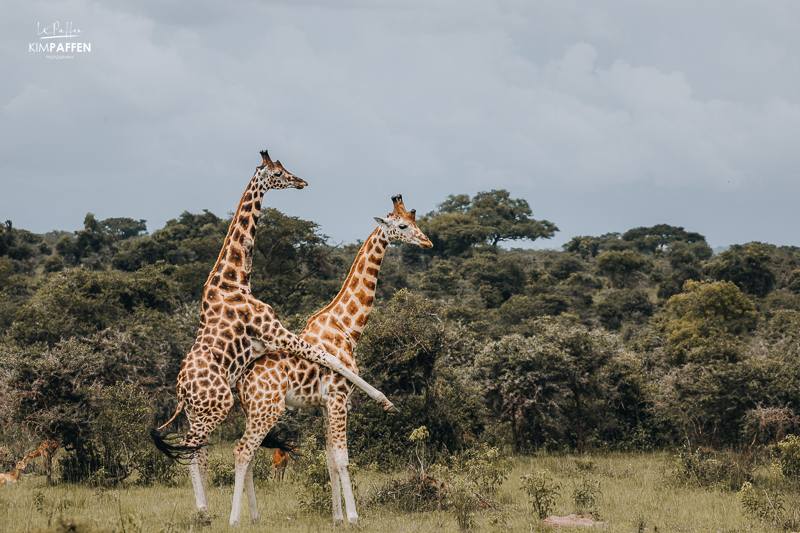
I always back up my images while traveling. When my memory card is full, I back up my images onto an external hard drive. That is mostly enough, but for people who want to travel longer, I highly recommend backing up to a second external hard drive (kept in different locations). Hard drives I use are Lacie Rugged, Samsung, and Seagate.
If you are using your phone only, I also recommend backing up your images in the cloud, for example iCloud, Dropbox, Google Drive, Google Photos, you name it.
17. Keep it Simple and Be Patient
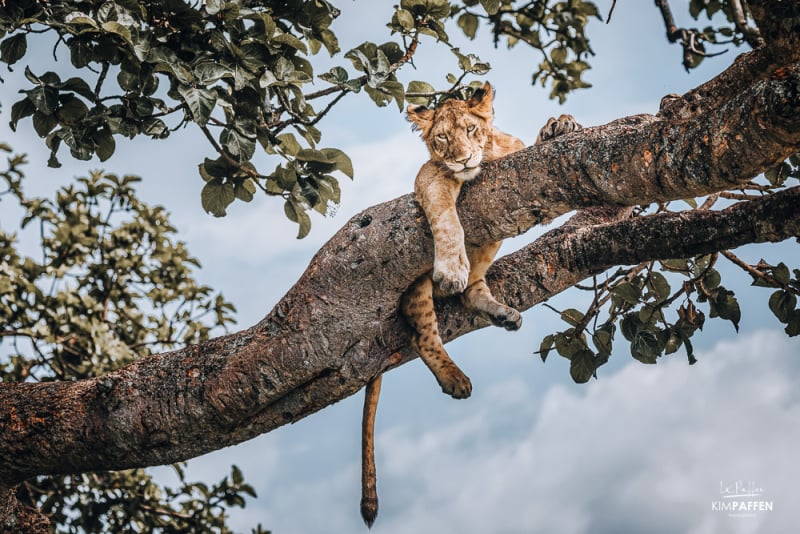
Wildlife photography requires patience . Allow yourself time to observe and wait for the right moment, focusing on mastering basic techniques. Don't be overwhelmed by settings; simplicity often reveals the raw beauty of wildlife.
18. Edit your photos
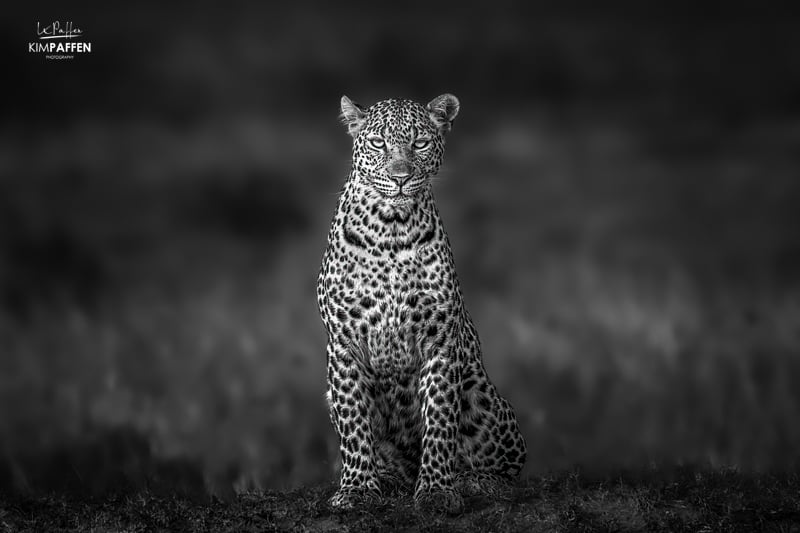
Editing your safari photos is not essential, but if you want to step up your safari photography game, I highly recommend learning how to edit your wildlife images in, for example Adobe Lightroom (for both desktop and smartphone) and Photoshop . Especially if you are planning to print your photos, post-processing is an important step.
Get in touch for a private workshop on how to edit your safari photos or join me on a photo safari where I will share editing tips to improve your wildlife photography.
19. Know Your Camera
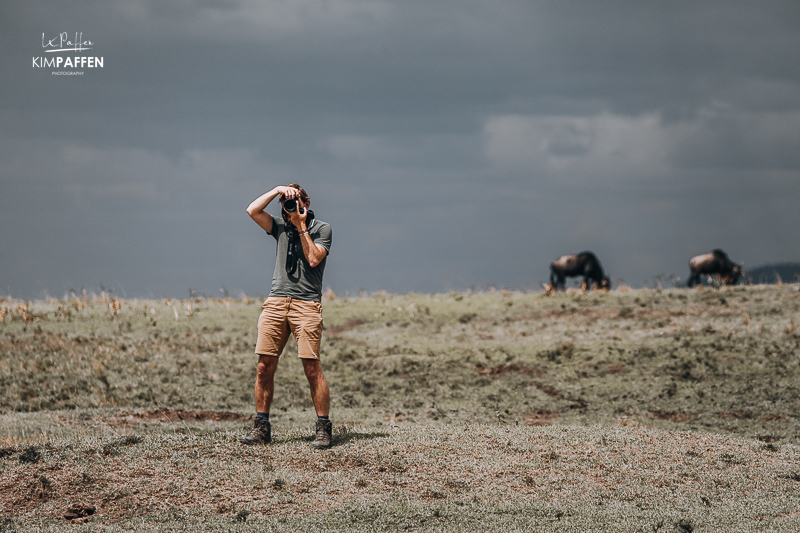
If you're a beginner photographer, all the settings on your camera can be a bit overwhelming. When I first started photography, my camera was a puzzle to me. I kept using the automatic mode until I learned the basics of photography during a volunteer program in South Africa . Having two game drives per day in Thanda Game Reserve in KwaZulu-Natal was the perfect way to start practicing shooting in manual mode and learn more about the best settings for safari. I highly recommend to start learning more about your camera and camera settings before you go on safari. Go through your camera manual to find the buttons and settings of some of the technical photography tips I mentioned in this article.
20. Embrace Learning and Growth
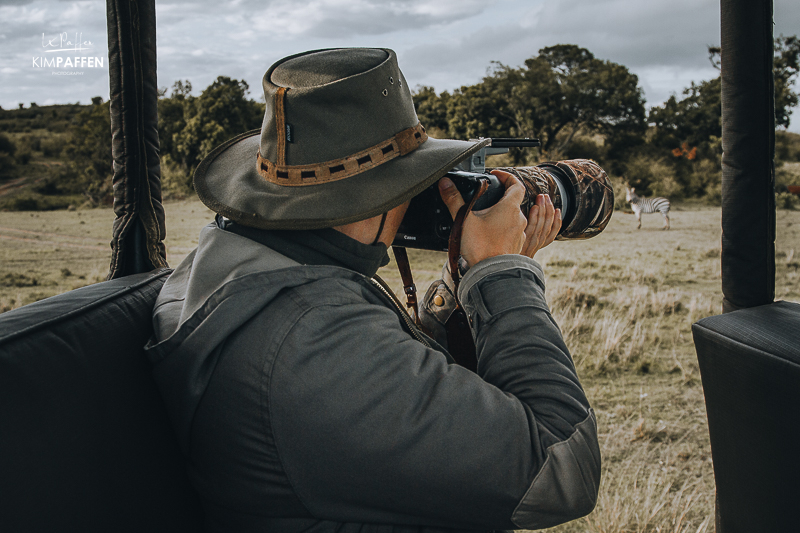
Whether you're a beginner or experienced photographer, nurture your interest in learning photography. Books about photography, online photography courses, workshops and guided photo safari tours with photography experts offer opportunities to enhance your safari photography skills; including my small group photo safaris . To master a new skill, learning by doing is often the most effective approach to get to know your camera better. So please remember, anyone can learn photography, and the wonders of a safari in Africa can ignite your passion for capturing the mesmerizing beauty of our planet's wildlife.
21. Join me on a photo safari to Africa
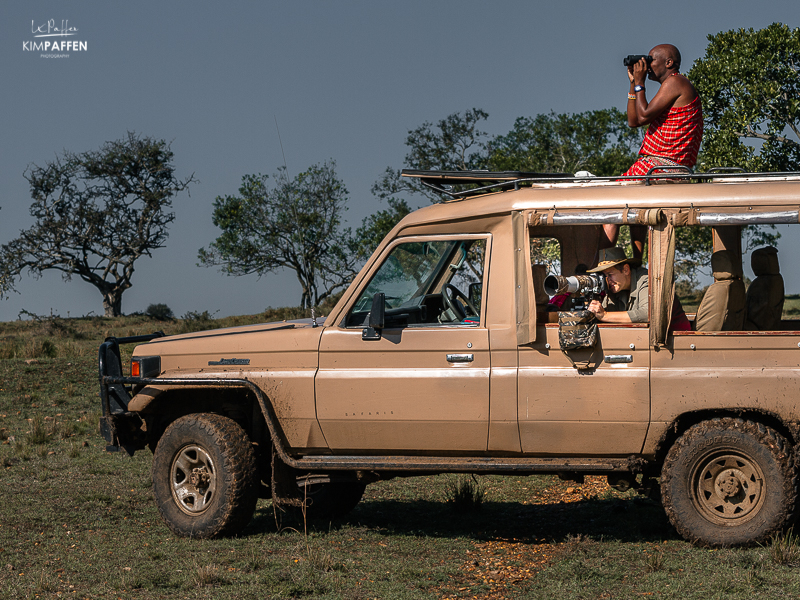
Do you want to improve your photography skills on safari and travel with like-minded travelers? Join me on a small group safari to Africa . As a professional wildlife photographer, I can help to improve your photography skills on safari by sharing hands-on experience and valuable tips. Instead of rushing to tick off the Big Five, we will spend our time carefully during the beautiful golden hours around sunrise (morning game drive) and sunset (afternoon game drive).
It doesn't matter if you're a beginner, intermediate, or professional photographer. Having an interest in photography and and being prepared to learn are the most important aspects.
Safari Photography Tips to take the best photos on safari
These tips, coupled with the expertise on my photographic safari trip to Africa , will undoubtedly enhance your safari photography journey. Capture the essence of Africa's breathtaking wildlife and create lasting memories with every click of your camera (or even your smartphone).
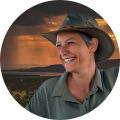

Safari Photography: Tips, Best Cameras and More
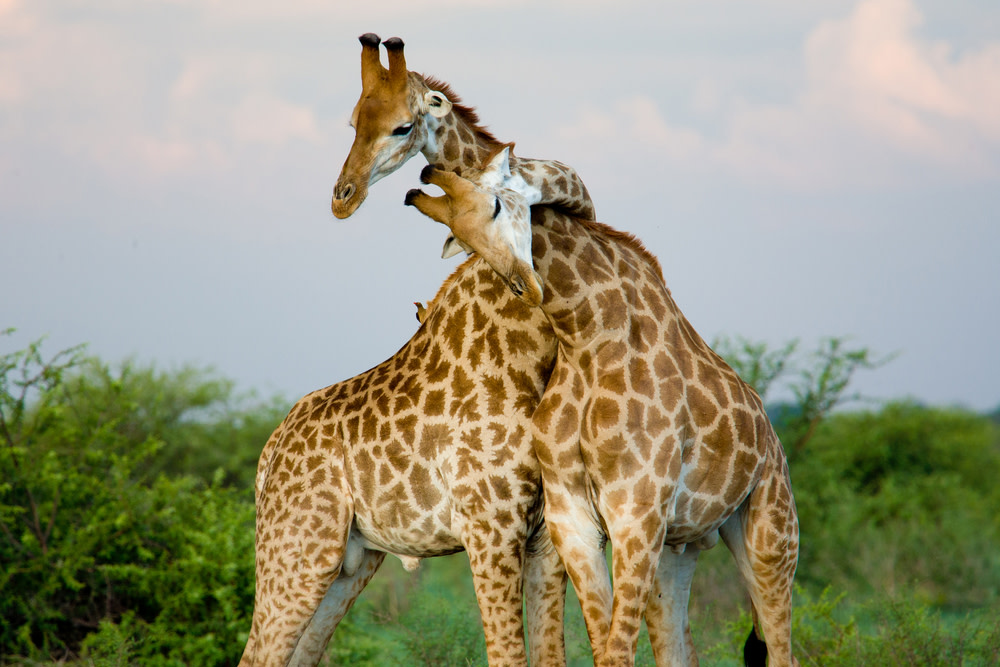
Africa’s emerald savannahs, a thick-maned lion silhouetted against a fiery sunset, elephants meandering by a serene waterhole or the intense gaze of a leopard concealed in the underbrush — these are moments that avid travelers and photographers dream of capturing. Safari photography isn't just about snapping pictures; it's about immortalizing the raw beauty, power and fragility of the wild. And, it offers a unique challenge, melding the unpredictability of wildlife with the nuances of an untamed environment, making safari photography distinct from any other photographic genre. Whether you're preparing for your first luxury safari adventure or seeking to elevate your existing skills, this chapter will guide you through the maze of best practices, camera equipment choices and insights that can transform fleeting encounters into timeless images you’ll treasure forever.
Safari Photography Tips and Techniques
Capturing high-quality images is a must on your luxury safari. They serve as priceless, tangible memories you can showcase in your home and look back fondly on years after your journey. Of course, snapping the perfect photograph of the effervescent African landscape and thriving wildlife is no small feat. No matter if you’re exploring the lush jungles or the sweeping savannah, Africa’s wild landscape is constantly in motion. The sun, shadows and moving creatures can make it difficult — but far from impossible — to take a great photo. All of this is to say that safari photography differs from your typical portrait session. And to help you along, many safari guides are themselves experienced photographers with an in-depth lived knowledge of the hows and whens of wildlife photography. However, you don’t have to be a professional photographer to take stunning pictures on your safari with these tips:
- Let the sun be your storyteller. Lighting can drastically affect your image quality, but there are no ring lights to be found on Safari. Furthermore, flash can appear unnatural and disturb wildlife.
It’s best to let the sun be your guide. The golden hours of dawn and before dusk provide the ideal light conditions for your photography. Embrace the magic of the golden hour as the sun paints the world in an amber palette and find beauty in the shadows.
- Respect the rhythm of the wild. Patience is key on a luxury African safari and the same is true for photographing wildlife. In the canvas of the wild, moments unravel at their own pace and you simply can’t rush nature. You may not get that “perfect shot” on your first day on safari, but you will certainly capture amazing moments and vignettes you didn’t know you were looking for.
The heartbeat of nature should guide your shutter and not be rushed. Each photograph is a testament to your patience and profound connection with the wild.
- Follow the rule of thirds. Simple photography tips can help you capture an impactful image. The rule of thirds is perhaps the most well-known “rule” of composition that helps transform a simple photo into a work of art.
While balance and composition are key, you can also discover new perspectives with your photography. Let nature inspire unique angles and heights in your photography.
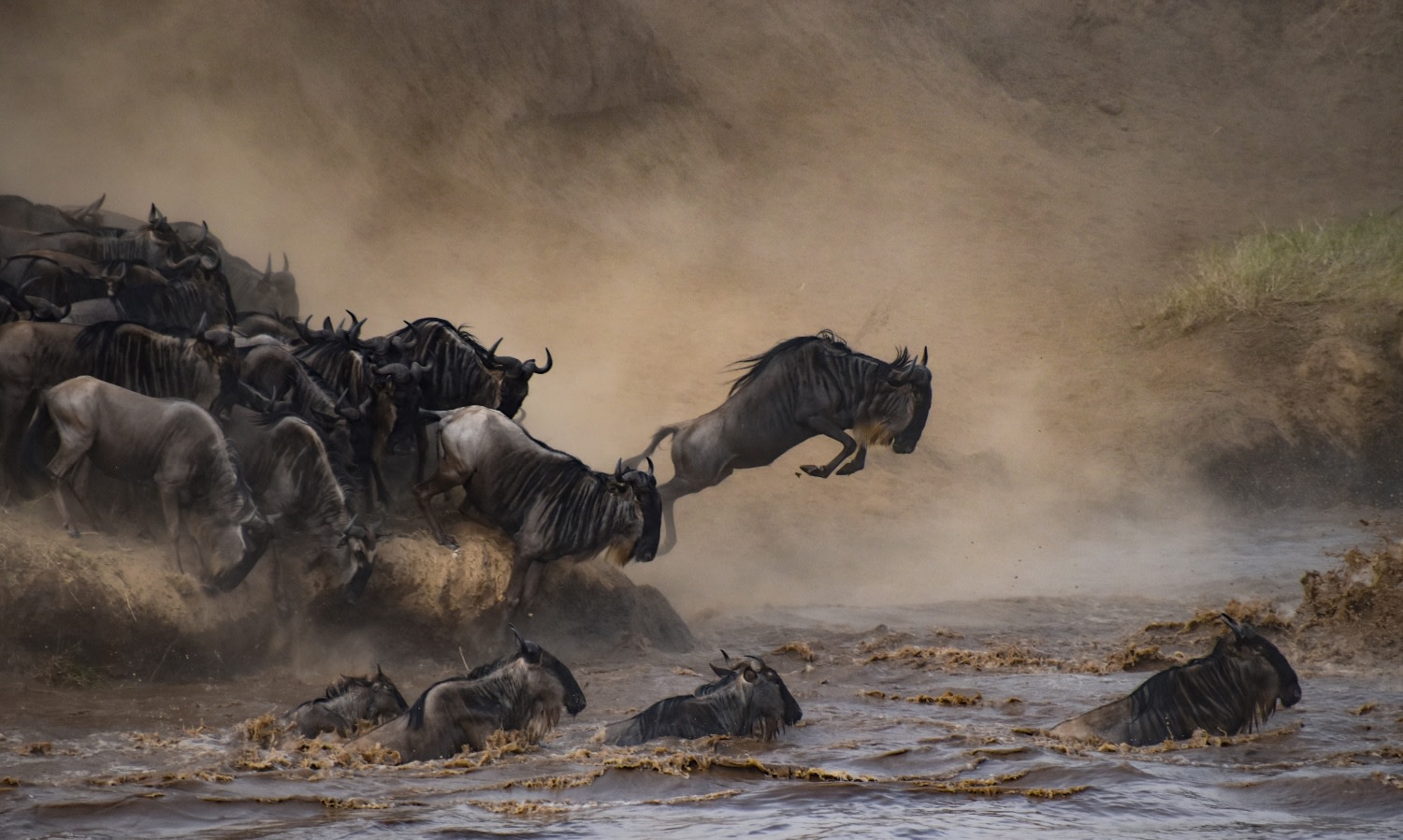
Best Cameras for Safari Photography
When you want to capture the essence of the untamed world, a smartphone, although convenient with a good camera, doesn’t quite do it justice. While you can certainly snap memorable moments on your phone to share with family and friends, nothing compares to a high-quality camera.
For outdoor photography and capturing wildlife in particular, enthusiasts and professionals alike often choose between two types of cameras: DSLRs and Mirrorless. Experts agree both have distinct advantages for taking wildlife photos and can be good options.
DSLR cameras offer fast shutter speeds to capture wildlife on the move. They also tend to be larger and have a longer battery life, ideal for a long day in the bush. However, Mirrorless cameras have come a long way and are often preferred for travelers on the go. They are more compact with an equally fast shutter speed and amazing image quality.
Ultimately, the choice is what you are more comfortable with.
Regardless of the type of camera you choose, keep these tips in mind for capturing the best photographs:
- The best lens for safari photography is a long one. A long lens allows you to capture high-quality images of wildlife from yards away on a game drive. You can switch to a wide-angle lens to better capture sweeping landscapes.
- Fast shutter speeds are a must for capturing moving animals or taking pictures from a moving safari vehicle.
- Get to know your camera settings . Many wildlife photographers consider aperture priority mode the best camera setting for safari photography. This allows you to capture properly exposed images of moving animals more easily while still allowing for a lot of manual control. Settings like autofocus also help immensely.
- To continue preserving priceless moments, you should take care to maintain your camera on safari. Keeping dirt and dust off your lens and preserving battery life is perhaps most important in the bush.
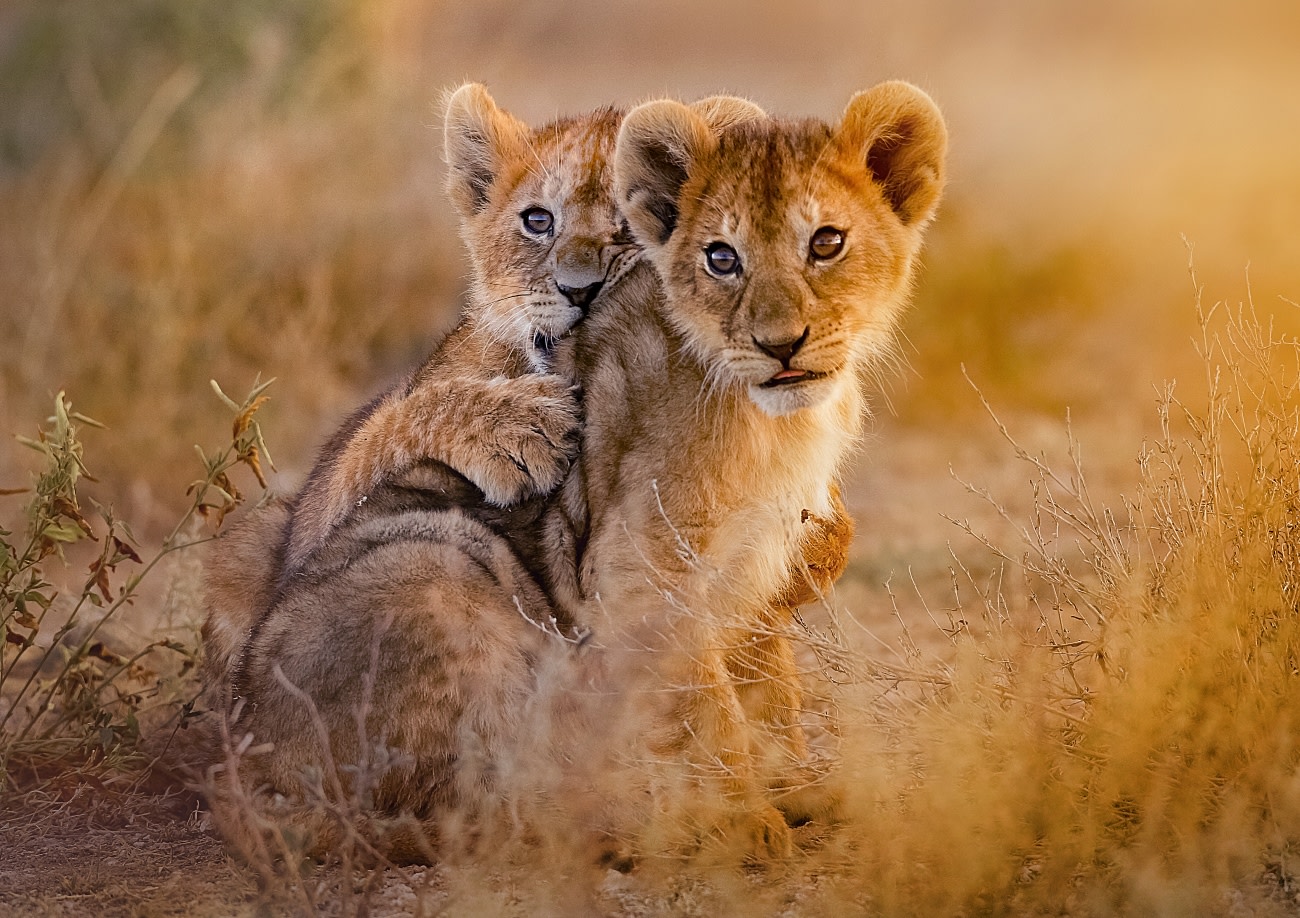
Essential Accessories
Finally, we cannot overlook the importance of the accessories that can elevate your safari photography. While it’s important to pack light for a day in the bush, these few additions can truly transform your images and overall experience.
- Binoculars: A pair of high-quality binos, often provided by your guide on safari, deliver an enhanced view of wildlife from yards away and the opportunity to see colorful birds in detail. This enhanced view allows you to spot the perfect image.
- Tripods and monopods: Stabilize your shots and snap stunning images of sunsets and landscapes. Also ideal for long-exposure images of the stars.
- Camera bags: Protect your equipment from the elements or wandering hands when not in use.
- Filters: Enhance colors and reduce glare during your photography session.
- Spare batteries and memory cards: Be prepared for long shooting sessions on your game drive.
Consider an African Safari Photography Tour
It can feel daunting trying to capture the untamed heart of Africa’s wilderness through the lens. A specialized luxury safari photography tour can help you capture the perfect shot on your trip. On a Tanzania photography safari, you can snap stunning pictures from high above in a hot air balloon. Or, keep things classic on a Kenya photography safari to take action-packed photographs of the Big 5. On a luxury safari photography tour, you will have the time and resources to take priceless images with the help of experienced guides who know the landscape inside out. Explore more of our Kenya photography safaris and more destinations where the opportunity to capture epic images awaits with ROAR AFRICA.
Subscribe to receive the latest updates

Contact Details
Connect with us, press inquiries, general inquiries.

My Account My Account
African Safari Tours & Holidays Kenya Blog
Kenyan Safaris
The 7 Best Cameras to Bring on an African Safari
Picture this.
You’re out on a safari while a beautiful lion strolls up close to the vehicle. It’s ready to let out a loud roar that will catch the attention of the other lions in the area .
That’s a moment that you don’t want to miss!
With the right safari camera on hand, you’ll be able to get the perfect picture that will “wow” everyone that sees it.
Are you wondering what the best camera for a safari is? Keep reading to find one that will do what you want without breaking the bank!
Going Pro With a DSLR Safari Camera
On the more expensive and professional side of things, a DSLR is capable of many things that other cameras aren’t. There’s a lot of flexibility when it comes to lenses with these cameras, as there are many that can help to improve a shot.
They’re some of the best long zoom cameras that you can find.
When carrying around a DSLR camera , you’ll have a bit of equipment that goes along with it. That means that you’ll have to account for this when embarking on your safari.
If you’re serious about taking the best photos and have good knowledge of how lenses can improve your shots , this might be the right option for you.
So, which DSLR safari cameras are best?
1. Canon EOS 80D
The Canon EOS 80D is one of the best cameras for a safari if you’re looking to get a beautiful and crisp photo.
Paired with the right lenses , this camera will give you sharp and clear photos taken at any range. They’ll be high definition and sure to please everyone you show them to.
One great thing about this camera is that it’s built to go with you off the beaten path, so you won’t have to worry about getting a little dirt on it here and there.
It’s a little pricier than the other cameras on this list, but it’s one of the best you’ll find for an African safari. It’s perfect for a professional or for avid travelers who pride themselves in snapping every beautiful moment.
2. Nikon D7500
The Nikon D7500 is another pricier option, but it’s also a winner in the area of wildlife photography gear.
This equipment has an autofocus feature which can help you focus on the animal you want to capture even when there are others around it. It has a resolution of 20 megapixels that will create stunning photos for the amateur wildlife photographer.
It’s an awesome choice if you don’t need the highest quality African safari pictures, but you want them to be crisp enough that they’re enjoyable to look at.
Bridge Cameras: Looking Pro With Less Equipment
Looking for a quality camera that doesn’t need external lenses to take a nice shot?
A bridge camera might be the right option for you. Rather than bringing around extra lenses, these devices have them built-in. They have all the functionalities you’ll need to take gorgeous photos.
3. Panasonic Lumix DMC FZ1000
The price of this camera can’t be beaten when you consider the ease that comes with taking photos with it.
It’s easy to use, even for beginners who might feel a little intimidated. The built-in zoom is simple and has a vast range that can get you beautiful close-up shots with ease.
The quality of this safari camera shows in both the build of the camera and look of the photos. You don’t have to be a pro to use it, but your photos will definitely look like they were taken by one!
Point and Shoot Cameras
The easiest to use of the cameras mentioned here, these can also achieve high-quality photos. You might even have one at home already!
Point and shoot cameras can still provide pleasant results in your wildlife photography.
These cameras are typically much cheaper than the other options.
4. Canon Powershot SX730 HS
The Canon Powershot is great for its price when it comes to shooting in the distance. You can’t always expect that the animals will be very close to you, so this means that you can still get a good shot from far away.
It even has an adjustable screen that will help you make sure that your subject is inside the frame. With its help, you’ll always be able to tell what you’re shooting!
For the safari enthusiast on a budget, it will take awesome photos for a lower price.
5. Nikon CoolPix B500
Capable of superzoom, this is a great point and shoot camera that can handle farther subjects. Capturing the African landscape is simple to do as well. It’s easy to carry around and won’t get into the way when you want to take in the beautiful sights for yourself.
It’s perfect for anyone who loves to get their pictures up to share on social media. This process is streamlined when you choose to use this camera for your safari photos!
6. Sony Cybershot DSC W800
If you want a camera you can store in your pocket when you’re not using it, this is a great option.
It’s not only affordable, but it also takes a decent photo that you’ll want to show everyone when you return back home.
Although the optical zoom isn’t as strong as the others on this list, you’ll still be able to zoom in on subjects that are a little closer to you. For the price, this is a great choice for someone who doesn’t want to break the bank on wildlife photography gear.
Are You All About Video?
Sometimes, you want to capture moments through beautiful videos. What better way to do this than with a GoPro, meant for the outdoors and capable of capturing every moment in high resolution?
If you want to capture the moment of a lion roaring majestically as you watch, the GoPro might be the camera for you.
Pictures can say 1000 words, but videos can capture them!
GoPros are the best on the market for video footage taken in the outdoors, and they’re built to last. You don’t have to worry about their safety as much as you might with another camera, especially if you have them in a case.
Though they’re pricy, you’re sure to get a great video out of them!
Are You Ready To Get Wild?
Once you have a safari camera prepared that you know will work for you and your budget, then it’s time to capture those memories. Safaris are known to be fun and exciting, giving you a great glimpse into the beauty of Africa and all that it has to offer.
If you love wildlife, then there’s no better place to visit.
Ready to experience the nature and wildlife that Africa and Tanzania have to offer? Check out the safari packages that we have to offer you on our website!
- Student Successes
- My Learning
How to Capture Stunning Safari Photography on Your Next Trip
You can also select your interests for free access to our premium training:
If you’re planning a safari trip in the near future, you’ll want to make sure your camera is packed and ready to go. Safari photography can be some of the most rewarding and beautiful photos you’ll ever take, but it takes a little bit of know-how to capture those perfect shots. Here are seven tips to help you get started.
Safari Photography: What to Expect on an African Safari
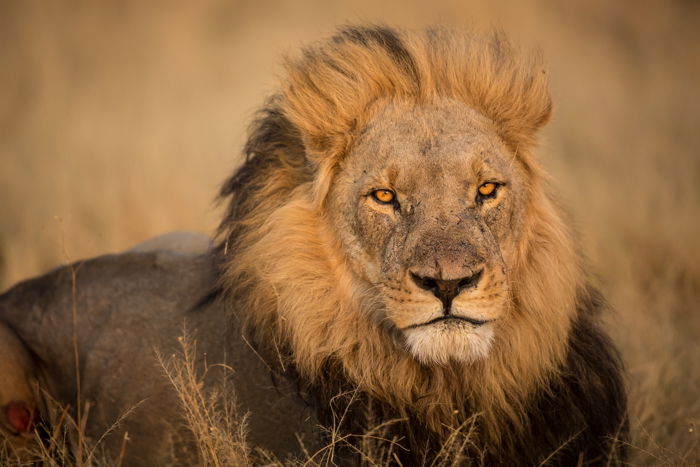
Equipment for Safari Photography
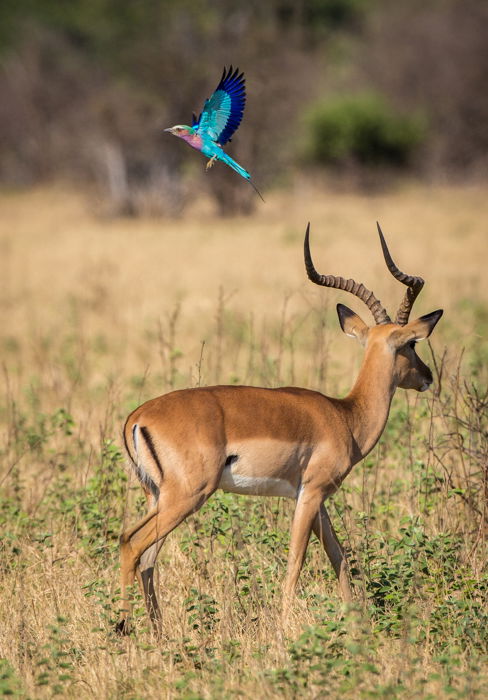
Heat and Light

Seasons and Weather
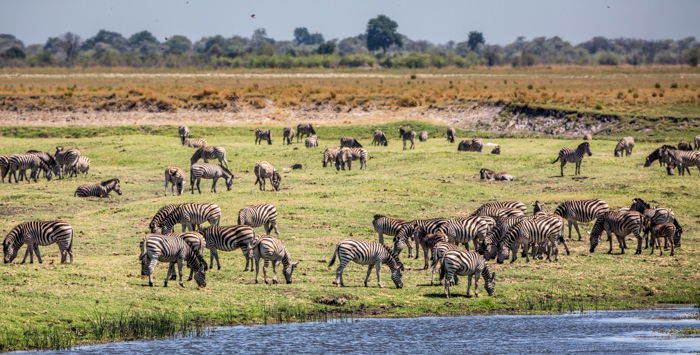
Landscapes and Perspectives
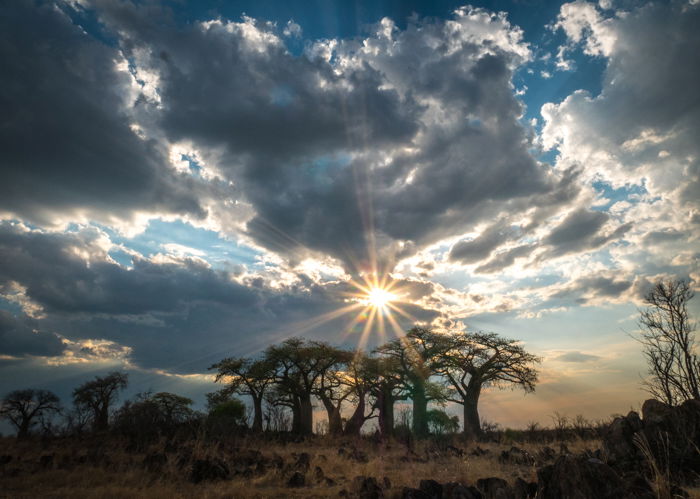
Finding Your Own Composition
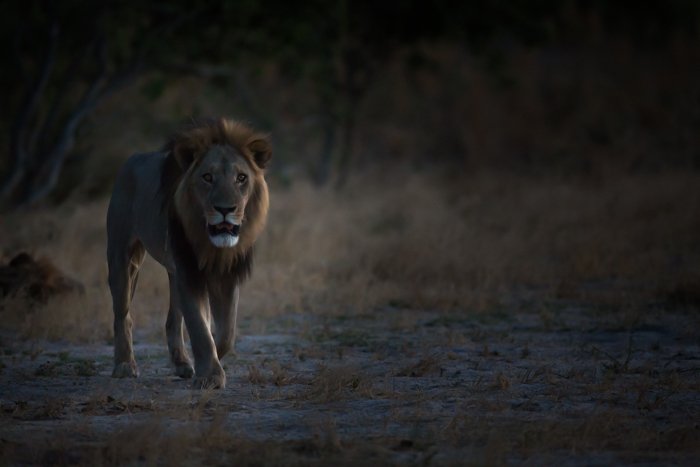
Popular Content
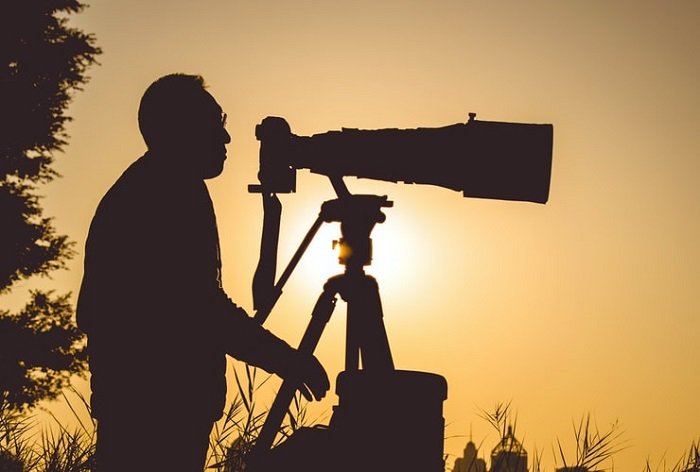
Everything You Need to Know About Planning a Photo Safari in Africa
Frequently Asked Questions
We get a lot of great questions from our clients who are interested in making photography a central element of their safari experience. Here are a few common questions we’ll answer for you in this piece:
- What are the best times of year for photographers to visit Africa?
- How much time do you recommend we spend at each camp?
- Can Extraordinary Journeys help me find a specialist photographic guide to accompany my safari?
- Will the camps have specially-equipped photographic vehicles?
- How close will I get to the wildlife?
- Where can I get access to computers and editing software to use while on safari?
- What are the luggage allowances for camera equipment?
- Will the camps have charging areas for my batteries?
- Can I bring a drone?
When to Visit Africa for a Photographic Safari (and What to Expect)
Generally speaking, we advocate for a slow-travel approach whenever possible, especially on safari. The less time you spend in transit, the more time you’ll have to enjoy your destination, get to know the guides, and—best of all—encounter incredible wildlife. We recommend you spend at least three nights at each camp.
The best time of year to safari really depends on where and when you travel in Africa. Usually, you’ll want to travel in the driest season when the safari experience is most dramatic, typically between June and October.
If you can withstand the heat, we think October is the most dramatic time for photography in Botswana, Zambia, and Zimbabwe.
In East Africa, photographers love timing their safaris with the Great Wildebeest Migration from June through October.
We especially love East Africa from late September through December. There are fewer crowds, and even though it can be a bit damp at times, the rains only add to the drama. Another great time to visit East Africa is in January and February.
That said, some photographers love the green season: dramatic skies, clouds to soften the light, fewer crowds, longer days, and less dust.

Where to Go for Photography on Safari
Learn from the experts: camps with photographers in residence.
Three of our all-time favorite camps with in-house photography experts are:
- Alex Walker’s Serian collection in Kenya’s Maasai Mara and Tanzania’s Serengeti
- African Bush Camps at Bumi Hills Safari Lodge in Zimbabwe
- The Jackal & Hide from Natural Selections, located in the heart of the Okavango Delta

Get the VIP Treatment: Hire a Private Specialist Guide
For an even more exclusive photography experience, consider hiring a specialist photographic guide. Here are three of our favorite options.

Wild Studio with Great Plains Conservation — Botswana & Kenya
Wild Studio was founded by world-renowned wildlife filmmakers and photographers, and the expertise of their guides matches that pedigree. Still, whether you’re a beginner or an experienced photographer, you’re welcome at Wild Studio. Your private guide will educate you on photographic techniques while also providing key insights and time-earned perspective on the area’s wildlife, their habitats, and the importance of preserving the ecosystem. And at the end of your safari, a storyboarding exercise helps you tell the story of your safari and help spread the message about conservation once you return home.

Tafika Camp — Zambia’s South Luangwa National Park
A New Zealander by birth, Bryan Jackson visited Africa for the first time in the 1970s and never left. Now co-owner and Safari Manager of Remote Africa Safaris, Brian is based at Tafika Camp in Zambia’s South Luangwa National Park . He has been guiding in the Luangwa Valley for over 20 years and provides exceptional photographic expertise for specialized photographic safaris, thanks to his keen eye and decades spent honing his craft.
Depending on the size of your group, the fee to hire Bryan Jackson is $400 to $700 per day and includes a private photographic vehicle.
The Hide — Zimbabwe’s Hwange National Park
The Hide has an in-house photographer/videographer, Neil Fairlie, a native Zimbabwean and experienced wildlife documentary filmmaker. While Neil is based at The Hide , he’s also available to guests at Changa Safari Camp . Neil can guide tours for groups or individuals, beginners and professionals alike. The fee for groups of 1-4 travelers to hire Neil is $420 per day (for a full day), including a private vehicle and guide, in addition to Niel.

Leave Your Gear at Home: Camps that Provide Cameras for You
Special offer: wilderness safaris.
Wilderness Safaris has an incredible partnership with Olympus . If you stay at a Wilderness property in Botswana, Namibia, or Zimbabwe, you’ll have access to a limited number of camera sets to use throughout your safari itinerary. These sets are free of charge and available on a first-come, first-served basis for exclusive use by guests of Wilderness Safari-managed properties.
The benefits are twofold:
- Travelers get access to world-class Olympus equipment and knowledgeable Wilderness guides
- The partnership supports a scholarship program for secondary and tertiary education through Wilderness’s non-profit partner, Children in the Wilderness .
If this program is of interest to you, get in touch, so we can reserve a set of Olympus gear for you!
Below are a few properties we recommend for travelers interested in taking advantage of the photography amenities on offer with Wilderness (note: Bisate is not part of the Wilderness-Olympus partnership).
Okavango Delta, Botswana
- Mombo Camp & Little Mombo – Each room has a camera.
- Vumbura Plains – A few sets (camera with lenses) plus one pair of binoculars will be available in the main area. Bonus: Wilderness offers a slideshow for guests explaining the partnership with photographic tips and images.
Linyanti, Botswana
- Kings Pool – A few sets (camera with lenses) plus one pair of binoculars will be available in the main area. Lessons will be on offer in the sunken hide during midday when the hide is most active. An alternative option is a photographic experience on the Queen Silvia barge. In the summer months, there will be a mobile hide for the carmine bee-eaters.
Skeleton Coast, Namibia
- Serra Cafema , Hoanib , and Little Kulala – Cameras will be available in camp for guests to use in their own time, with a booklet available explaining how to use the camera, including some photographic tips and tricks. Pro-tip: for expert guidance at these camps, we recommend hiring a private guide.

Volcanoes National Park, Rwanda
- Bisate Lodge – A couple of camera sets will be available for guests to use on their gorilla treks. The camera will be pre-set in order to ensure that guests get the optimal photographic experience. Tips for photographing gorillas will also be provided.
Beyond the Wilderness-Olympus partnership, several Great Plains Conservation camps cater to photographers and can provide a camera for you. Here are a few of our favorites:
- Zarafa Camp – Linyanti, Botswana
- Selinda Camp – Linyanti, Botswana
- Duba Plains Camp – Okavango Delta, Botswana
- Ol Donyo Lodge – Amboseli and Chyulu Hills National Parks, Kenya
- Mara Plains Camp – Maasai Mara, Kenya
- Mara Nyika Camp – Maasai Mara, Kenya
All of Great Plains Conservation’s 5-star camps have a Canon 5d Mark III or IV with two sets of wide-angle lenses (including 100-400mm) per room for guest use. Guides can do a basic tutorial and can always position the vehicle to maximize the chances for great images.
Learn Everything You Need to Know: Specialist Photo Camps
If you want to learn how to use your camera to its fullest capabilities, a specialist photo camp might be perfect for you. Here are three of our favorites:
Pangolin Chobe Hotel – Chobe National Park, Botswana
For professional, passionate, knowledgeable photographic guides, look no further than Pangolin Chobe Hotel. You’re guaranteed a warm welcome and helpful attention to your photography, regardless of your skills or experience. Plus, incredible wildlife at Chobe make for a wonderfully immersive safari experience.
Zimanga Private Game Reserve – KwaZulu-Natal, South Africa
Zimanga offers state-of-the-art photographic hides , built in partnership with “The Invisible Wildlife Photographer,” Bence Mate . These hides provide visitors extraordinary opportunities to observe African wildlife. Additionally, Zimanga’s game drive vehicles have a limit of two passengers per row, ensuring ample space for your gear and maneuverability.
Photograph in Comfort: Camps with Photographic Vehicles
For the ultimate experience of comfort, amenities, and exceptional access to great photographic opportunities, a specially-designed photographic vehicle may be just what you’re looking for.
Depending on the property, your vehicle may feature:
- Space for 3-4 photographers (and their equipment)
- Drop-down sides for photographers to lie down and get low-angle photographs
- Three 360º swivel seats, one per “row” – seats also lean right back if required
- Only front and back bars to hold up the roofless obstruction of view for photography
- Beanbags and foam camera rest (photographers advised to bring their own tripods)
- Vehicle kit with a fridge, charging points, roll-down sides for bad weather, etc.
- Lowered center console with raised lid for quick and easy access to lens changes
- Lowered snorkel for better forward views
- Radio aerial at the back of the vehicle for better forward views
- Specially-designed pop-off roof (choose whether you want it on or off!)
- Additional leg room

Several camps offer photographic safari vehicles. Here are our favorites.
- Asilia Africa has photography vehicles based in the Maasai Mara which service all their Mara Camps. They have one in the Central Serengeti for use at Dunia Camp and the new Namiri Plains , one in Northern Serengeti for Sayari Camp (and seasonal Asilia migration camps), and also one in Ruaha for use at Jabali Ridge and Kwihala Camp.
- Mombo Camp – Okavango Delta, Botswana
- Mashatu Lodge – Mashatu Game Reserve, Botswana
- Ngala Safari Lodge – Timbavati Game Reserve, Kruger National Park, South Africa
- Phinda Vlei Lodge – KwaZulu-Natal, South Africa
- Phinda Zuka Lodge – KwaZulu-Natal, South Africa
- Phinda Homestead – KwaZulu-Natal, South Africa
Get Up Close to the Action: Camps with Excellent Photographic Hides
- Ol Donyo Lodge (Amboseli and Chyulu Hills National Parks, Kenya) offers two photographic hides, one at ground level and one sunken container that faces the water hole in front of the lodge.
- An elephant-proof ground-level hide based at a waterhole, perfect for both beginner and professional photographers
- Semi-permanent hides that are regularly relocated to drying waterholes in the riverbeds characteristic of Mashatu.
- An infinity bird hide where you can photograph seed-eating birds at eye level
- A hide based at the white-fronted bee-eater colony
- Singita Pamushana (Gonarezhou National Park, Zimbabwe) offers a hide near a waterhole that can comfortably accommodate six guests and their guides. The hide even includes an en-suite flush toilet !
- Linkwasha Camp (Hwange National Park, Zimbabwe) offers their Photo Hub experience at their sunken hide. This post-brunch event includes an informative slideshow and cameras available for guest use at tea time.
- Little Makalolo (Hwange National Park, Zimbabwe) offers a Photo Hub experience similar to Linkwasha’s, but the location is at their log pile hide.
- Chamilandu Bush Camp (South Luangwa National Park, Zambia) has a hide that looks over an oxbow lagoon behind the camp, the perfect location for spotting bathing elephants.
- Kaingo Camp (South Luangwa National Park, Zambia) offers photographic hides regularly used by National Geographic, the BBC, and the Discovery Channel for wildlife photo shoots and documentaries. Kaingo features both a hippo hide and an elephant hide.
- Chiawa Camp (Lower Zambezi National Park, Zambia) offers two hides, one near the edge of the Zambezi and one near the camp’s water tank overflow. We especially love the option of a night safari in the second hide where guests can use an infrared spotlight and night-vision monoculars to view any nocturnal (or diurnal) wildlife stopping to drink nearby.
Polish Your Work: Camps with Editing Tools
If you want to head home with perfectly-edited photos ready for printing, several camps offer computers with a full suite of editing tools for guest use. If this sounds appealing to you, we recommend:
- Singita Ebony Lodge – Sabi Sands South Africa
- Singita Boulders Lodge – Sabi Sands, South Africa
- Singita Faru Faru – Serengeti National Park, Tanzania
- Singita Lebombo Lodge – Kruger National Park, South Africa
- Singita Kwitonda Lodge – Volcanoes National Park, Rwanda
- Singita Pamushana – Gonarezhou National Park, Zimbabwe

Keeping It Simple: Photographic Day Tours
You don’t have to build your entire safari around photography to still enjoy some incredible moments behind your camera. For a lighter take on the full-fledged photographic safari, we recommend a day tour! You’ll get to take in amazing views of wildlife and learn to make better use of your camera while you’re at it.
Here are two of our favorite tours:
Chase the Sun Peninsula Tour in Cape Town
This tour gives you a fantastic overview of Cape Town’s highlights, and the route is scheduled to take advantage of optimum lighting conditions in each stop!
Photograph technicolor bathing boxes at Muizenberg Beach, quaint streets and brightly-colored fishing boats at Kalk Bay, jackass penguins at Boulder’s Beach, the iconic Cape Point, and the granite and sandstone cliff face stretching along Chapman’s Peak Drive.
This eight-hour tour includes lunch and is limited to just 12 guests.

3-Hour Photo Safari River Cruise Along the Chobe River
For a half-day photographic excursion, we recommend this cruise along the Chobe. Opt for an early morning cruise (departure is usually around 6 a.m.) or an afternoon one (departure is about 3 p.m.). Either way, the itinerary is planned around optimum lighting conditions, so you’re sure to get some beautiful shots. The boat provides a unique vantage point.
The cameras supplied for this tour are Canon 80D bodies fitted with 150-600mm Sigma telephoto lenses. If you’re a beginner photographer, the photo hosts on board will set you up and help you use the camera to its fullest potential.
Special Mention
Every camp featured in this piece offers something special and well-suited to photography-minded travelers. But if we had to choose a #1 favorite destination, it would be Tswalu in South Africa’s Southern Kalahari.
The colors in this desert game reserve are stunning, and we love that they offer private vehicles. This is also a favorite destination of one of our expert photographer clients, JP Pollak. Check out his rave review here .
What to Pack: Essential Gear
We all love our iPhones, but we promise: Apple will fail you when on safari. For optimum results and an enjoyable experience, we recommend you pack the following:
- DSLR camera
- A long lens (an 18-200mm is the recommended minimum) or an all-in-one camera with 20x zoom
- Tripod, especially for after-dark shots
- Monopod, especially if you’ll be in a more open vehicle with fewer surfaces to support your camera
- A bean bag on which to rest your telephoto lens (pro-tip: you can bring the bag empty and fill it in camp with rice or dried beans)
- Charging gear: adapter, power strip (though most camps have these), and possibly an inverter for the truck (some have outputs)
- A sturdy dust-proof camera bag or case
- Lens cleaning equipment
- Extra batteries (2+) – you’ll be able to charge them in camp, but it’s best to have extras while out in the vehicle
- Extra memory cards
- Portable memory card back-up devices (no laptop required!)
- Wide-angle lens (not essential, but great to have if you want some landscape shots or close-ups of interesting insects)

What NOT to Pack
Too much luggage.
We recommend that you pack simply and sensibly for your photographic safari, keeping extra suitcases to a minimum.
And remember, several camps can provide camera equipment for you (see above).
Pro-tip: While some photographers prefer to bring along a tripod (especially for long-exposure shots at night), it’s not an essential. Most camps have bean bags to help stabilize your camera in the vehicle.
If you plan on bringing camera gear from home, airlines have several different ways to accommodate extra luggage, depending on the carrier. You may be asked to:
- Book a freight seat for an additional 20kg to 75kg, depending on carrier and route (some carriers charge the child rate, others charge 75% of the full fare)
- Book an XL seat which allows an extra 15kg (fees vary by route)
- Pay a weight-based fee for extra luggage
- Check your bags for transport in the luggage hold under the plane for an additional fee (though with fragile camera equipment, you may want to book a freight seat)
While we understand that drones are great for aerial shots and hard-to-reach places, they’re prohibited in most National Parks and strongly discouraged elsewhere.
The general consensus is that while technically, you might be able to use a drone on safari, it’s best not to bother.
Enjoy all you can from a safari vehicle, photographic hide, or hot air balloon (and there’s plenty to shoot from there!). The drone will be there waiting for you when you get home.
A Few More Important Tips
Be sure to practice with your equipment before you arrive, especially if you’re buying a new camera and/or accessories. The last thing you want is to be fumbling with unfamiliar gear when you could be getting that amazing shot!
Try Some New Techniques
Whether you’re a beginner or a seasoned expert, it never hurts to pick up a few new photographic tricks. We love these guides to photography on safari:
- Sabi Sabi’s Wildlife Photography Tips
- Singita’s Top 5 Wildlife Photography Tips from our Field Guides
And be sure to check out our own ask-the-experts piece, featuring the photo safari advice of four Extraordinary Journeys clients .
Shoot Throughout the Day
Dawn and dusk are obviously the best times to photograph wildlife. The early mornings are worth it! But consider shooting after dark, too. Just remember a tripod for those long-exposure shots (think starry night skies in the deserts of Namibia).
Put That Camera Down
We know you’re here for the photos, but once in a while, it’s important to get out from behind the camera and just enjoy what’s unfolding before you.
Remember Family & Friends
If you’re traveling with loved ones, be sure to snap a few shots of them, too! No need to make everybody shuffle around in awkward group poses, either. Candids of your kids, spouse, or friends observing wildlife and marveling at the beautiful scenery might just be some of the best shots you take home.
Practice Cultural Sensitivity
As with any safari, the local people and cultures are as much a part of the experience as the wildlife. Be sensitive to the customs, social mores, and preferences of the people you encounter, especially when it comes to photographing them. Some groups may welcome your camera while others may find your candid shots offensive. When in doubt, ask your guide what is appropriate. They’ll help you avoid any awkward encounters.
Sample Itineraries for Your Photographic Safari
Does a photographic safari sound too good to pass up? Check out these two itineraries for inspiration for your own adventure!
- Kenya: Wildlife Photographers Safari at Ol Donyo Lodge and Mara Plains Camp, including a professional photographer guide and private vehicle
- Zimbabwe: Learn to Use Your Camera in Zimbabwe with Pro Guide Nyengedzayi Kazingizi who also has canoeing and boating licenses (for amazing shots from the water!)
- Kenya & Tanzania: Our Great Migration Photographic Safari provides the ultimate photographic experience, getting you up close to the action for the Great Wildebeest Migration with both a private vehicle and a specialist guide.
And remember, we customize every journey for our clients; no two trips are ever the same. If this piece already has you thinking of other destinations and properties, contact us today to start planning your tailor-made safari!
Plan Your Photographic Safari Today!
Ready to start planning your own incredible African adventure? We make the process stress-free and enjoyable. Call or email us today to explore your best options for a safari holiday you’ll never forget!
Then, start packing that suitcase because we’ve got all the details covered.
- You are here:
15 African Safari Photography Tips

Ariadne is an Africa expert. She and her husband form a team who author many guidebooks to African countries.
For most people, photography is an integral part of an African safari. The wealth of great photographic opportunities is inspiring, but for beginners, it is important to have realistic expectations. The media is saturated with beautiful wildlife images taken by specialists who spent months trying to get the ultimate shot, and nobody is likely to match those standards on a one-off holiday.
There are a lot of different aspects to consider when learning how to take pictures on safari. As a starting point, here are some African safari photography tips, including equipment to use, the best camera set up, best lenses and night safari photography for beginners.
Photographic Safaris
Tip 1: Safari Photography Equipment Tips
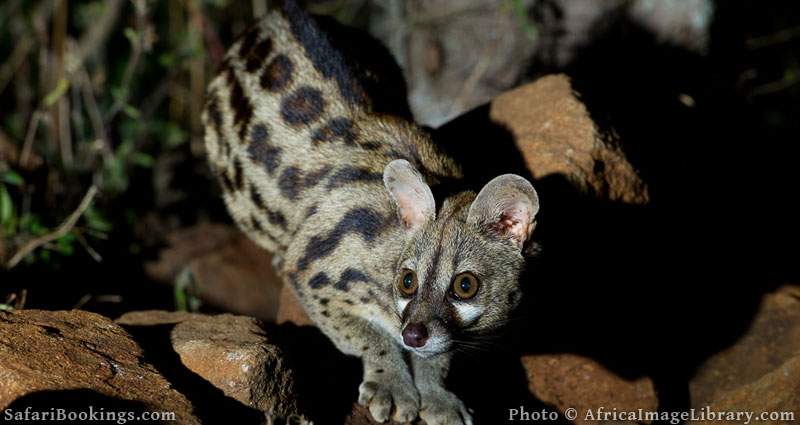
Invest in a good SLR camera and a couple of lenses. The best camera set up for wildlife photography includes at least a 300mm lens, because anything less will just be frustrating. Ideally you should have 2 cameras as changing lenses is time-consuming when you might be missing the action. On top of that, dust tends to get into the sensor when changing lenses, and this shows up as spots on your photos. Always bring a flash for night safari photography.
Tip 2: Camera Support
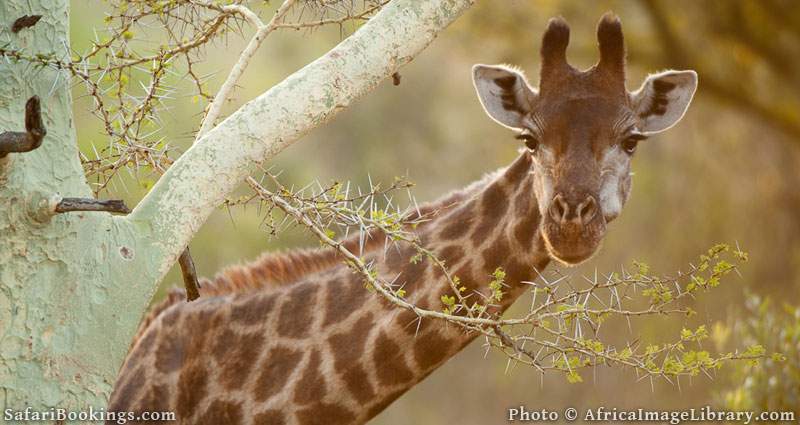
Almost as important as the actual photographic gear is steady support. Always bring a tripod for situations where you are on foot. Inside the vehicle, however, a tripod tends to be clumsy. It could be replaced by a suitable clamp with tripod head, which is great for panning and following action, but slow to move around for different positions. A better option in most situations is a beanbag, which you can bring to the country empty to save weight, and fill it up with rice or beans after you arrive. Some pillow covers or laundry bags are invaluable to protect cameras lying around in the car from dust.
Tip 3: Storage

One of the main African safari photography tips for wildlife is to always bring enough memory cards. As wildlife photography offers lots of opportunity for action photography, you’ll end up shooting a lot of frames and filling up a lot memory space. I prefer to have big memory cards that can hold a full day’s photography. Nothing is more frustrating than having to change cards in the middle of the action. At the end of the day, I download the cards on my laptop and make a back-up on an external drive. I then format the cards to use again the next day. If you don’t travel with a laptop, you should still back-up your memory cards on a suitable device.
Tip 4: Settings
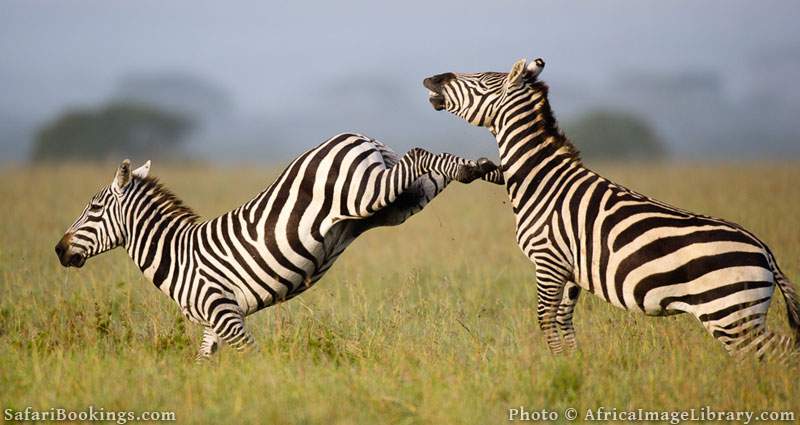
There are no correct or best settings for wildlife photography. It is therefore important to get to grips with the basics of photography and understand the relationship between aperture and shutter speed. This will enable you to freeze action and avoid camera shake, as well as to manipulate the depth of field.
Tip 5: Composition
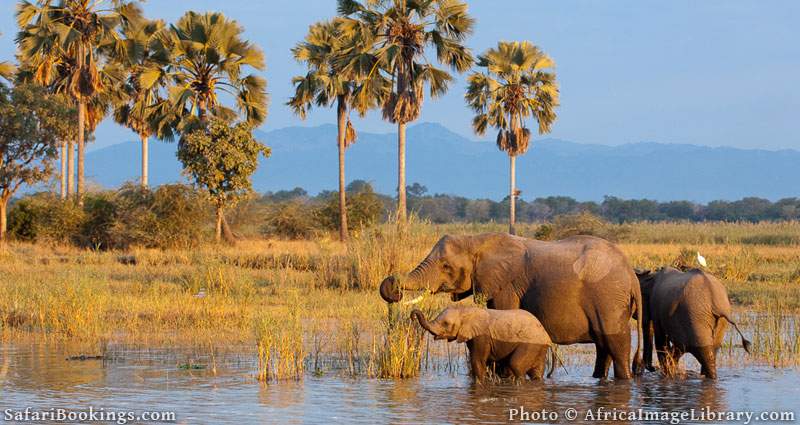
All the technical stuff can get a bit overwhelming, but an eye for composition is just as important. Although some people might have more flair in composing the perfect image, practice goes a long way in acquiring that photographic eye. A good starting point is to really look at the framing and all the edges before clicking the shutter. What doesn’t add to the photo usually distracts. Also make sure not to inadvertently cut off limbs or treetops, or anything else that would look better in full.
Tip 6: Angles and Perspective
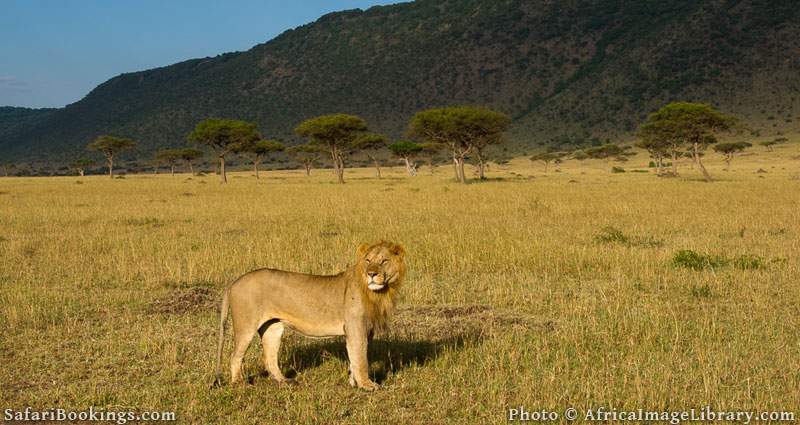
When photographing wildlife, it is tempting to zoom in as close as possible and take a close-up shot. This might result in a bunch of very usable field guide pictures, but it can pay off to think outside the box and vary your angles and perspectives. An animal in a bigger setting sometimes tells more of a story.
Tip 7: Working With the Light
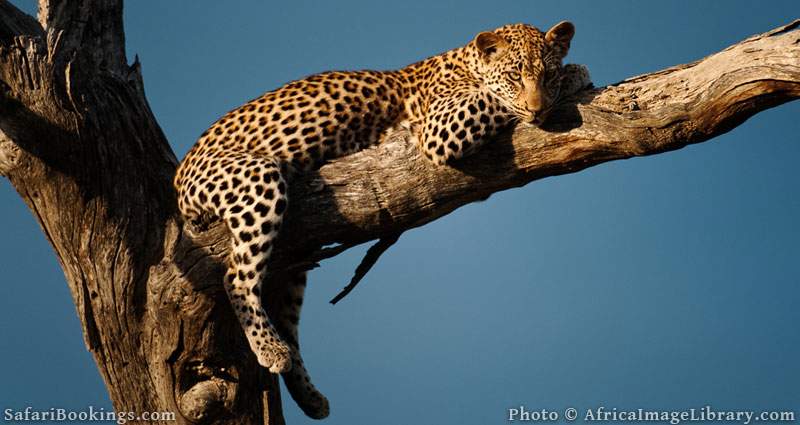
Photography is hugely light dependent. When to take pictures is almost as important as how to take pictures on safari. The early morning and late afternoon offer the most beautiful lighting with the sun low in the sky. Overcast weather works like a huge softbox, offering workable light conditions to photograph throughout the day. The harsh midday sun is not very flattering, but you might still get some good photos at a waterhole with animals coming to drink during the heat of the day.
Tip 8: Focus on the Eyes

When photographing wildlife, we tend to shoot with a low depth of field (small f-stop) as this makes the animal stand out from distracting backgrounds and vegetation. This also enables us to use a higher shutter speed, which minimizes camera shake and freezes movement. We usually accept less sharpness in other parts of the body so long as the eyes are dead sharp. It is therefore crucial to always focus on the eyes.
Tip 9: Positioning the Vehicle
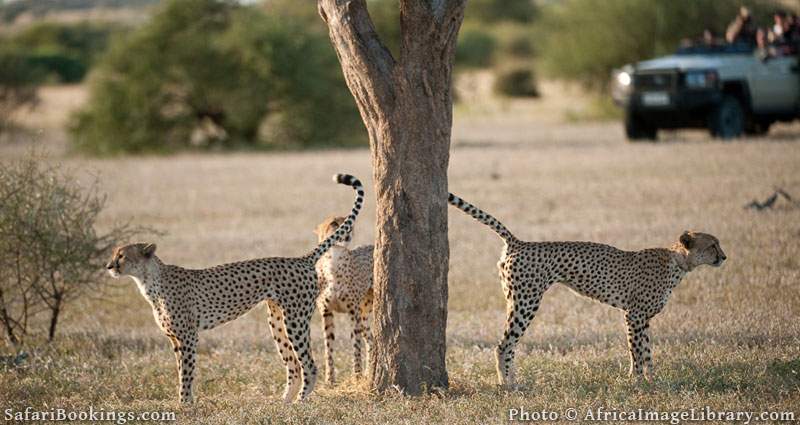
Your driver-guide is there to help you make the most of your African safari. Most guides are good at spotting animals and they can also offer interesting information relevant to the sightings. But many don’t really know how to take pictures on safari and might need some guidance when it comes to lining up the vehicle to get the perfect angles. Don’t be shy to communicate with the driver to get in the best position. Also make sure the engine is turned off at sightings.
Tip 10: Be Patient
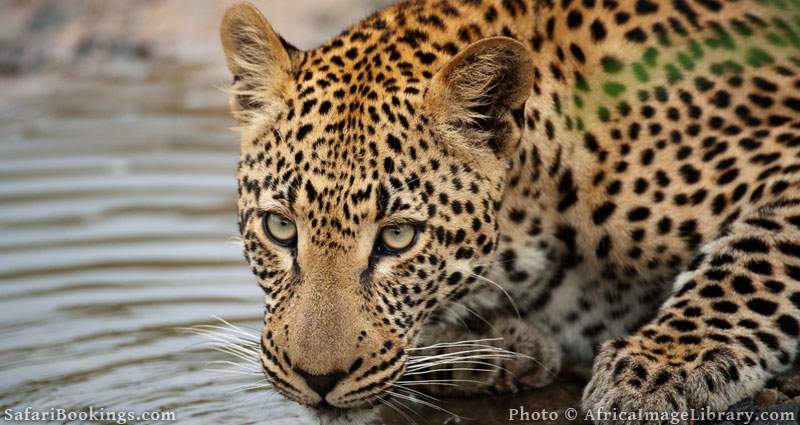
Patience is the main key to great wildlife photos. Instead of driving from animal to animal, it pays to stay with a potentially good sighting. Spending time will offer an opportunity to see some interesting animal behavior. The most rewarding photos of wildlife are usually those showing interaction or action, and this often requires anticipation and patience.
Tip 11: Don’t Ignore the Small Stuff

It is easy to get too focused on the Big Five and other large mammals on safari. This is partly because the Big Five is heavily marketed and searching for them seems to be the main aim in any safari. However, photographing small animals and birds can be highly rewarding as well. A photograph of a dung beetle or a colorful bird in flight is more evocative than yet another photo of a sleeping lion. A good way to focus on the small stuff is to book a walking safari.
55 Walking Safaris
Tip 12: Always Be Safe
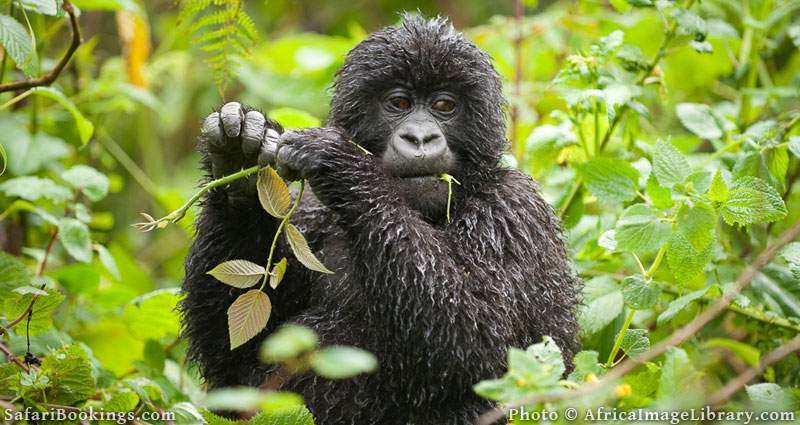
Arguably the most important of all African safari photography tips is to always stay safe. In pursuit of the perfect photo, one can sometimes get carried away, but no photo is worth risking your safety. One should never forget that all animals on safari are wild and unpredictable.
Tip 13: Making Memories As Well As Photos
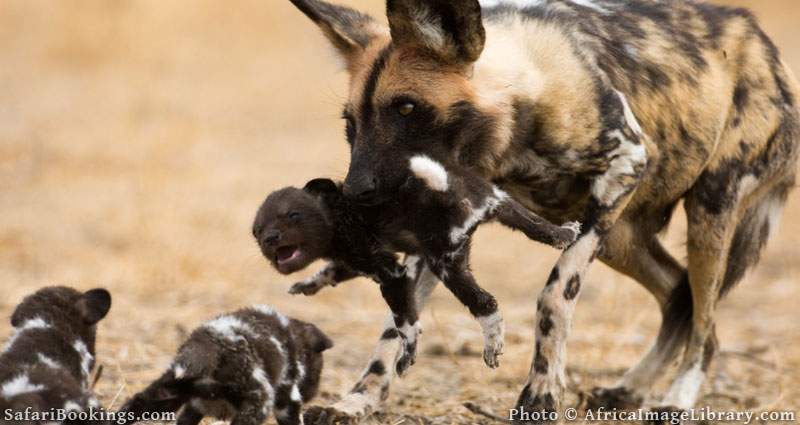
Taking photographs on safari should be fun. Unless you’re a professional photographer, there is no reason to let photography dominate every sighting. Sometimes it is worthwhile to put down the camera and stop looking through the lens – to slow down, and take in the views, the smells and the sounds of the African bush.
Tip 14: Photographing People

A safari offers great wildlife photography opportunities, but hopefully you’ll have some rewarding human interactions as well. You’ll probably make a close bond with your guide and at the end of the day, the people working in your lodge are usually happy to hear about your adventures. So, don’t put away your camera when leaving the safari vehicle, but take some photos of the people that cross your path. Just make sure to always ask permission first, and to be respectful.
Tip15: Respect the Wildlife

Never harass animals in pursuit of a better picture. Tourists and photographers should only be present as observers. We should never try to impact on the scene in front of us. Don’t whistle to wake up an animal to get a better photo and never interfere with a hunt. It is unethical, and also very annoying for other visitors.
Want To Go on a Photographic Safari?
Click on the button below to compare African photographic safaris offered by top-rated tour operators.
About SafariBookings
SafariBookings is the largest online marketplace for African safari tours. Easily compare offers from top-rated tour operators. Make decisions like a pro by using our 105,112 reviews and 222 destination guides. More About Us
Safaris by Type
- Luxury Safaris
- Budget Safaris
- Gorilla Trekking
- Chimp Trekking
- Family Safaris
- Private Safaris
- Group Safaris
- Photo Safaris
- Overland Tours
- Camping Safaris
- Fly-in Safaris
- Walking Safaris
- Birding Safaris
- Self-drive Safaris
- Canoe Safaris
Most Popular Blog Posts
- Best Time for African Safari
- Best Safari in South Africa
- Family Safari in South Africa
- African Safari Tips
- Game Reserves Near Cape Town
- What to Pack for a Safari
- Best African Safari Parks
- Top 5 Best African Honeymoon Safaris
- Top 5 Best Tanzania Family Safaris
- Best Places to See Cheetahs in Africa
- How Much Does an African Safari Cost?
- Best Places To Visit In Africa in 2024
Blog Categories
African safari tours.

10-Day Best of Uganda Gorillas and Wildlife Safari
$2,959 to $3,069 pp (USD)
Uganda: Private tour Mid-range Lodge & Guest House
You Visit: Entebbe (Start) , Ziwa Rhino and Wildlife Ranch, Murchison Falls NP, Kibale NP (Chimps) , Queen Elizabeth NP, Bwindi NP (Gorillas) , Lake Mburo NP, Equator point Uganda (Highlight) , Entebbe (End)
Dav Safaris
5.0 /5 – 84 Reviews

5-Day Botswana Luxury Tour
$3,346 to $5,317 pp (USD)
Botswana: Private tour Luxury Lodge & Tented Camp
You Visit: Kasane (Start) , Chobe NP, Okavango Delta, Maun Airport (End)
Wayfairer Travel
4.9 /5 – 149 Reviews

4-Day Inclusive Fly in Fly out Zanzibar Serengeti
$2,167 pp (USD)
Tanzania: Private tour Luxury Lodge & Tented Camp
You Visit: Zanzibar (Start) , Central Serengeti NP, Ngorongoro Crater, Maasai Village (Cultural Village) , Zanzibar (End)
Dancing Simba Safaris
4.9 /5 – 38 Reviews
9 Best Cameras for Safari in 2024
By Tati Taylor 7 days ago, Cameras & Lenses
Perfect cameras for safari and general travel photography.
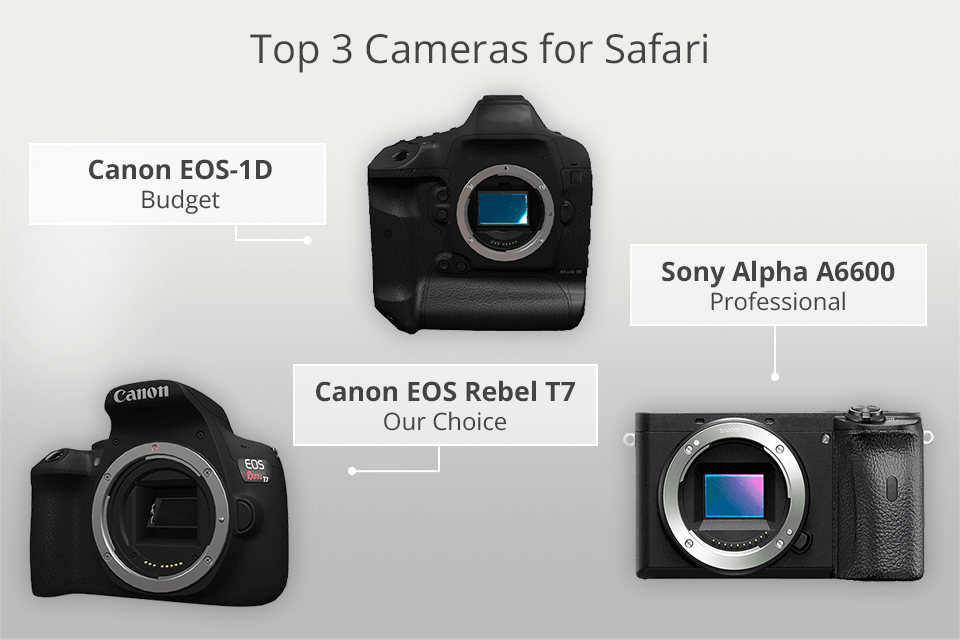
Are you going to spend your vacation in Africa and need a camera for safari photography? If you want to immerse yourself in the world of wild flora and fauna and save your memories in the form of colorful and atmospheric photos, you should invest in decent gear.
9 Best Cameras for Safari Photography
- Canon EOS Rebel T7 - Our Choice
- Canon EOS-1D X Mark III - 4K video
- Sony Alpha A6600 - The best camera for African safari
- Canon EOS 6D Mark II - Optical viewfinder
- Fujifilm X-T4 - For safari and wildlife
- Nikon D850 - With FX-format
- Canon EOS 90D - With LCD screen
- Sony α7R IV - African safari cam with 61MP sensor
- Canon Powershot SX70 - Affordable
Looking for safari photography equipment most people choose between DLSR and compact cameras. The former allow taking pictures that will look professional and ravishing. The second option seems perfect because of the small weight and dimensions.
This guide covers 9 amazing cameras that belong to both categories. Thus, if you like traveling light, pay attention to compact camera models. In case you don’t mind carrying a bit heavier camera in order to marvel at detailed and colorful photos once you return home, opt for DLRs.
1. Canon EOS Rebel T7
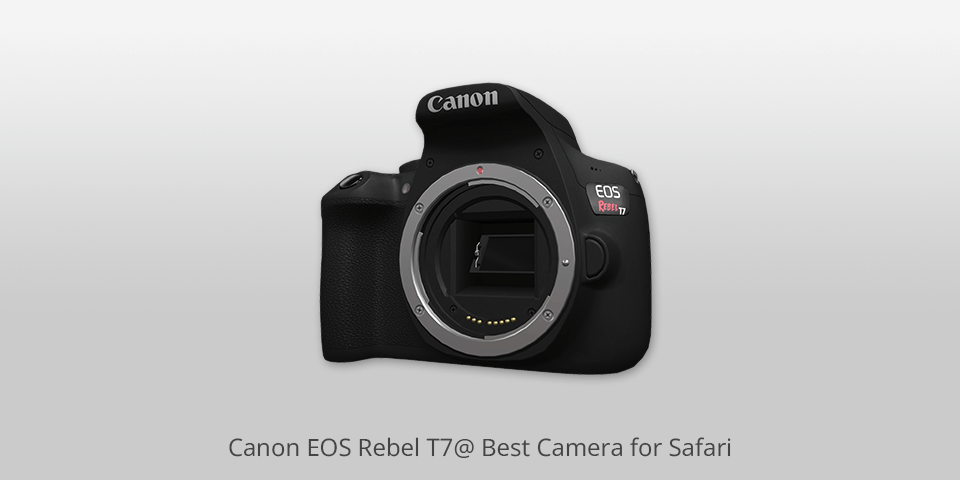
Type : Digital Camera | Sensor size : 3" | Resolution : 24.1 MP | Lens : 18-55mm f/3.5-5.6 | Viewfinder : Optical (pentamirror) | Screen type : LCD | Maximum continuous shooting speed : 3fps
⊕ Low noise level in photos ⊕ Close-to-life colors and superb sharpness ⊕ Fitted with a popup flash unit ⊕ Ergonomic design ⊖ Low speed in burst mode
Canon EOS Rebel T7 is a perfect camera for safari and bird photography that will be especially useful for beginners as it has intuitive features and supports a range of shooting modes with pre-adjusted settings. It is equipped with the DIGIC 4+ image processor, which accounts for its speedy performance. With it, you can shoot at the speed of 3 fps.
The camera boasts a 9-point AF system, which allows you to use it for snapping great photos of nature. Thanks to the impressive ISO range of 100-6400, this model enables you to snap pro-level pics of animals in poor light conditions without using a flash. Another selling point of this model is that it supports recording full HD 1080p videos at 30 fps.
2. Canon Mark III

Type : DSLR Camera | Sensor size : 1/2.3" | Resolution : 20.1MP | Lens : Canon EF | Viewfinder : Pentaprism | Screen type : LCD | Maximum continuous shooting speed : 20fps
⊕ Latest Smart Controller ⊕ Rugger, long-lasting case ⊕ Advanced AF ⊕ Almost limitless buffer ⊖ Lacks animal AF ⊖ No tilting LCD screen
The most flattering words about this camera are said by National Geographic photographers and that’s the most desirable characteristic any model can brag about. The Mark III is a truly powerful camera and the flagship DLSR produced by Canon.
It is made of durable materials and is bound to serve you for many years. The device is very fast, allowing shooters to take RAW photos at 20 frames per second.
Thanks to the rear LCD display, you can instantly check your pictures even under the hot African sun. This camera for safari is also favored by many users because of a responsive touch screen meant to quick focus adjustments and handling basic parameters.
3. Sony Alpha A6600
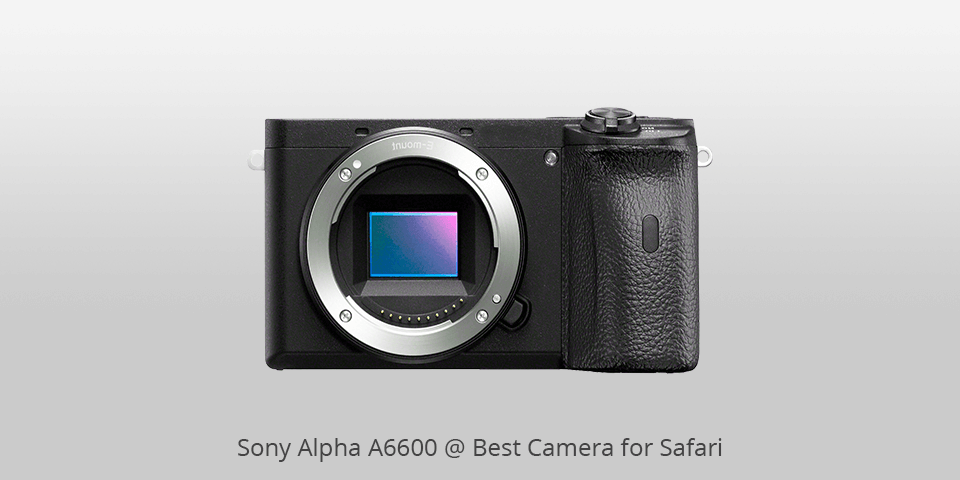
Type : Mirrorless Camera | Sensor size : 1.0" | Resolution : 24MP | Lens : Sony E | Viewfinder : EVF| Screen type : LCD | Maximum continuous shooting speed : 11fps
⊕ Real-time tracking mechanism ⊕ Works long without charging ⊕ Firm and convenient handgrip ⊕ Embedded EVF ⊖ Built-in flash issues
The Sony a6600 belongs to the group of mirrorless devices with interchangeable lenses. It has a 24MP APS-C sensor and boasts a real-time tracking system. The latter is helpful at instant jumping from subject tracking, to face and eye detection.
Not only can Sony a6600 be considered as the best camera for Safari, but it is also equipped with must-have features for vlogging and taking selfies. For example, you can take advantage of 180 tilting touchscreen and mic & headphone ports.
Using this model, you can record your adventures in 4K/30p. When AF and auto-exposure are enabled, it allows shooting at 11fps. The uninterrupted performance is possible due to the capacious Z-type FZ1000 battery, which makes this camera even a more appealing option to avid travelers.
4. Canon EOS 6D Mark II
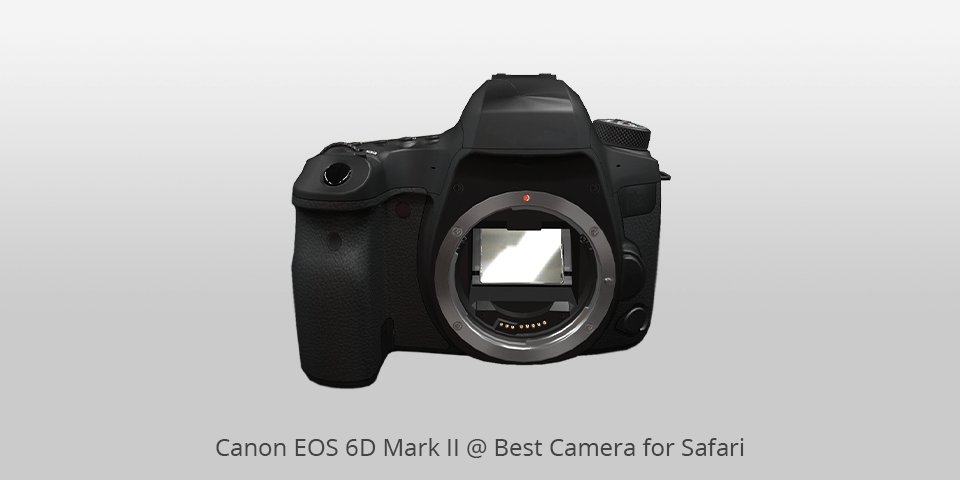
Type : SLR Camera Body | Sensor size : 1/2.3" | Resolution : 26.2MP | Lens : Canon EF | Viewfinder : Optical | Screen type : LCD | Maximum continuous shooting speed : fps
⊕ Awesome Live View focusing ⊕ Convenient grip ⊕ Enhanced touchscreen control ⊕ Adjustable tilting angle ⊕ Rich connectivity ⊖ Poor dynamic range
The initial EOS 6D camera showed amazing performance in low light conditions and enjoyed great support among photographers interesting in the nighttime shooting. The new model preserved the strong points of its predecessor, and improved capabilities with higher ISOs and better resolution.
A higher frame rate is another advancement aimed at action fans. Using Canon EOS 6D Mark II, you can shoot at 6.5fps, which is almost 50% faster than 4.5fps offered by the “older brother”.
This African safari cam also stands out with its set of connectivity options – Wi-Fi, NFC and Bluetooth. If you feel like transferring your photos from a camera to another device right after they have been taken, you should enable Bluetooth and keep it active while you are documenting the things happening around.
5. Fujifilm X-T4
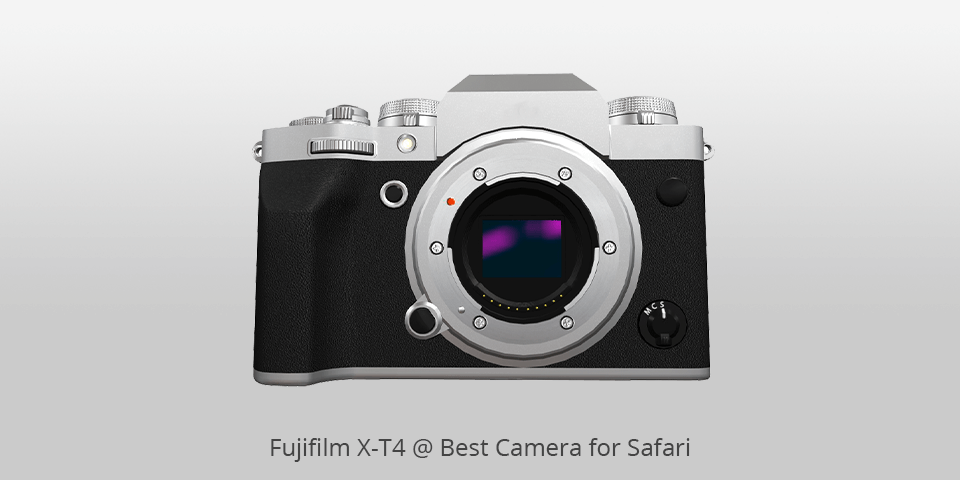
Type : Mirrorless Camera | Sensor size : 1/2.3" | Resolution : 26.1MP | Lens : X-T4 + X-series | Viewfinder : Electronic | Screen type : OLED | Maximum continuous shooting speed : 240fps
⊕ Well-built ⊕ Top-level APS-C sensor ⊕ Low battery consumption ⊕ Intuitive menu ⊖ Disappointing EVF in the scarce light ⊖ Comes without a headphone port
The Fujifilm X-T4 can become the best camera for safari and wildlife if you have enough money to splurge on. Though the price is far above average, it seems to be fully justified by the variety of features this camera has. In addition to the stylish appearance, the X-T4 impressed with unprecedented photo and video quality.
Thanks to the 5-axis integrated image stabilizer (IBIS), you can use up to 6.5 stops of image stabilization in order to keep high sharpness and clarity even if you are too excited to keep tabs on these parameters on your own. Besides, the camera shoots 4K at 60fps and is capable of ultra-fast burst shooting.
6. Nikon D850
Type : Digital Camera Body | Sensor size : 1/2.3" | Resolution : 45.7MP | Lens : 24-120mm f/4 | Viewfinder : Electronic | Screen type : LCD | Maximum continuous shooting speed : 9fps
⊕ Big and bright viewfinder ⊕ 19.4MP DX crop mode ⊕ Capacious battery ⊖ High price ⊖ SnapBridge calls for improvement
This bridge camera for wildlife is a controversial member of the overview with its max shooting speed of 7fps, which can be considered disappointing by many. Besides, it is capable of taking just 52 RAWs before the buffers overruns.
Anyway, we decided to include it on this list of the best cameras for safari because of other handy features putting it on par with the rest of devices. This is a full-frame model with amazing AF that is powered by a 153-point Multi-CAM system.
Besides, it allows for f/5.6 aperture, which is suitable for tracking animals during your safari trip. The D850 comes in a watertight housing, which makes it suitable for shooting even in heavy rain.
7. Canon EOS 90D
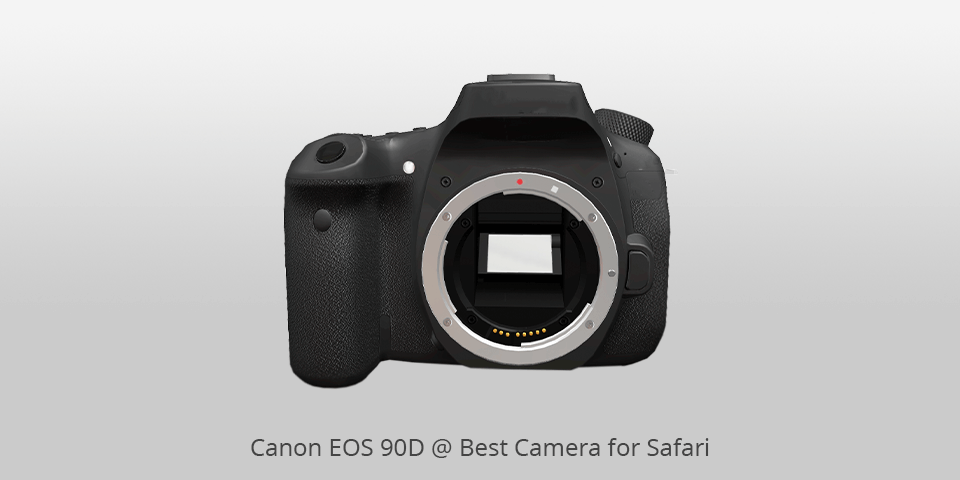
Type : DSLR Camera | Sensor size : 1/1.8" | Resolution : 32.5MP | Lens : F/8 | Viewfinder : Optical | Screen type : LCD | Maximum continuous shooting speed : 10fps
⊕ Great 35.2MP sensor ⊕ 10fps shooting with iTR tracking ⊕ Tilting LCD ⊕ Protected from water and dirt ⊖ Stiff rear dial
Canon tried to please those photographers, whose initial demand is high footage quality and created the EOS 90D. This camera allows shooting 4K with clear details similar to those at 1080p.
You can enjoy noiseless HDMI up to 4K, HDR at 1080p, 4K time-lapses generated onboard and cool movie effects. Following the tendency set by the brand, this device is also equipped with fantastic video AF.
The Canon EOS 90D can become the best camera to take on safari for people, who want a mixture of features presented by 80D and the EOS 77D. It has a great high-res sensor with outstanding RAW quality, and makes it possible to record crisp 4K footage without going broke.
8. Sony α7R IV
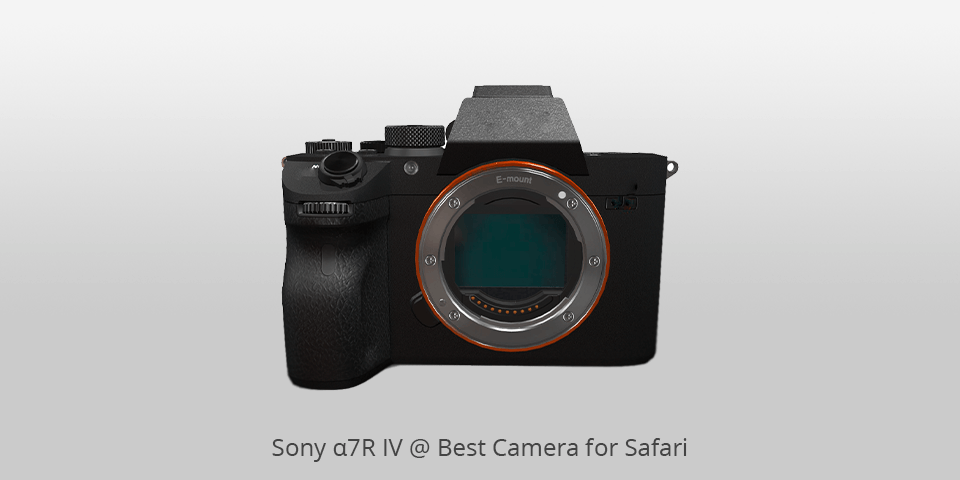
Type : Full-frame Mirrorless | Sensor size : 1/3” | Resolution : 26.2MP | Lens : none | Viewfinder : Electronic | Screen type : LCD | Maximum continuous shooting speed : 10fps
⊕ Ergonomic, simple-to-use camera ⊕ Agile AF ⊕ Sharp, bright viewfinder ⊕ Stunning 4K ⊖ Problems with AWB and focusing
This is a worthy high-res full-frame mirrorless camera, with a BSI-CMOS sensor. It is good enough not only for safari but also for more pro-level tasks and allows taking 60.2MP pictures. In addition to remarkable photo quality, this device also offers 15 stops of dynamic range.
Thanks to the ISO varying from 100 to 32000, you can use this camera for safari to capture the nature and animals even in dim light. The quality of the photos will pleasantly surprise you.
As for the AF, 567 points make the Sony α7R IV unexcelled since other high-resolution cameras have no more than 160 autofocus points. This is also relevant for DSLRs, mirrorless and medium format products.
9. Canon Powershot SX70
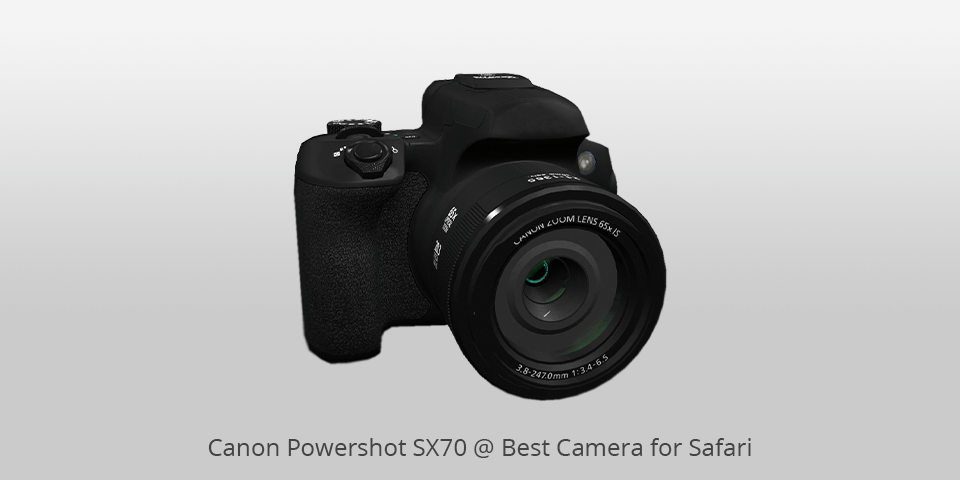
Type : Digital Camera | Sensor size : 1/2.3" | Resolution : 20.3MP | Lens : f/3.4-6.5 | Viewfinder : Electronic | Screen type : LCD | Maximum continuous shooting speed : 10fps
⊕ 65x zoom ⊕ LCD with adjustable tilt angles ⊕ Amazing EVF ⊕ 10fps continuous shooting ⊖ Not the best in poor light
If you decided on a compact device, you may like this superzoom miniature camera with a large 65x optical zoom. It received a new 20.1MP ultra-sensitive CMOS sensor which provides outstanding photo quality in conjunction with the company’s latest mighty DIGIC 8 processor.
This African safari cam can reveal its full potential being paired with a lens equivalent to 21-1365mm in 35mm terms. The aperture maxes at f/3.4/ – f/6.5. The device visually resembles its predecessor, while the most praiseworthy improvements include the latest DIGIC 8 engine, which entailed the appearance of up to 5 stops of correction.
How to Choose the Best Camera for Safari
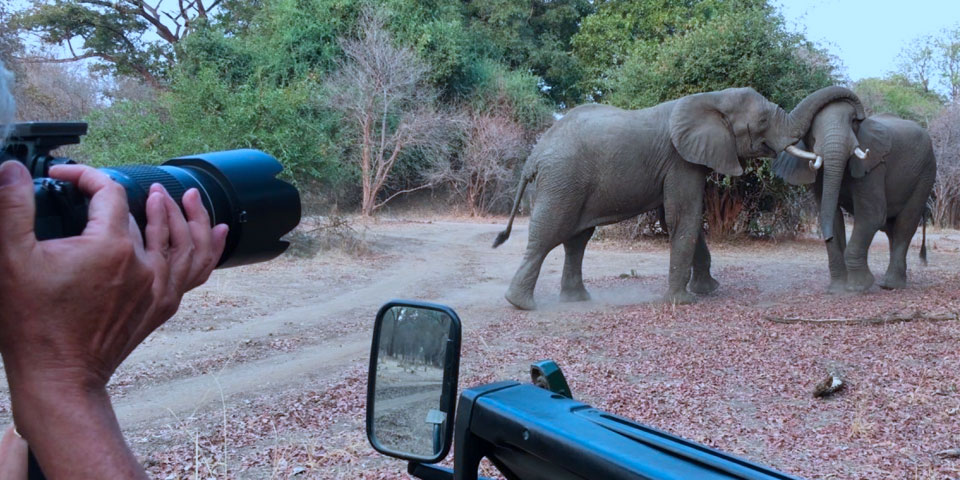
Durability: Waterproof / Shockproof
Even if you have checked the forecast a hundred times before going to a safari trip, the weather can be very changeable and unpredictable, so it is better to invest in a camera protected from moisture and accidental drops. Thus, you can fully enjoy the picturesque landscapes and wildlife around you without constantly worrying about your gear protection.
Weight and Size
If you plan to visit Africa, you probably know about weight limits. This generally refers to taking bushcraft and means that your suitcase can’t be heavier than 33 pounds. Having packed the most necessary things, you’ll notice that there isn’t much room for a camera, especially if you promised your friends and relatives to bring souvenirs.
Thus, you’d better opt for a lightweight, compact camera for safari. Besides, such a device won’t put extra load on your neck since a regular safari lasts a day or two and you need to carry your camera with you all the time.
Frames per Second
The best camera for wildlife photography is the one with a bigger fps number. This way, you can keep track of fast-paced animals and capture them even during fast movements. Your photos will be detailed and sharp.
Regular users claim values from 4fps to 6fps are sufficient enough for this type of shooting, but if you are a professional, you need a camera with a higher fps value.
Ease of Use
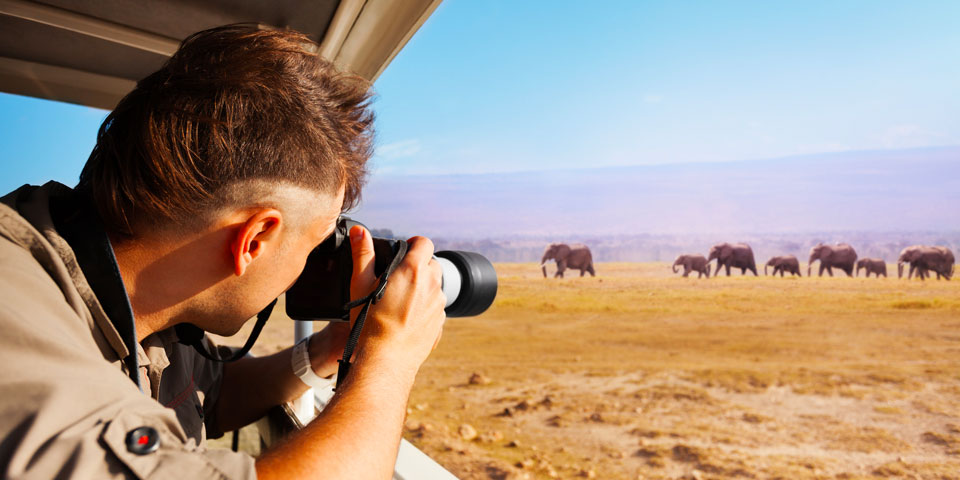
The best camera for safari crammed with lots of cool features can be absolutely useless if you know little about how to use it to your advantage. If you are a common traveler dreaming of immortalizing your trip to Africa, you can rely on an entry-level device, mastering which is a breeze. In case you decide to purchase a more advanced option, take time to learn its features.
- • What is the best camera for safari?
If you are an experienced traveler and know a thing or two about photography, we recommend checking the Canon EOS 7D or Canon EOS 6D lineups. These models are designed to work in different weather conditions and deliver great image quality. They are also suitable if you enjoy capturing your everyday life.
- • Is 400mm enough for safari?
We believe that this is an ideal focal length for this type of entertainment. You can use a 400mm lens as the main body, and also bring a 70-200mm for shooting in low light.
- • What is a good zoom on a camera?
Modern smartphones are equipped with 10x zoom cameras. The entry-level DSLRs offer a 20x zoom. However, this all becomes irrelevant when Nikon’s COOLPIX series with its mind-blowing 83x-166x zoom comes to the stage.
- • Should I rent a lens?
If your safari trip is a one-time adventure, it is more reasonable to rent a lens at place. Thus, you don’t need to carry additional safari photography equipment and can save some money.
- Canon EOS Rebel T7
- Canon EOS-1D X Mark III
- Sony Alpha A6600
- Canon EOS 6D Mark II
- Fujifilm X-T4
- Canon EOS 90D
- Sony α7R IV
- Canon Powershot SX70
- Buyers Guide

- Video Editing Services
- Virtual Staging Services
- Outsource Photo Editing
- Retouching Tips
- Photo Editing Freebies
- Free Raw Images for Retouching
- Free Photoshop Actions
- Free Lightroom Presets
- Affiliate Program
- Privacy Policy
- Cookie Policy

- Kenya Safari Tours
- serengeti Safari
- Destinations
- Hotels & Lodges

- Sign in / Join

- Travel Accessories
Best Camera For African Safari

African safaris are a once in a lifetime opportunity to see some of the most amazing wildlife on earth. To make sure you don’t miss a moment, you’ll want to choose a camera that is well suited for wildlife photography.
Crop Sensor or Full Frame
Cameras come in two forms: cropped or full-frame sensors. A full-frame sensor is the largest sensor size available and will give you the best image quality. However, these cameras are also the most expensive. If you’re on a budget, a crop sensor camera will still give you great results.
Here are some things to keep in mind when choosing the best camera for an African safari:
1. Choose a camera with a long zoom lens. You’ll want to be able to get close-up shots of wildlife without disturbing them, so a long zoom lens is essential.
2. Look for a camera with good low light performance. Many safari experiences take place early in the morning or late in the day when light levels are low. A camera with good low light performance will help you get the best possible shots in these conditions.
3. Consider a camera with fast autofocus. When wildlife is on the move, you’ll need a camera that can keep up. Fast autofocus will help you capture sharp images of animals in action.
4.You need a camera with a good burst mode. This will allow you to take multiple shots in quick succession, ensuring you don’t miss a moment of the action.
5.Decent buffer depth. There is another part of the burst mode equation, and that is a camera’s buffer depth. This is the number of shots the camera can take in a row before it starts to slow down. A deeper buffer will allow you to keep shooting for longer, giving you a better chance of capturing that perfect moment.
6.Camera with a faster shooting speed. If you’re planning on photographing moving animals, you’ll need a camera with a fast shooting speed. This is the number of frames per second that the camera can shoot. The higher the number, the better chance you have of getting a sharp photo of a moving subject.
7. Pick a durable camera. An African safari can be a rugged experience, so you’ll need a camera that can withstand a bit of wear and tear. Look for a model with weather-sealing to protect against
8. Make sure your camera is rugged and weatherproof. An African safari can take you into dusty, humid, and even wet conditions. A camera that can withstand these conditions will help you avoid missing any shots due to equipment failure.
9. Think about your budget. There are many great cameras available at a range of prices. Decide how much you are willing to spend on a camera before beginning your search.
Lens Selection
The next thing to consider is what lens or lenses you’ll need for your safari. If you’re using a crop sensor camera, you’ll need to factor in the crop factor when selecting lenses. For example, a 50mm lens on a crop sensor camera will give you an equivalent field of view of 75mm.
Here are some suggested lenses for an African safari:
1. A telephoto zoom lens is a great option for safari photography. A lens like the 70-200mm f/2.8 will allow you to get close-up shots of wildlife without disturbing them.
2. A wide-angle lens is also a good choice for safaris. A wide-angle lens will help you capture the vast landscapes of Africa as well as any animals that happen to wander into your frame.
3. If you’re using a full-frame camera, a prime lens like the 85mm f/1.8 can be a great option for safari photography. This lens will allow you to capture sharp images of wildlife in low light conditions.
4.For close up shots of animals, a macro lens can be a great option. This type of lens will allow you to capture detailed images of small subjects.
5. If you’re using a crop sensor camera, a telephoto prime lens like the 100-400mm f/4.5-5.6 can be a good option for safari photography. This lens will give you a long reach, allowing you to get close-up shots of animals without disturbing them.
6. If you’re using a full-frame camera, a wide-angle prime lens like the 35mm f/1.4 can be a good choice for safari photography. This lens will help you capture the vast landscapes during your African Safari.
7. If you’re using a crop sensor camera, a superzoom lens like the 18-200mm f/3.5-6.3 can be a good option for safari photography. This lens will give you a wide range of focal lengths to choose from, making it a versatile option for safari photography.
8. If you’re using a full-frame camera, a fast prime lens like the 50mm f/1.4 can be a good choice for safari photography. This lens will allow you to capture images of animals in low light conditions.
9. If you’re using a crop sensor camera, a wide-angle zoom lens like the 10-24mm f/3.5-4.5 can be a good choice for safari photography. This lens will help you capture the vast landscapes of Africa as well as any animals that happen to wander into your frame.
10. If you’re using a full-frame camera, a fast wide-angle prime lens like the 35mm f/1.4 can be a good choice for safari photography. This lens will help you capture the vast landscapes of Africa during your African Safari as well as any animals that happen to wander into your frame.
With so many great lenses to choose from, it can be difficult to decide which one is right for you. Another way to figure out which lens is right for you is to rent a few different lenses and try them out before you start on your African safari. This will give you the opportunity to see how each lens performs in the field and help you make an informed decision about which one to buy.
RELATED ARTICLES MORE FROM AUTHOR
Best headlamp for kilimanjaro, best headlamp for safari, essential items in a skin care travel kit, leave a reply cancel reply.
Save my name, email, and website in this browser for the next time I comment.
POPULAR ARTICLES
Ithumba safari camp david sheldrick wildlife trust, 27 things to do in nairobi, can a black mamba kill a lion, what to pack kenya safari, which african country has the best beaches, popular categories.
- Travel Accessories 9
- beach vacations 5
- Travel Safety 3

Loading carousel
Svalbard & Jan Mayen
Svalbard expedition.
From Polar Bears and Walruses to Arctic Foxes and innumerable flocks of birds, this photo expedition promises not only unbelievable photo opportunities but memories that will last you a lifetime.
South Africa
Predators of sabi sabi & malamala.
For this particular safari, we’ve chosen two properties steeped in history, and well known for being the epitome of the photographic safari experience, in their consistent delivery of high quality predator viewing; Sabi Sabi and MalaMala.
The Great Migration Safari
The Great Migration season sees over 2 million animals gather on the open plains of the Masai Mara setting the scene for one of nature’s most incredible spectacles and undoubtedly one of the best wildlife experiences on offer.
Sabi Sabi and Malamala Photography Seminar
Enjoy a uniquely crafted wildlife photographic experience at two of South Africa’s premier game viewing destinations. Designed to help you become a better wildlife photographer, this tour is ideally suited for nature lovers and aspiring photographers.
Exclusive Amboseli and Mara Kicheche Safari
With only 3 guests, and private conservancies throughout your stay, this tour offers true exclusivity in two of East Africa's most iconic wildlife reserves.
Treasures of The Lower Zambezi
Enjoy a great variety of activities including game drives, walking through the breathtaking forests, to canoeing down the mighty Zambezi River. All this with incredible game viewing and predator sightings.
On Promotion
2 spaces available
Exclusive Amboseli & Mara Kicheche Safari
From $17,500.00 $17,995.00 pp
12 Nights / 13 Days
Africa , East Africa ,
16 Feb 2026 - 28 Feb 2026
8 spaces available
Treasures of the Lower Zambezi
From $12,715.00 $13,385.00 pp
10 Nights / 11 Days
Africa , Southern Africa ,
01 Jul 2026 - 10 Jul 2026
6 spaces available
The Great Migration with Hides & Helicopters in Kenya’s South Rift Valley
From $17,995.00 $18,500.00 pp
13 Sep 2026 - 23 Sep 2026
3 spaces available
Botswana Wilderness Safari
From $20,595.00 pp
8 Nights / 9 Days
Southern Africa ,
03 Nov 2025 - 11 Nov 2025
Popular tours
Primates of uganda.
From $11,995.00 pp
18 Jul 2024 - 26 Jul 2024
65 spaces available
The Great Migration Safari in Kenya
From $7,650.00 pp
6 Nights / 7 Days
10 Aug 2025 - 16 Aug 2025
32 spaces available
The Masai Mara Experience Safari
From $5,650.00 pp
30 Jun 2024 - 06 Jul 2024
Fully Booked
Amboseli and Masai Mara Safari
From $0.00 pp
Jaguars of the Pantanal
From $10,295.00 pp
South America ,
03 Sep 2024 - 11 Sep 2024
Best of Uganda
Svalbard arctic expedition.
From $9,650.00 pp
7 Nights / 8 Days
Bucket List Destinations , The Polar Regions & Iceland ,
17 May 2024 - 24 May 2024
Best of The Serengeti
From $14,365.00 pp
04 Feb 2025 - 15 Feb 2025
Madikwe Safari
From R53,995.00 pp
06 Sep 2024 - 12 Sep 2024
Tour Categories
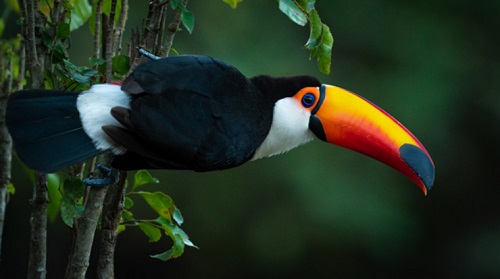
Scheduled Tours
We run intimate, small group tours across the world throughout the year. See where we are off to next!
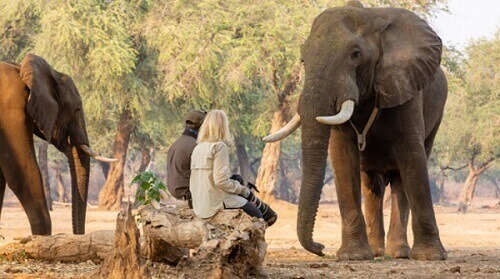
Custom Tours
Allow our team of experienced travel planners to craft an itinerary tailored to your specific budget and dates.
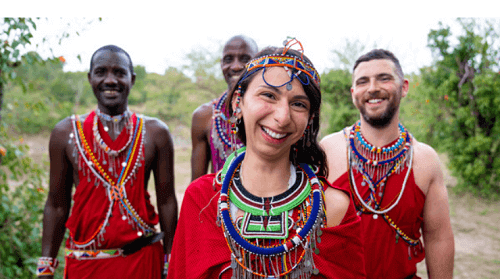
Private Guided Tours
Allow one of our guides to create the ultimate and most exclusive safari experience for you and your group.
Wild Eye offers photographic safaris, private guided expeditions and custom tours around the world. Established in 2012 Wild Eye set out to refresh the photographic travel and private guiding industries by focusing on providing a professional service that is fun and relaxed while providing guests with amazing travel experiences and world class service.
DISCOVER THE WILD EYE MARA CAMP
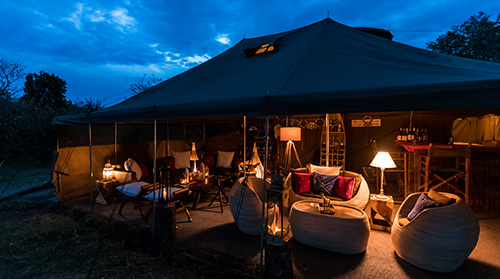
The Wild Eye Mara Camp

The Great Migration
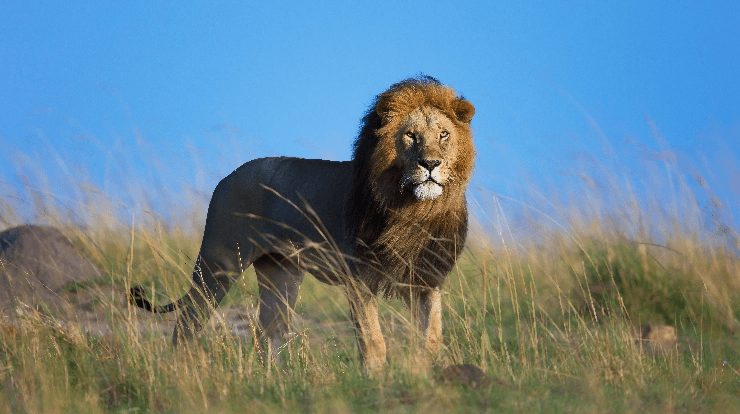
The Mara Experience
Latest tours, orcas and northern lights.
From $9,500.00 pp
13 Nov 2024 - 20 Nov 2024
Predators of the Okavango Delta
From $25,745.00 pp
11 Nights / 12 Days
07 Nov 2025 - 18 Nov 2025
Exclusive Timbavati Safari
Exclusive kalahari safari.
From R66,795.00 pp
30 Aug 2024 - 05 Sep 2024
Arctic Voyage
From $22,650.00 pp
19 Nights / 20 Days
The Polar Regions & Iceland ,
15 Aug 2024 - 03 Sep 2024
1 spaces available
Rhinos and Elephants of Kenya
From $11,250.00 pp
28 Oct 2024 - 04 Nov 2024
Masai Mara Kicheche Conservancies Safari
Latest posts, how to photograph elephants.
As photographers, we are naturally drawn to the enormous size and striking silhouettes of elephants against the background of African or even Asian landscape. However, some of the most rewarding opportunities of elephant photography are when we take a closer look at the smaller details, focusing our lenses on the remarkable details and textures that [...]
Thursday May 30, 2024
Daniel Greyvenstein
Behind The Frame: Arctic Landscape
Are you looking to improve your photography editing skills, specifically your wildlife photography editing skills? if you answered yes, then our Behind the Frame series is just for you! Join our expert photographic guides on the last Friday of every month, as they talk you through various editing styles of many different species from many [...]
Friday May 24, 2024
Luke Street
Trip Report: Namibian Private Safari 2024
What an adventure this Namibian Private Safari was! In my 2022 Namibia Trip Report I wrote the following: " The country is so much more than you would ever expect it to be!" If unimaginable diversity, incredible experiences, raw natural beauty, soul fueling moments, great people, were a country - Namibia!" Having recently revisited, I [...]
Friday May 17, 2024
Michael Laubscher
Trip Report: Madikwe May 2024
One of my all time favourite places to visit here in South Africa is the one and only Madikwe Game Reserve. In May, 2024 I had the privilege of hosting one of our Madikwe Safari for a week with a group of 5 guests and in this trip report I am going to share some [...]
Wednesday May 15, 2024
Michael Appalsamy
Places We Love: Olakira Migration Camp
Asilia's mobile Olakira Migration Camp follows the wildebeest migration around the Serengeti, from the epic river crossings in the north to the southern plains where they give birth to thousands of calves each year. As a mobile camp, the location of Olakira Migration Camp changes with the seasons with the camp moving twice per year [...]
Tuesday May 14, 2024
Andrew Beck
What’s in my Bag for Predators of Sabi Sabi and MalaMala
Sabi Sabi and Mala Mala are two of the most well known names in the safari and wildlife photography industry. A part of the Greater Kruger National Park, both these destinations offer fantastic wildlife viewing, especially of big cats. Over the past few years I have been fortunate enough to visit both Sabi Sabi and [...]
Monday May 13, 2024
Johan Van Zyl
Just a GOOD Story | Chaotic Guests
In this edition of Just a GOOD Story, I look back to 2006 when I was a lodge manager in the Madikwe Game Reserve. This particular group of guests made for an 'interesting' safari experience and when I one-day write my book about safari stories they will be sure to feature. The Safari and hospitality [...]
Wednesday May 8, 2024
Gerry van der Walt
Image Review | Riccardo Milesi | Southern Serengeti
Welcome to our latest post centered around constructive image review of images submitted by on of our many guests. In this feature, one of our experienced Wild Eye guides provides insightful critiques of images taken by guests on a recent safari. Unlike our Behind The Frame feature which features a favorite image from one of [...]
10 Facts: Wildebeest
The well-known and loved Wildebeest is a fascinating and iconic species that roam the vast savannas of Africa. Renowned for their remarkable migration, there are a few other interesting facts about the Wildebeest that will make you love them even more. Let’s delve a little deeper into some of these facts. What is in the name? The scientific genus name for [...]
Thursday May 2, 2024

Sign up to our newsletter
We promise to only share the most important and relevant updates with you!
Too many details to fill out? Skip ahead
In which year are you planing to travel?
Planning more than a year in advance will allow us to secure the best possible accommodations and locations.
Do you have exact dates in mind?
When is your ideal time to travel.
Identifying year and month of travel will help us narrow down the options available and find the best fit for you - feel free to choose multiple months if you have some degree of flexibility.
Which departure would you like to book for?
Identifying year and month of travel will help us narrow down the options available and find the best fit for you.
Fetching tours...
How many people will be travelling.
This will help us determine the type and configuration of rooms needed.
Number of adults
12 Years and older
Number of children
Which part of the world would you like to visit?
We can assist you in planning your adventure anywhere in the world!
Any special interests or preferences?
Its all in the detail and knowing as much about what your interests and needs are will help us craft your ideal itinerary.
Do you have a Private Guide in mind?
From the moment you start planning your private safari until you say goodbye, your private guide will be there every step of the way so you don’t have to worry about anything other than enjoying your experience.
Personal Information
Rest assured we won’t share these details with anyone else. Wild Eye is compliant with the South African POPI Act requirements
Payment Information

We use cookies to improve your experience and deliver personalized content. By using this website, you agree to our Cookie Policy.
- Tours >
- Destinations >
- Europe Tours >
- Russia Tours >
- Moscow Tours
Filter by Style
Filter by price.
Or select specific range
Filter by Duration
Or select range of days
Filter by Savings
- Cancel anytime
- Get a full refund
Travel anywhere when it’s right for you. The new flexible way to travel given today’s reality. Access independent adventures, group tours, and private trips from 20+ top tour operators. Redeem or cancel for a refund by 2023.
Filter by COVID Safety
Filter by flexibility, filter by traveler's age, filter by accommodation, filter by physical level, filter by theme, filter by cities & attractions, filter by activities, filter by trip pace, filter by price per day (per person), filter by flights & transport, filter by brands, filter by countries, filter by continents & regions, filter by rivers & seas, filter by travelstride gives back, filter by dates.

JavaScript seems to be disabled in your browser. You must have JavaScript enabled in your browser to utilize the functionality of this website.
- Top Moscow Tours
- Moscow Attraction Guide
- Suggested Moscow Itineraries
- Moscow Landmarks
Top Moscow Travel Companies
Moscow in 10 days.
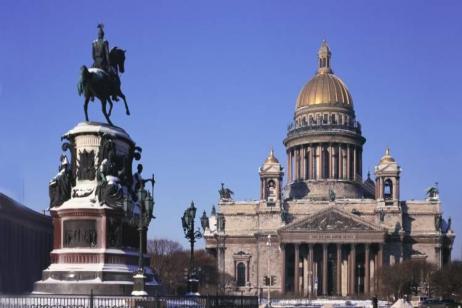
New Year's in Moscow - 9 days
Flights & transport:, itinerary focus:.
- Take in the highlights of St Petersburg including a guided tour of the exquisite Church on Spilled Blood, Peter & Paul Fortress and Cathedral
- Take a guided tour of the remarkable Hermitage Museum at the Winter Palace
- Visit Catherine Palace at Tsarkoe Selo on Christmas Day and marvel at the incredible Amber Room
- Spend a night in Novgorod, an ancient city by the Volkhov River - explore the kremlin, cathedral and other sights and enjoy a traditional Russian banya (sauna)
- Discover Moscow's UNESCO-listed Red Square, home to spectacular St Basil’s Cathedral, Lenin's Mausoleum and the historic GUM Department store
- Explore the grounds of Moscow's mighty Kremlin, with its numerous government buildings, gold-domed cathedrals and the giant tsar bell
- Ring in the New Year in Moscow, Russia's hedonistic capital
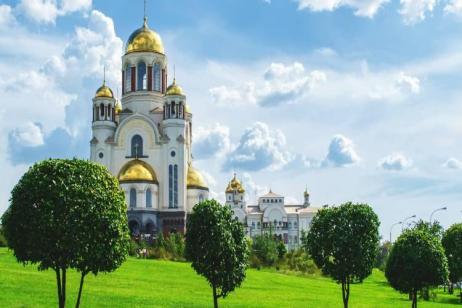
Route of the Romanovs - 10 days
- Learn about the last days of the Romanovs in Yekaterinburg, visiting the sites where Tsar Nicolas II and his family were assassinated and buried
- Straddle two continents at the famous obelisk Europe/Asia border marker in Yekaterinburg
- Experience the Trans-Siberian railway on an overnight train journey from Moscow to Yekaterinburg
- Explore the beautiful city of St Petersburg, including the exquisite Church on Spilled Blood, Peter & Paul Fortress and Nevsky Prospekt
- Marvel at the dazzling array of art and exhibits in the world-famous Hermitage Museum, at the Winter Palace in St Petersburg
- Discover a lavish residence of the tsars on a day trip to Catherine Palace at Tsarkoe Selo (winter: mid-October to April) or Peterhof Palace and gardens (summer: May to mid-October)
- Take in the highlights of the capital on a walking tour, visiting Moscow's famous Red Square, home to the historic GUM Department Store, Lenin’s Mausoleum and spectacular St Basil’s Cathedral
- Take a guided tour of the Moscow Kremlin, Russia’s political power house. Stroll around the grounds of this fortified complex, visit the Kremlin's cathedrals and see the mighty Tsar Bell

Russian Revolution - 9 days
- Visit historic Novgorod, an ancient city which straddles the Volkhov River. Explore the attractive riverside kremlin and experience a traditional Russian banya (sauna)
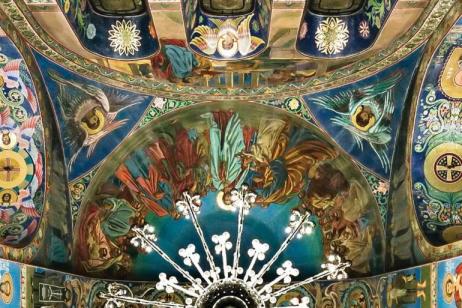
Imperial Waterways of Russia (2021)

Discover Russia - 9 days
- Experience the delights of rural Russia in the picturesque riverside town of Suzdal. See the ancient Kremlin and UNESCO Listed monasteries, visit the fascinating Museum of Wooden Architecture and sample a traditional Russian banya (sauna)
- Visit the quaint riverside city of Yaroslavl with its impressive skyline of onion shaped domes. Explore the city on a coach tour and enjoy a wood painting class
- Uncover the Golden Ring town of Kostroma, with its ancient churches and monasteries, and visit the Snow Maiden's house with its Ice Room and Ice Bar
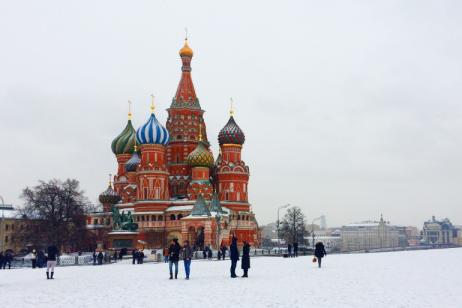
Royalty, Revolution and Rebirth in Moscow and St. Petersburg
- Experience the refined culture of St
- Petersburg at the Hermitage, the czars’ Winter Palace, Catherine’s Palace, the Fabergé Museum and at a ballet performance
- Immerse yourself in the intellectual and political history of Moscow at some of the nation’s most important institutions, museums and monuments
- Learn about Russia’s pivotal events through the people who lived them: a former Russian cosmonaut, a survivor of the 900-day siege of Leningrad and others
Want a tailor-made trip instead?

Moscow, St Petersburg & the Golden Ring

- I like to spend much of the day exploring
- Whether walking through historic neighborhoods at a moderate pace or out and about on a coach, I prefer to keep my days full
- Stairs don’t bother me, and I love to keep up with the group

Northern Lights
- A fully tailor-made program according to your interest;
- Your professional local guides and drivers;
- Touch history in the red-walled Kremlin of Moscow and cobblestone Red Square with your experienced guide in the capital of Russia;
- Take part in a cooking class of the authentic Russian borsch, traditional pelmeni (dumplings) and thin blini pancakes;
- Feel as a true Russian on a troyka ride around the scenic winter park, followed by a vodka tasting in the Vodka museum;
- Witness the untouched beauty of the Karelia at the Ruskeala Mountain Park and the Marble Canyon;
- Experience the unforgettable trip on the hovercraft over the frozen lake on your way to Kizhi Island;
- High likelihood of seeing the Aurora borealis dancing over your head in the Nothern lights seeking tour.
Member Savings
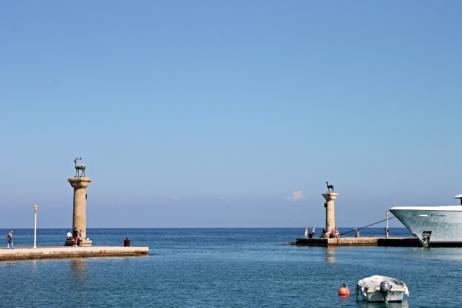
Russia’s Royal Riverways

Moscow to St Petersburg
- Visit the Kremlin and Kremlin Armoury
- Tour of Moscow
- Highlights of Uglich
- Tour of Yaroslavl
- Visit the Kirillo-Belozersky monastery
- Open-air museum on the island of Kizhi
- Tour of Mandrogi
- Sightseeing tour of St Petersburg
- Visit The Hermitage Museum

A New Russian Route
- City tour in St. Petersburg, Moscow and Kazan
- Excursion: Visit to Peterhof Palace in S. Petersburg
- Visit Hermitage Museum, a fantastic art museum
- Explore Moscow
- Visit the majestic Cathedral of the Assumption that forms part of UNESCO’s World Heritage
- Explore Kazan, the Tartar capital and a city with just over a million inhabitants
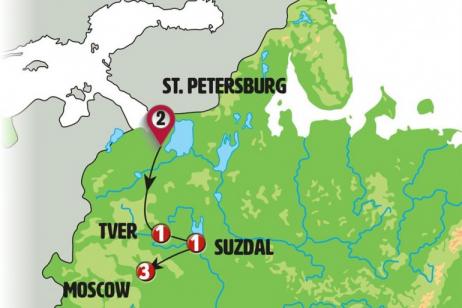
Classical Russia
- Visit St. Petersburg. Catherine Palace
- Visit Hermitage Museum, a fantastic art museum located in the building that was the Tsars’ Winter Palace
- Explore Novgorod, an exciting city that was one of Russia’s most important political and cultural centres
- Sightseeing of Suzdal
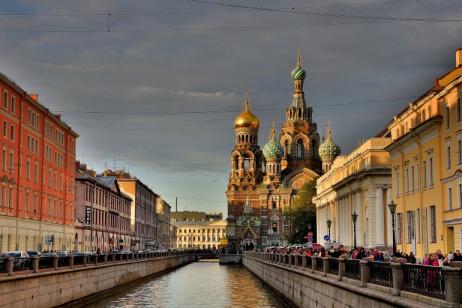
The Soul of Russia
- Visit UNESCO World Heritage Site - the brilliant architectural complex of the Kremlin
- Visit Moscow
- Explore the architectural complex of the Cathedral of St. Dimitriy
- Views at Sparrow Hills
Related Trips & Tours
Moscow reviews & ratings, why travelstride, always find the best.
Find and compare Moscow Tours from as short as 4 days to as long as 24 days. Travelstride searches over 1,000 websites and companies so you don't have to and found 60 Moscow Tours offered by 45 travel companies. 28 people reviewed these Moscow Tours.
In order to see Travelstride Select deals you must sign in. We’ve negotiated with many of the world’s best travel companies to save you money! Get the best experiences, save up to $700 per person, and be a hero to your travel companions!
We respect your privacy and take great care to protect your information. By joining you agree to our Privacy Policy and Terms of Use .
With FREE membership you:
- Save up to $700 per person!*
- Access private deals and offers
- See personalized trip recommendations
- Save favorite trips
Top Moscow Attractions
Top activties in moscow.
Click to send a new magic link to your inbox.
Welcome back!
By signing in, you agree to our Privacy Policy and Terms of Use
- Bookmark trips you like
- Share with your travel companions
- Track price changes
- Access private discounts on trips you save
TripFinder is a member-only feature. Dont worry, its free!
With a membership you:
Just use the email address and password provided in the email we sent.
With your free membership you:

Your travel guide dog
Searching thousands of trips by hundreds of tour companies...
Fetching your trip.
Just a moment, Rover is fetching your perfect trip.
THE 5 BEST Moscow Safaris
Safaris in moscow.
- Adrenaline & Extreme Tours
- Gear Rentals
- Nature & Wildlife Tours
- 5.0 of 5 bubbles
- District Central (TsAO)
- 3rd Transport Ring (TTK)
- District North-Eastern (SVAO)
- District Eastern (VAO)
- District South-Western (YuZAO)
- Lomonosovskiy
- Ostankinskiy
- Meshchanskiy
- Krasnoselskiy
- Maryina Roshcha (Jewish Quarter)
- Good for Couples
- Good for Kids
- Good for Big Groups
- Adventurous
- Budget-friendly
- Good for a Rainy Day
- Hidden Gems
- Honeymoon spot
- Good for Adrenaline Seekers
- Things to do ranked using Tripadvisor data including reviews, ratings, photos, and popularity.

1. Rybokhotsoyuz

2. Easy Russia Tour Guide
3. UTS GROUP

4. 365AltaiMongolia

5. #1 Russia -Tanzania | Zanzibar, Serengeti Safari & Kilimanjaro Agency | BURIGI CHATO SAFARIS CO LTD

6. Aviashop.Ru

7. Transsib Moscow

8. BASK TOUR

Kremlin & Red Square
The very founding site of the city (and arguably, the country), the Kremlin and Red Square are still at the heart of Moscow – historically, geographically and spiritually. Feel the weight of this significance as you wander within the walls of the ancient fortress, marvel at the mind-boggling magnificence of St Basil’s Cathedral and pay your respects to the revered leader of a now-defunct state. Moscow will move you. It will tantalise your senses, soothe your spirit and boggle your mind – and it all starts right here at the Kremlin and Red Square.

Communist History
The remains of the Soviet state are scattered all around the city. Monuments remember fallen heroes and victorious battles, while museums attempt to analyse and synthesise the past. See Lenin and Stalin – off their pedestals – at the whimsical Art Muzeon. Step into the socialist-realist fantasy at VDNKh. Descend into the depths of the Soviet system at Bunker-42 Cold War Museum. Ride the museum-like metro and remember the millions who suffered at the Gulag History Museum. Nowadays, retro clubs and cafes give their guests a taste of the Soviet experience. You can even try your hand at Soviet-era arcade games.
As you leave Moscow, the fast-paced modern capital fades from view and the slower-paced, old-fashioned countryside unfolds around you.
Performing Arts
What is more thrilling than watching a ballerina defy gravity, leaping across the stage at the glittering Bolshoi Theatre? Or feeling the force of Tchaikovsky’s 1812 Overture, just a few blocks away from where it premiered more than a century ago? Or oohing and aahing as circus performers soar under the big tent? The classical performing arts in Moscow are still among the best in the world. Nowadays, even the most traditional theatres are experimenting with innovative arrangements, reviving lost favourites and hosting world premieres. Whether you appreciate the classics or prefer the contemporary, the capital’s performing arts will impress.

Orthodoxy & Architecture
At nearly every turn in Moscow, you’ll see golden domes peeking out over the rooftops and hear church bells peeling through the streets, which are dotted with some 600 churches – many of which are glittering after recent renovations. There are colourful hidden gems, historic fortresses and gargantuan cathedrals. The exteriors are adorned with stone carvings and glittering domes; interiors are packed with ancient icons, swirling incense and faithful worshippers. For more than a millennium, Orthodoxy has helped to define the Russian nation, a significance that is palpable in these atmospheric spiritual places.
Destinations
- Victoria Falls – Zambia or Zimbabwe
- South Africa
- Family Holiday
- Beach Holidays
- Conferencing
- Service to Community
- Bird Watching
- Luxury Camping
- Flying Safaris
- Mountain Climbing
- Solo Traveler
- About Jacko
- Testimonials
- Our Transport
- Terms & Conditions
- Travel Information
- Accommodation
- Guests Album 1
- Water 4 Life – Site 1
- Water 4 Life – Site 2
- Frequently Asked Questions
Link Partners
- airkenya.com
- museums.or.ke
- serenahotels.com
- breezes-zanzibar.com
- elewanacollection.com
- trekafrikaartgallery.com
- hemingways-collection.com
Our Newsletter
Subscribe to our newsletter and get exclusive first minute offers straight into your inbox., subscribe to our newsletter and get exlusive first minute offers straight into your inbox..

Visit us on Social Networks

IMAGES
VIDEO
COMMENTS
However, there can be motion blur when capturing shots of wildlife running in the distance. For those searching for the best superzoom camera for safari, the Panasonic Lumix FZ80 and Sony RX10 IV are excellent picks. Taking photos on your smartphone is a good alternative if you're not in the mood to carry extra equipment.
Shutter Spee d. Capturing the essence of movement is crucial in safari photography, making shutter speed a vital setting. Opting for a faster shutter speed proves effective in freezing the motion of swift-moving animals. Typically, a recommended shutter speed of 1/1000th of a second or faster is advised for wildlife photography.
Shooting with the 100-400mm was easily the best camera gear for an African Safari that I used. When paired with the Canon 6D, autofocus was fast and accurate. With a f/4.5-5.6 aperture, it produces a nice bokeh and is plenty fast for everyday lighting conditions while on safari. There are strict restrictions preventing Safari tourists from ...
In this third portion of a four-part series, South African photographer Isak Pretorius shares his knowledge about optimizing your photo gear, and gives you shooting tips to consider, to help make the most of the variety of picture-making opportunities that await you during an African safari. Above Image: The sea of dunes in Namibia's ...
There is a lot of choice of good telephoto lenses for safari in the mid-range budget. Some good examples are Canon EF 70-300mm f/4-5.6 IS II USM or Canon EF 70-200mm f/4L USM. You can even choose a 2-in-1 solution - a lens that is wide enough for landscapes, but also has a telephoto zoom for animals.
Welcome to Part 2 of this three-part series on information for African photographic safaris. In Part 1, we discussed choosing a safari and the preparation for that trip. Here, in Part 2, we will look at how to prepare for the safari, photographically. ... It is a personal choice, but keep in mind, if you have all this electronic equipment, you ...
Packing photography gear for an African Safari may seem daunting at first. However, when done right you can bring a lot of camera equipment in a very lightweight package. Indeed, all the photography gear I brought on the African Safari in Zambia fit into a small backpack that easily fit under the seat in front of you on those tiny planes.
1. Invest in Quality Camera Equipment. The first of my African safari photography tips is to invest in quality camera equipment. Camera. There is always a huge discussion between mirrorless vs. DSLR cameras, and each has its pros and cons.
Ensure you have the right camera equipment for safari photography. Camera. Bring a DSLR (Digital Single Lens Reflex) camera and zoom lenses with 200-600 mm range or a quality compact camera for versatile quality wildlife photos. Safari photography on a smartphone is not the best option to photograph wildlife, but it is, of course, a great ...
Camera bags: Protect your equipment from the elements or wandering hands when not in use. Filters: Enhance colors and reduce glare during your photography session. Spare batteries and memory cards: Be prepared for long shooting sessions on your game drive. Consider an African Safari Photography Tour
For the safari enthusiast on a budget, it will take awesome photos for a lower price. 5. Nikon CoolPix B500. Capable of superzoom, this is a great point and shoot camera that can handle farther subjects. Capturing the African landscape is simple to do as well.
Layers work best on safari. Most mornings (any time of year) and evenings are cool and riding in an open vehicle is downright cold. Clothing with pockets are great because you can use them for extra camera batteries, memory cards, glasses, etc. while out in the field and not have to fumble about in your camera bag. 17.
Equipment for Safari Photography. No discussion of photography in a place like Africa would be complete without at least a mention of gear. I'll start right here: take two cameras. Africa is a dusty place, particularly during the dry season. Since most of your time will be spent in the back of an open safari vehicle, that dust is a double-whammy.
While Neil is based at The Hide, he's also available to guests at Changa Safari Camp. Neil can guide tours for groups or individuals, beginners and professionals alike. The fee for groups of 1-4 travelers to hire Neil is $420 per day (for a full day), including a private vehicle and guide, in addition to Niel.
Tip 1: Safari Photography Equipment Tips. Invest in a good SLR camera and a couple of lenses. The best camera set up for wildlife photography includes at least a 300mm lens, because anything less will just be frustrating. Ideally you should have 2 cameras as changing lenses is time-consuming when you might be missing the action.
Looking for safari photography equipment most people choose between DLSR and compact cameras. The former allow taking pictures that will look professional and ravishing. ... This African safari cam can reveal its full potential being paired with a lens equivalent to 21-1365mm in 35mm terms. The aperture maxes at f/3.4/ - f/6.5. The device ...
This lens will help you capture the vast landscapes during your African Safari. 7. If you're using a crop sensor camera, a superzoom lens like the 18-200mm f/3.5-6.3 can be a good option for safari photography. This lens will give you a wide range of focal lengths to choose from, making it a versatile option for safari photography. 8.
There are many types of African safaris, in numerous locations, ranging from simple camping to ultra-luxury. This particular safari is in Tanzania, focused (no pun intended) on photography. It's definitely on the luxury end of the spectrum. An intense 9 day trip, with daily photo excursions and daily mentoring classes will, I hope, extend my ...
Private Guided Tours. Allow one of our guides to create the ultimate and most exclusive safari experience for you and your group. Wild Eye offers photographic safaris, private guided expeditions and custom tours around the world. Established in 2012 Wild Eye set out to refresh the photographic travel and private guiding industries by focusing ...
USD $800.00. Add to Cart. Showing 1 - 358 of 7158 Results. 1. 2. 3. ... 358. View ProductsFor Sale from Cove Equipment.
11 days. $ 293 / day. Trip dates and details. Save. Compare. Experience the best of Moscow in 10 days. Itineraries and trips from 33 experts. Compare tours, packages, and independent trips for a 10 day Moscow vacation.
Good for. 1. Rybokhotsoyuz. 2. Easy Russia Tour Guide. An excellent and reliable service which made my trip mesmorizing with easy moscow. Especially Anna is a wonderful... 3. UTS GROUP.
kenya adventure safari [14 days] ultimate kenya safari [15 days] kenya & tanzania. soar in balloons [1 hours] beaches of east africa [6 days] cradle of mankind [14 days] grand east africa [18 days] tanzania. zanzibar island [6 days] tanzania explorer [7 days] best of tanzania [10 days] uganda. gorillas in mist [3 days] discover uganda [8 days ...